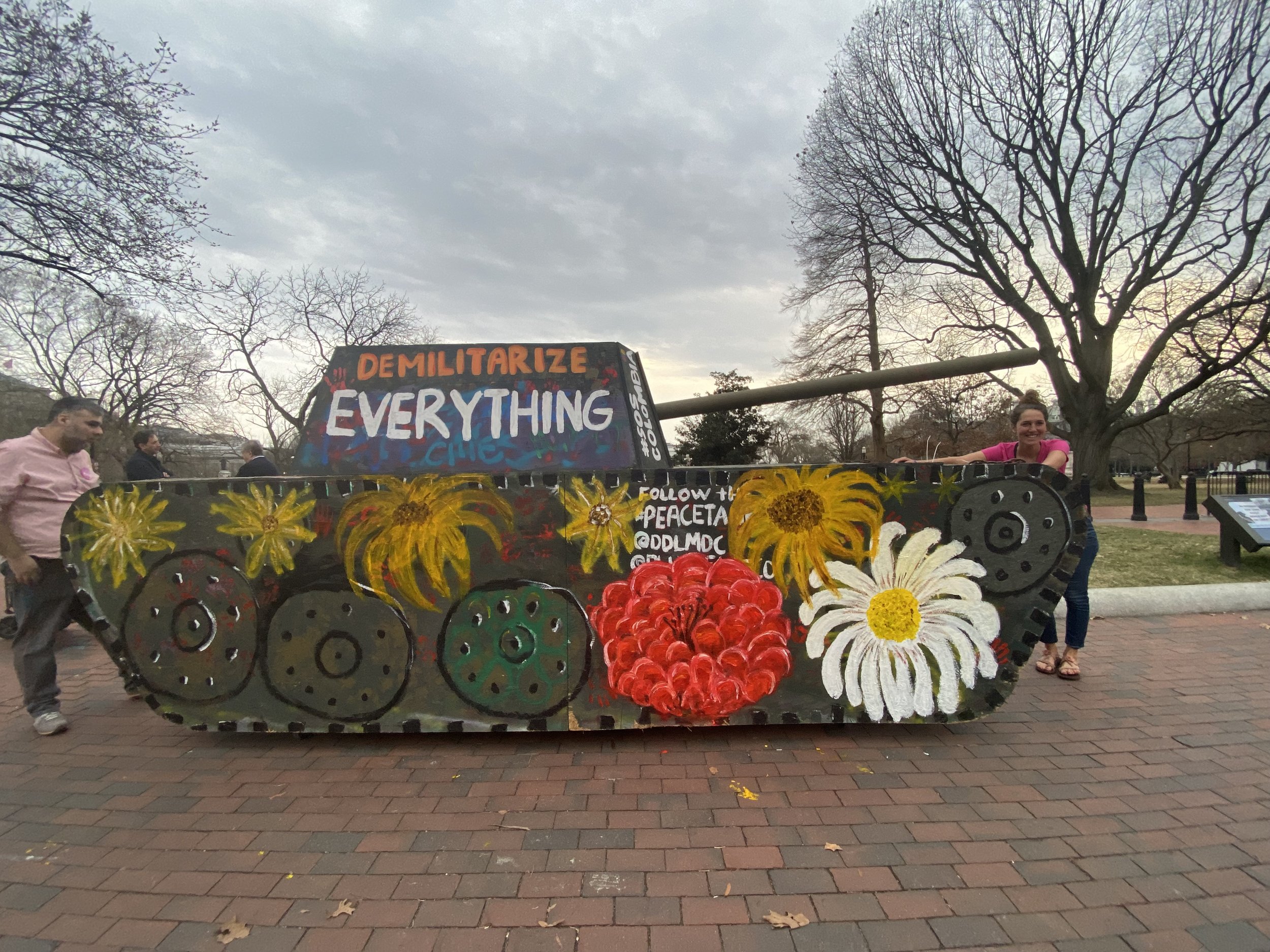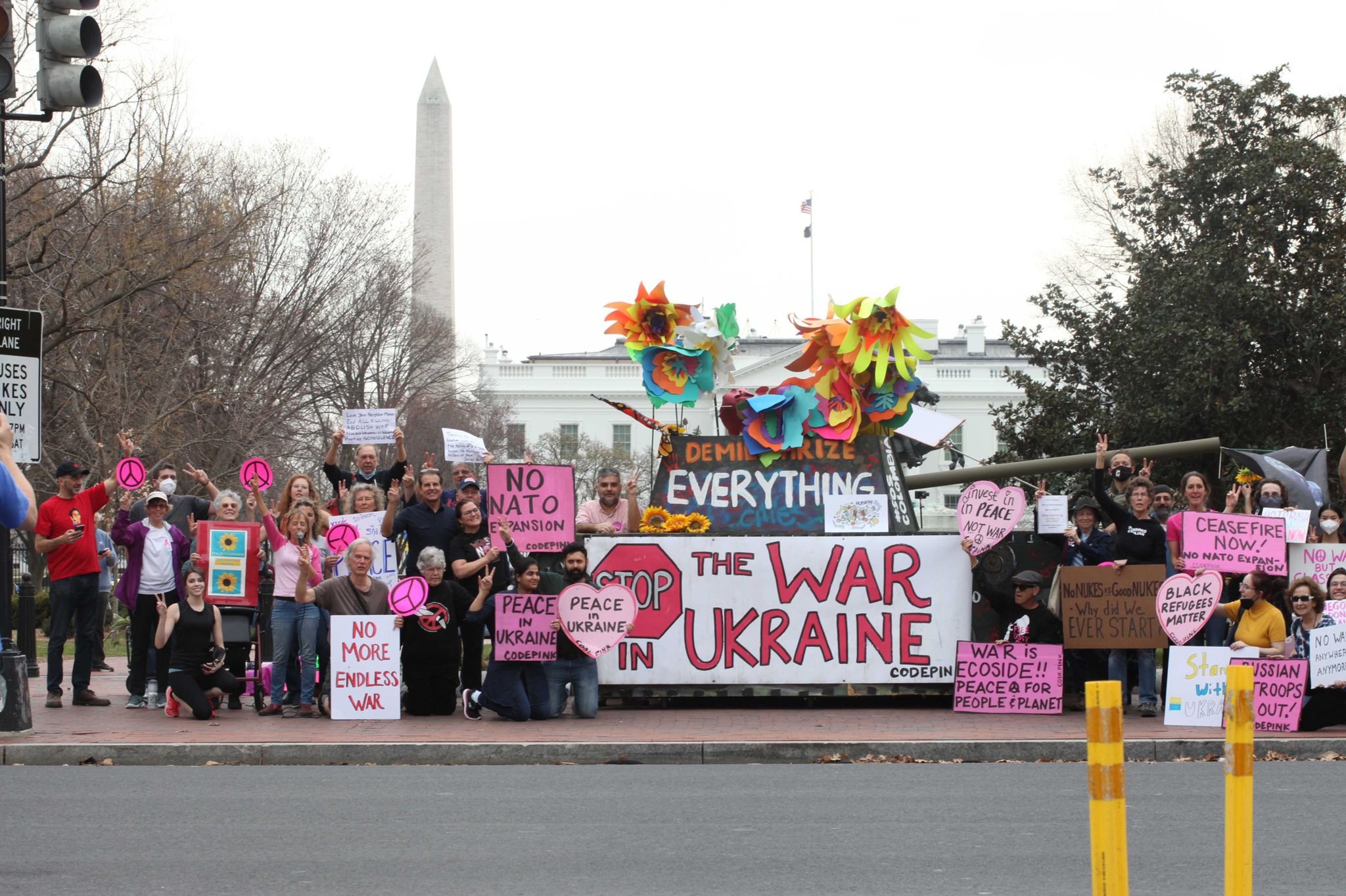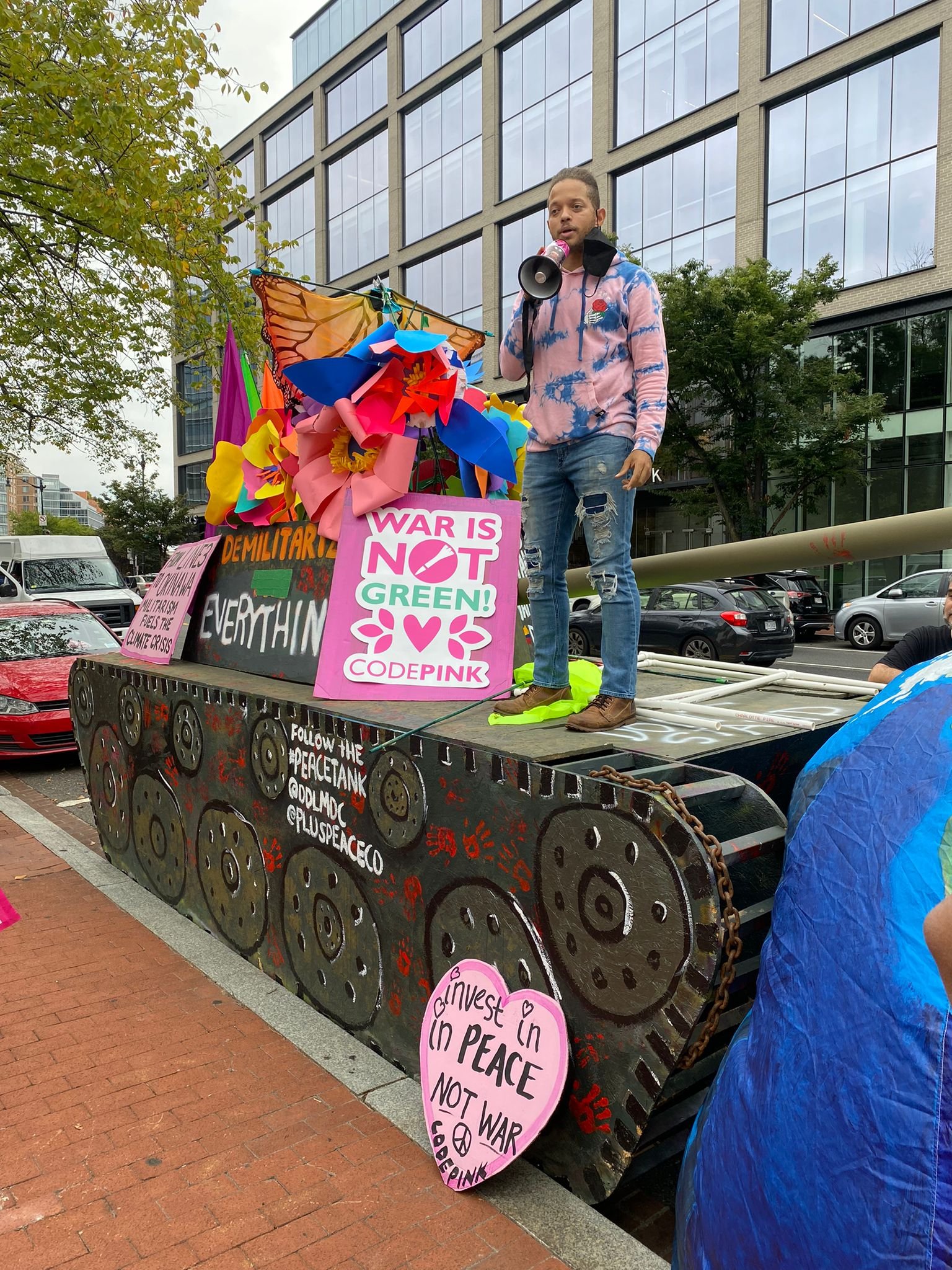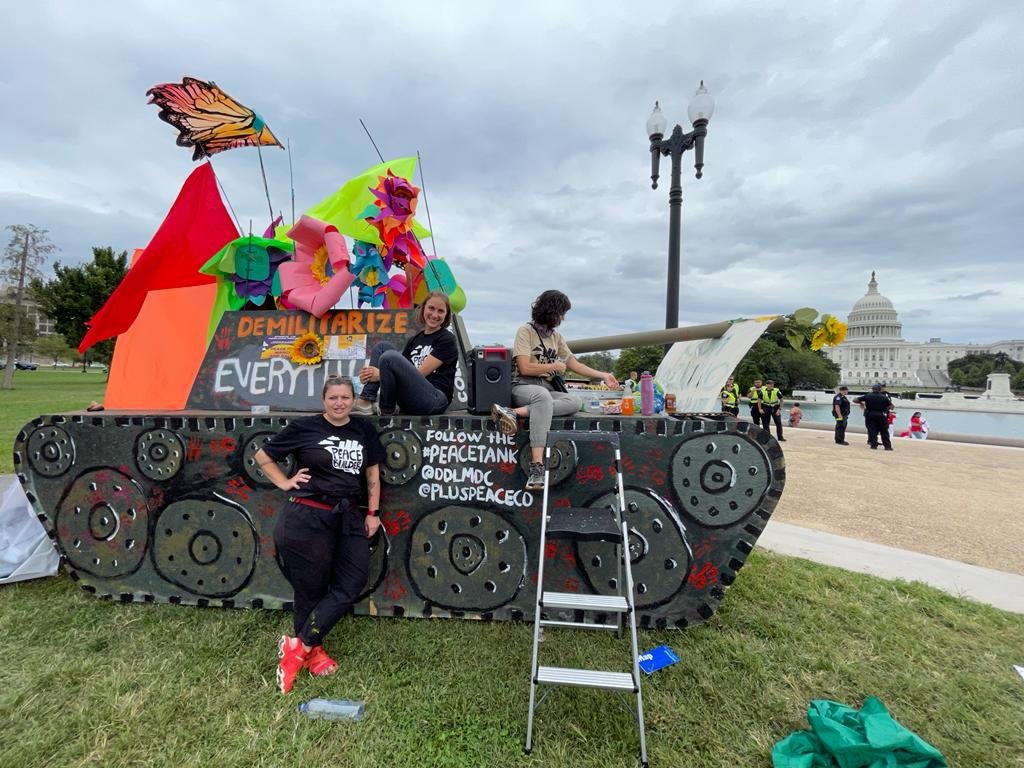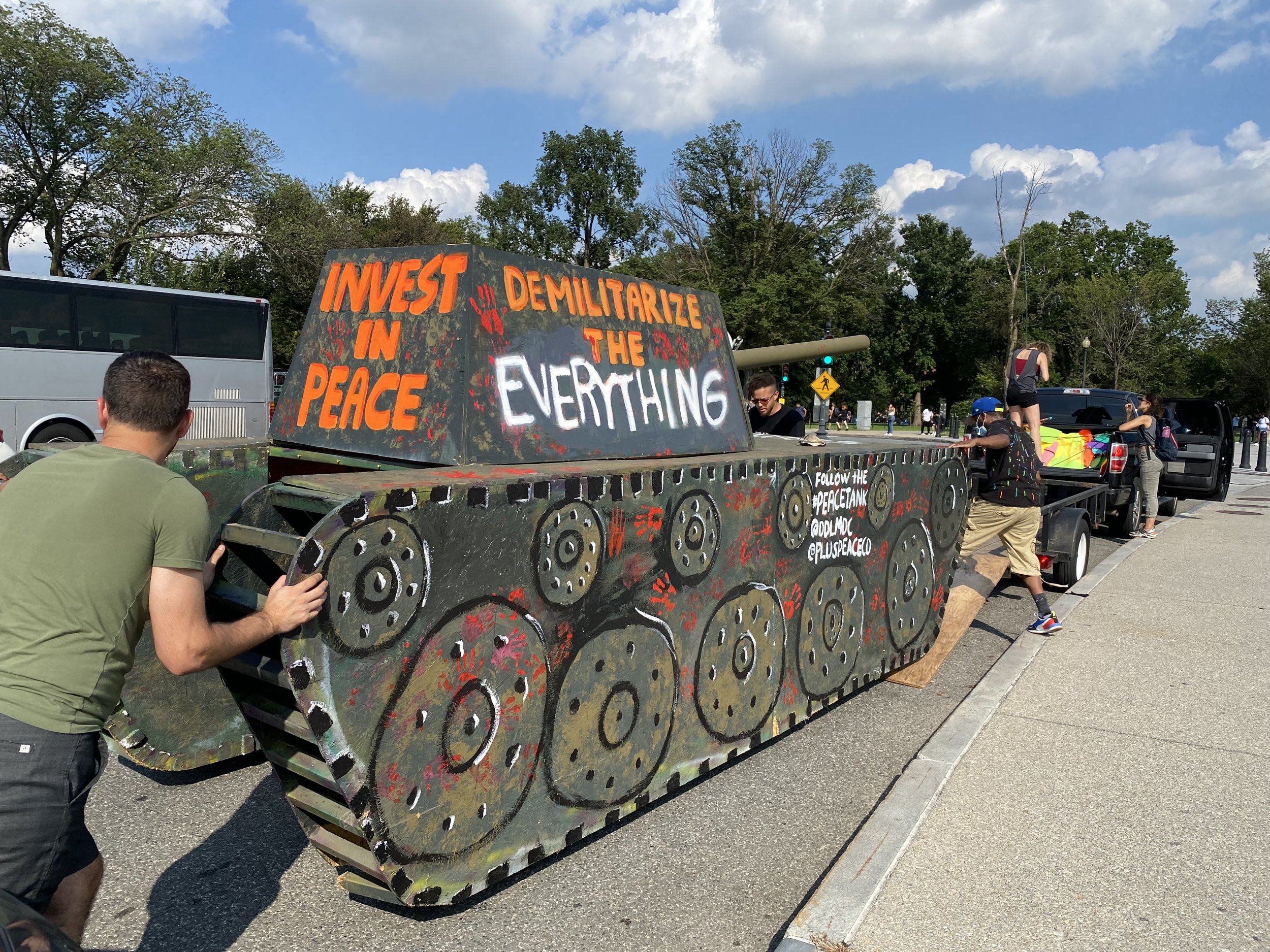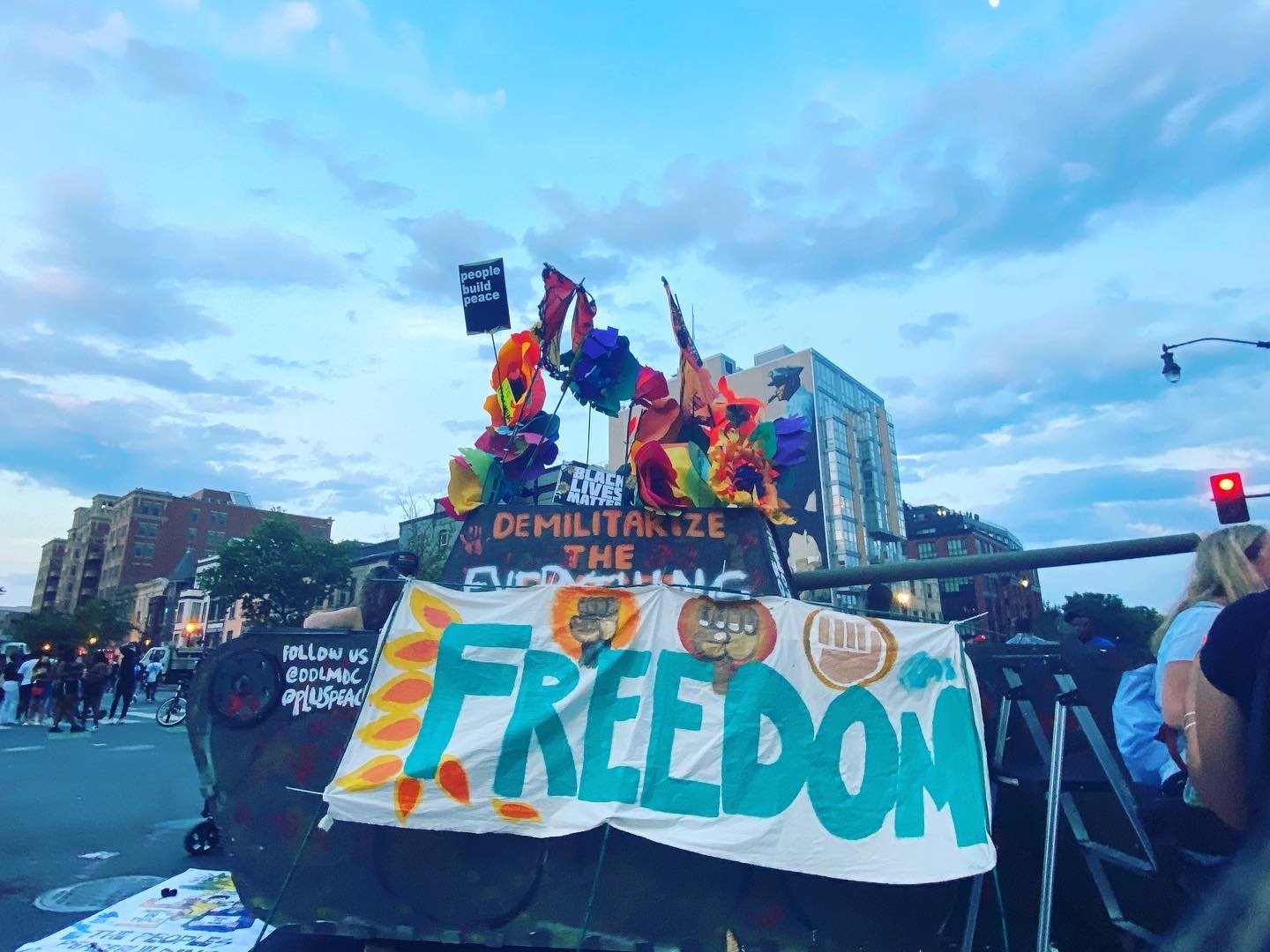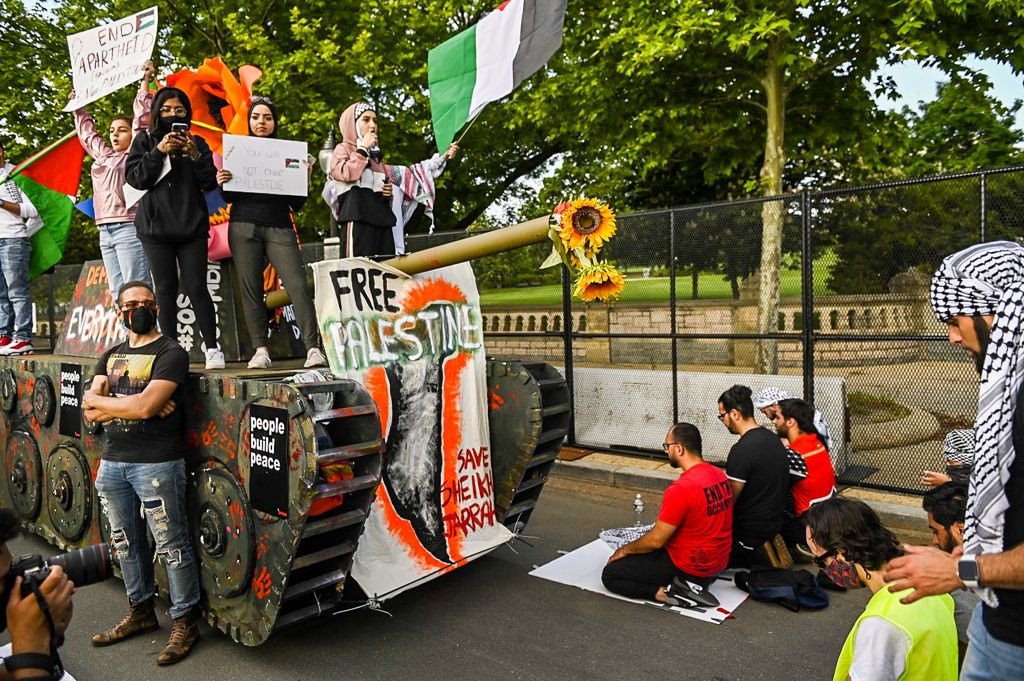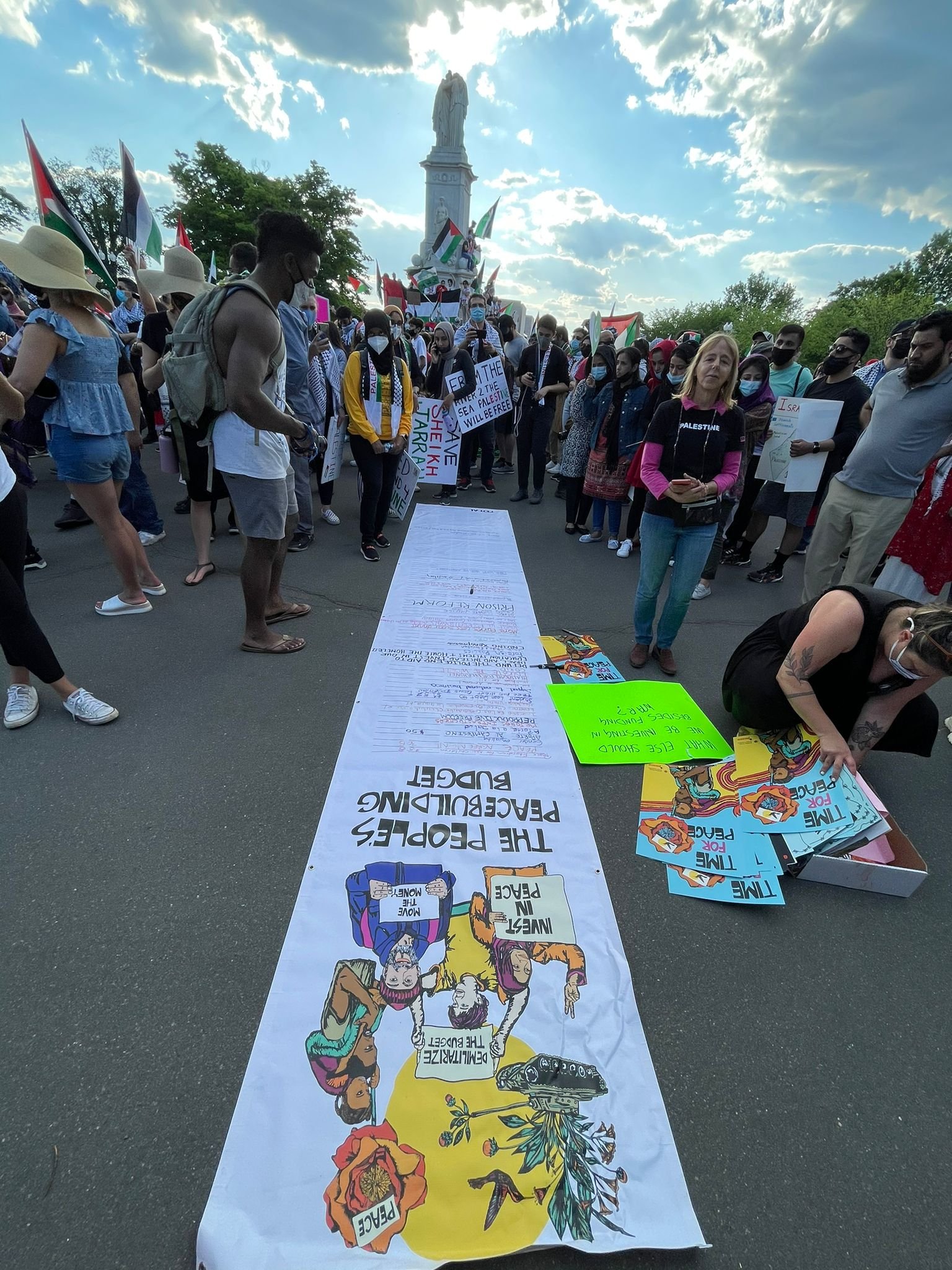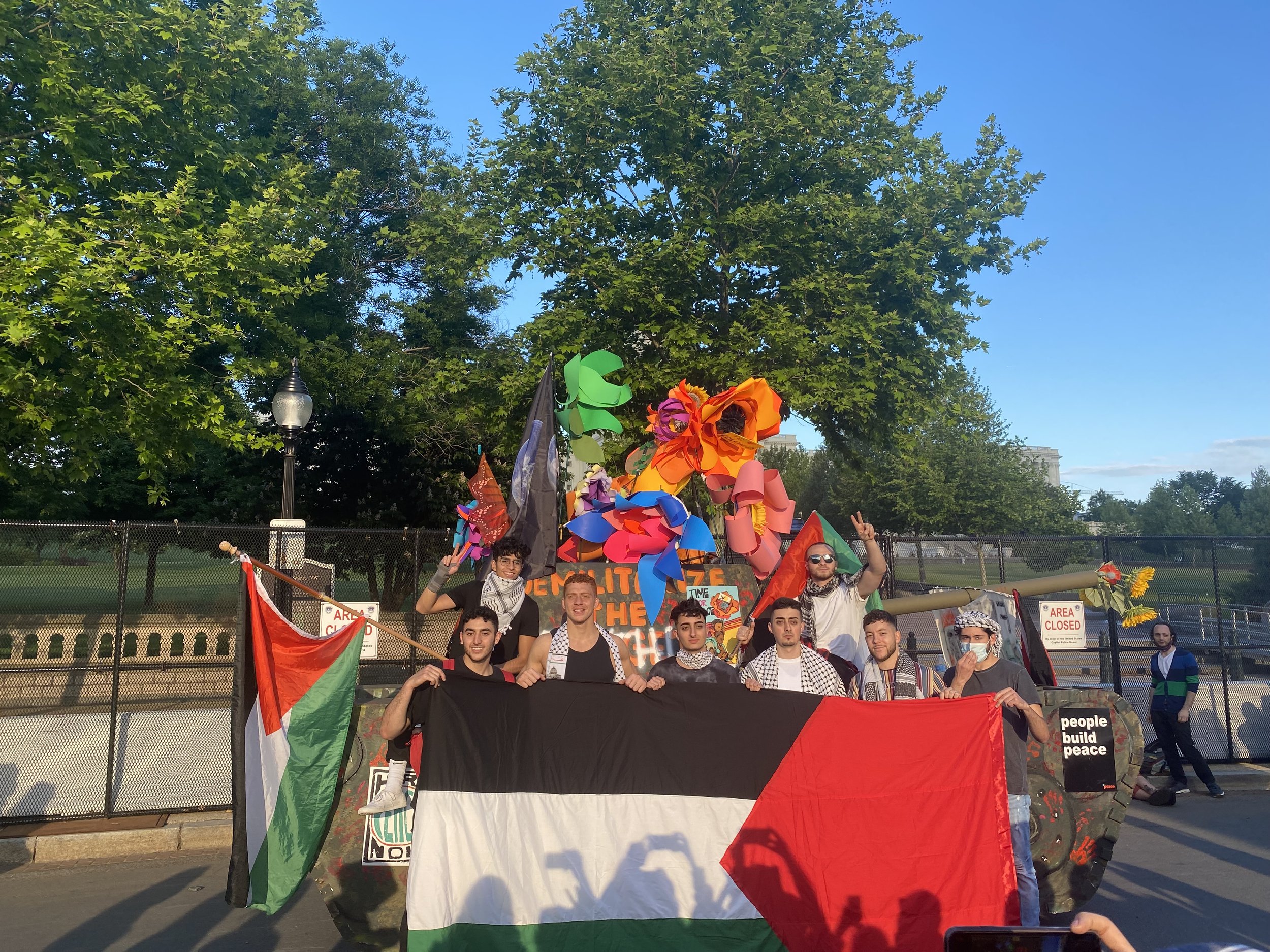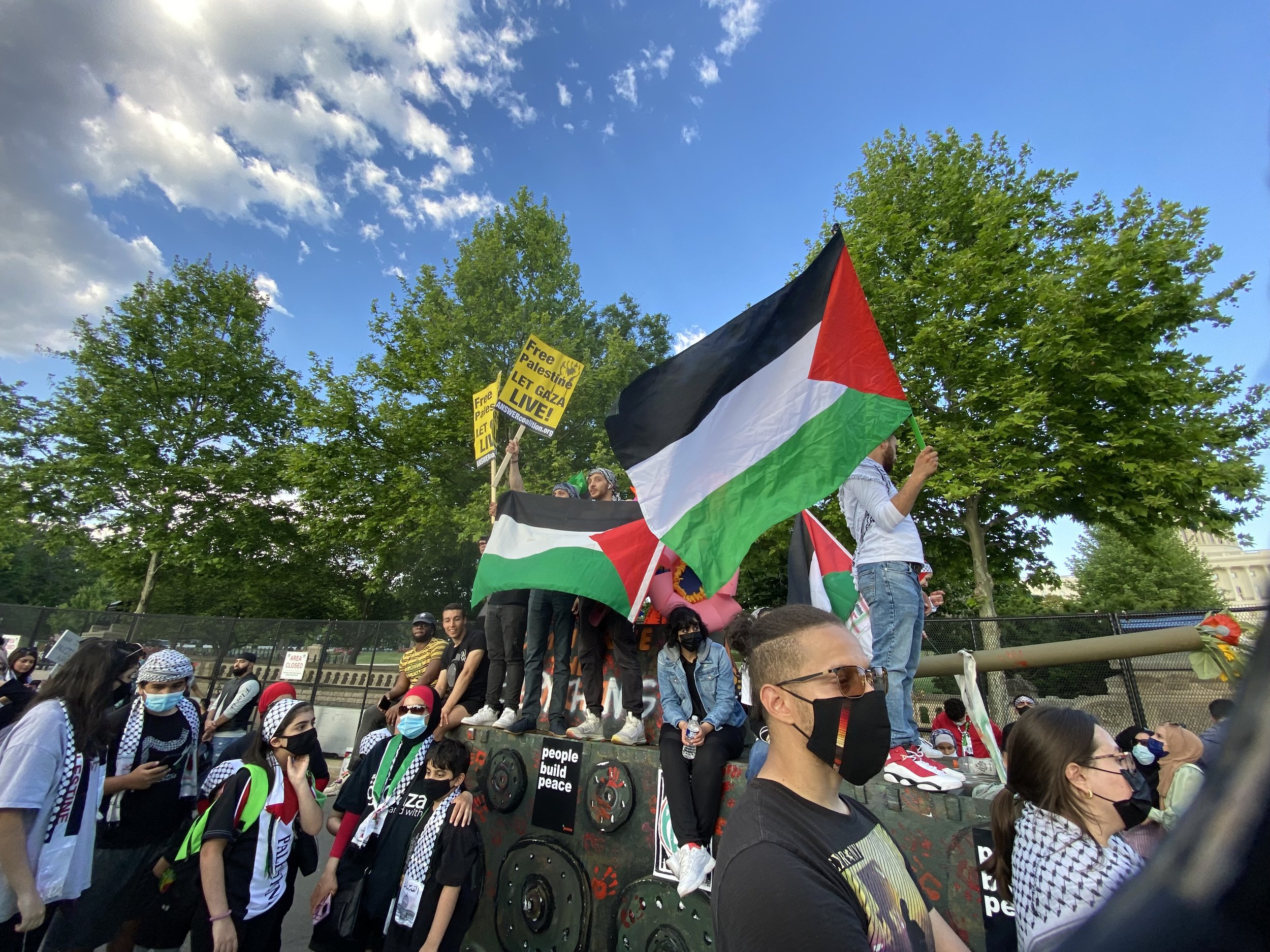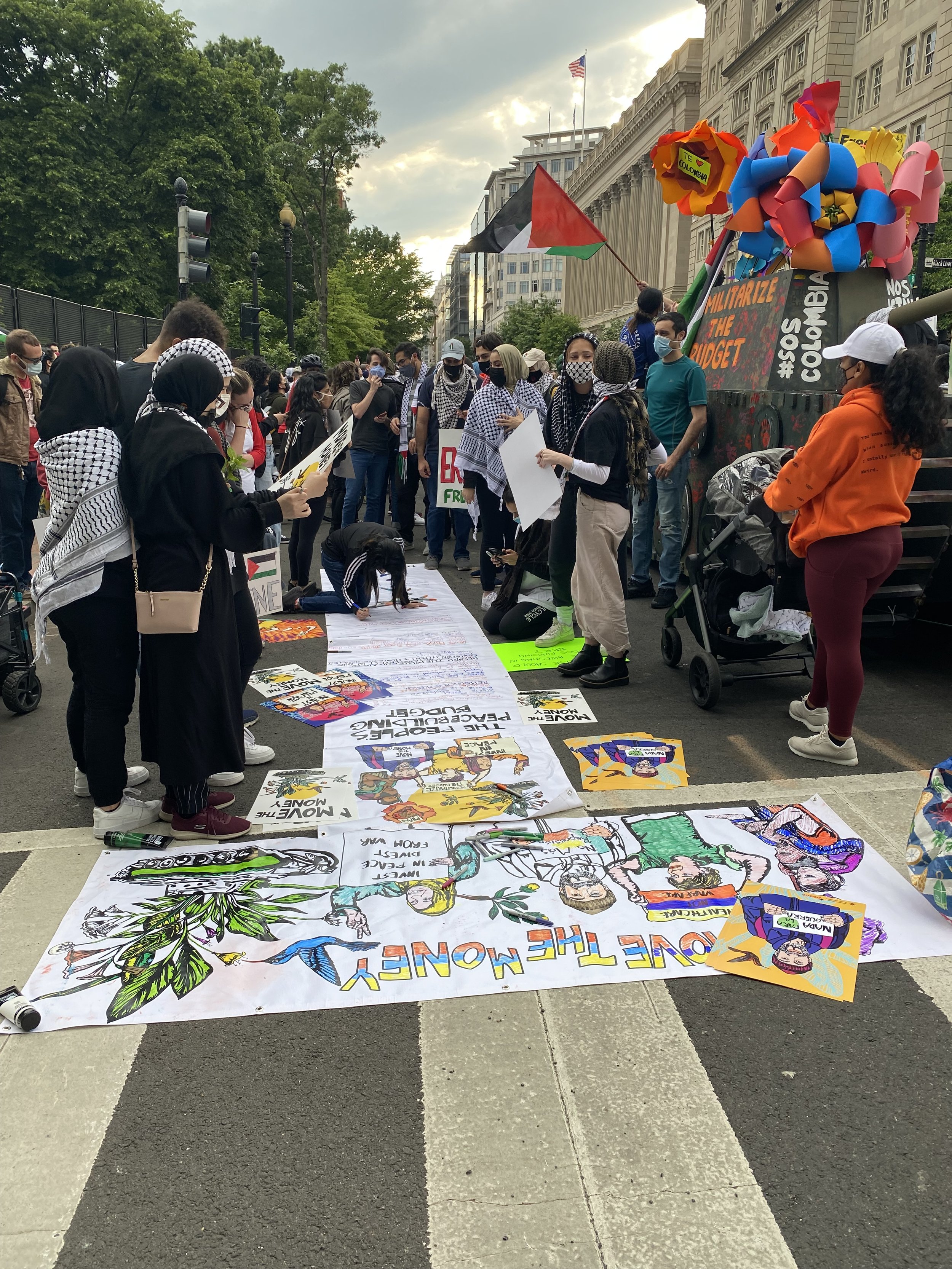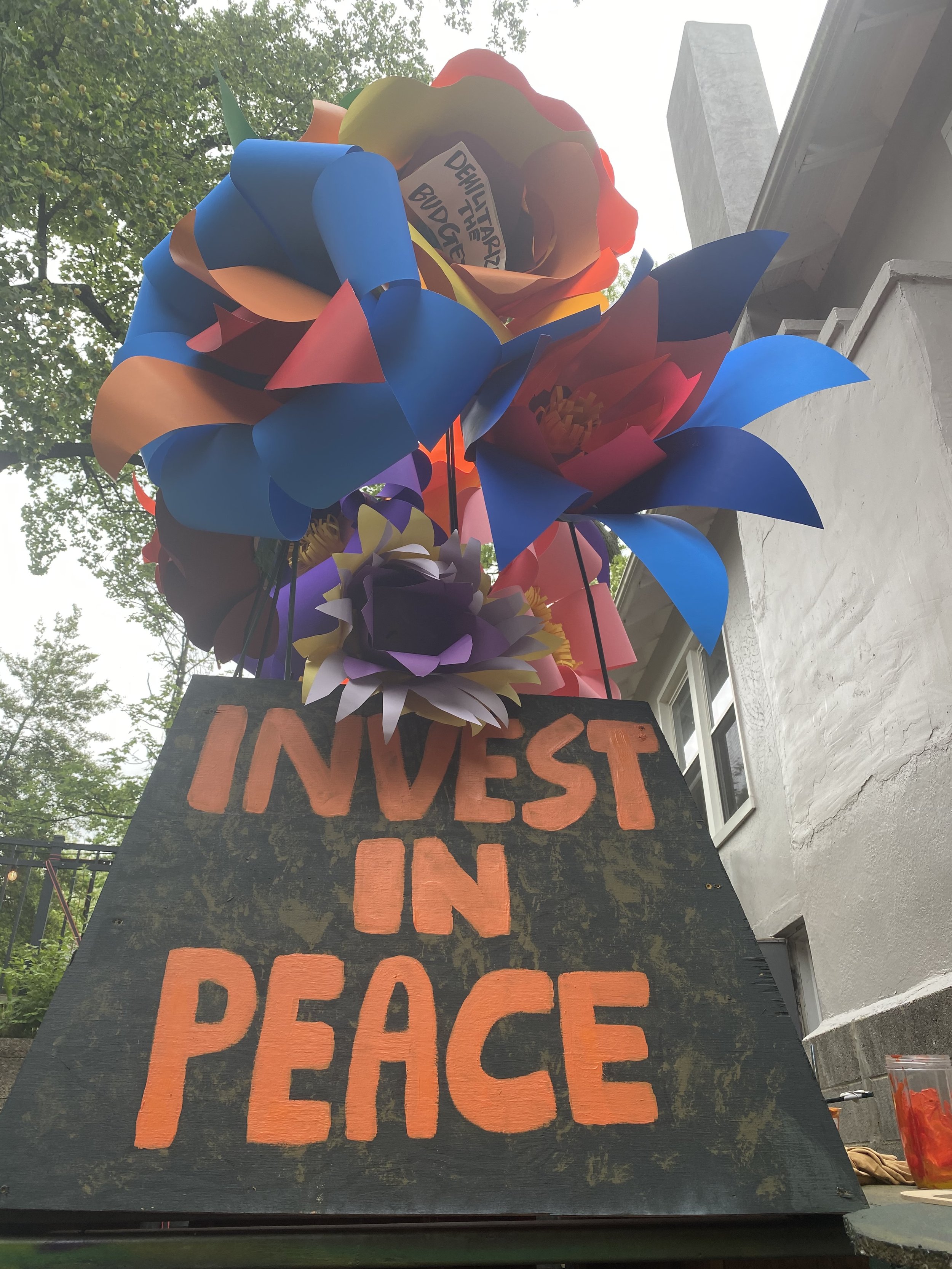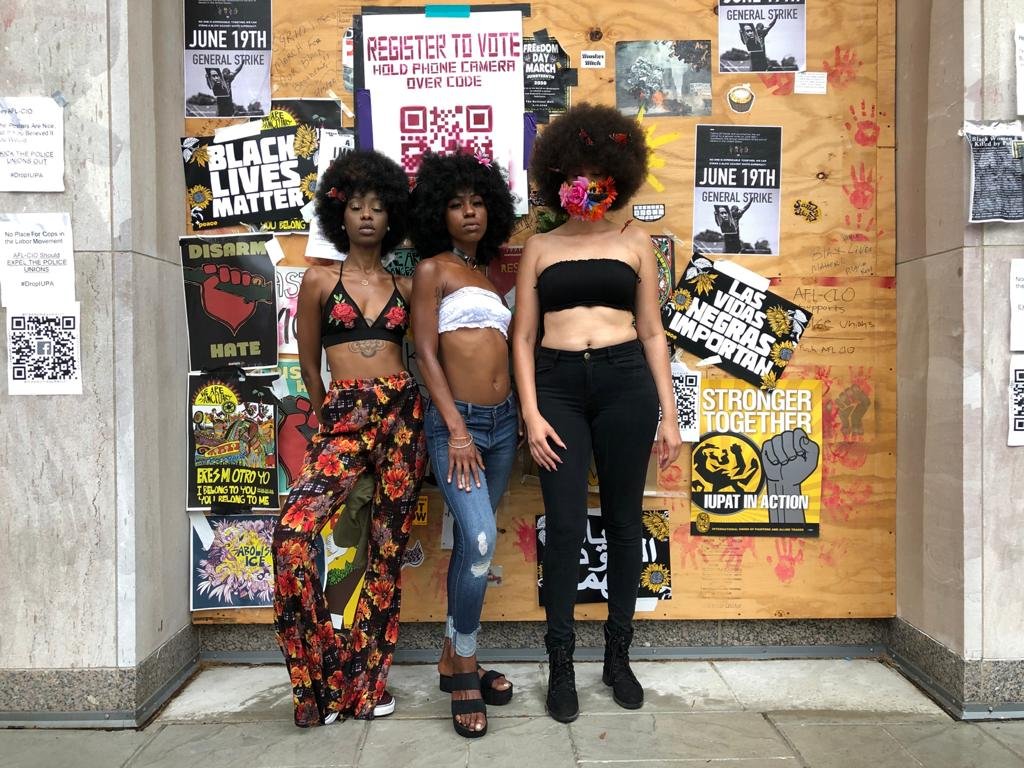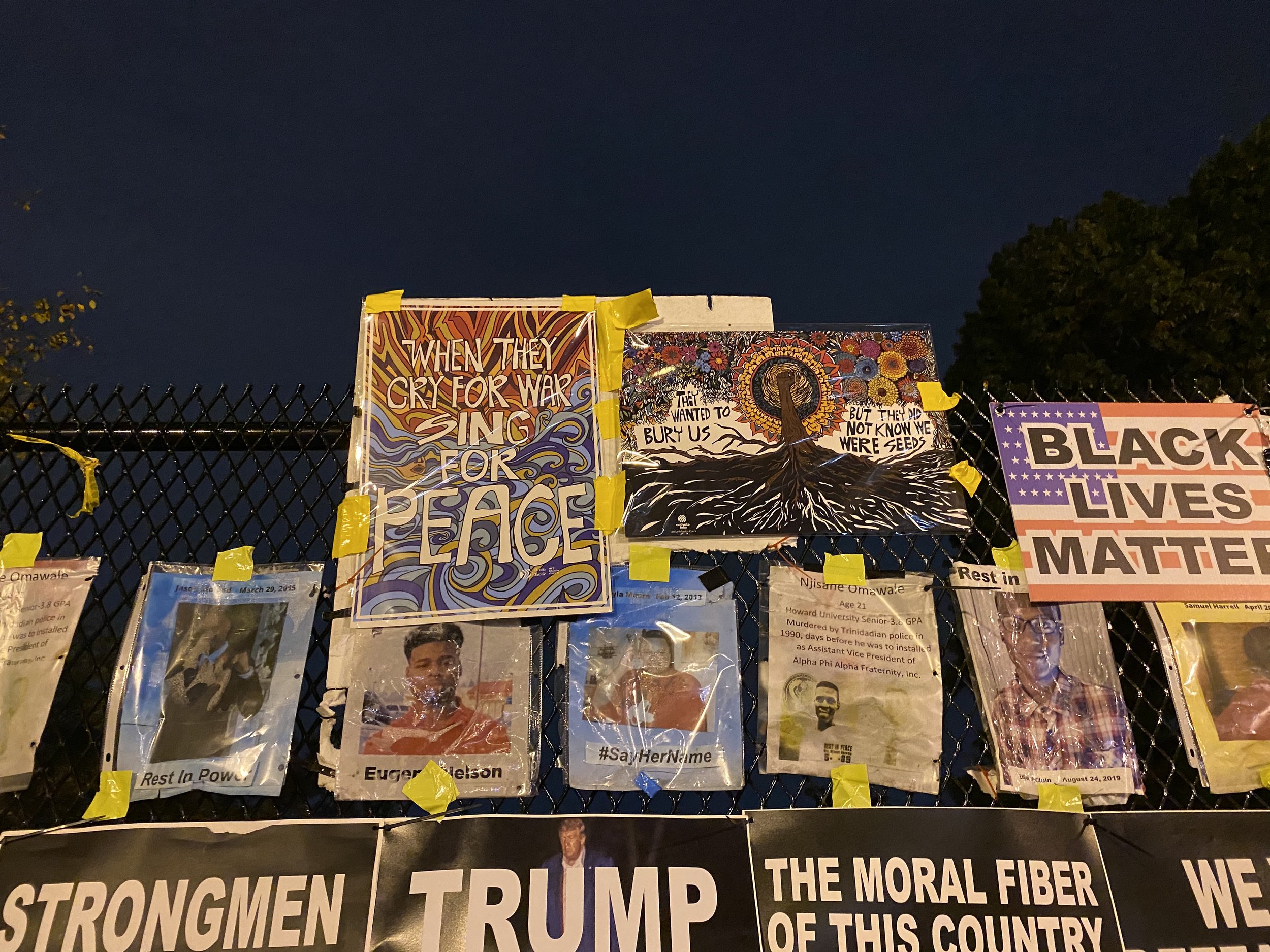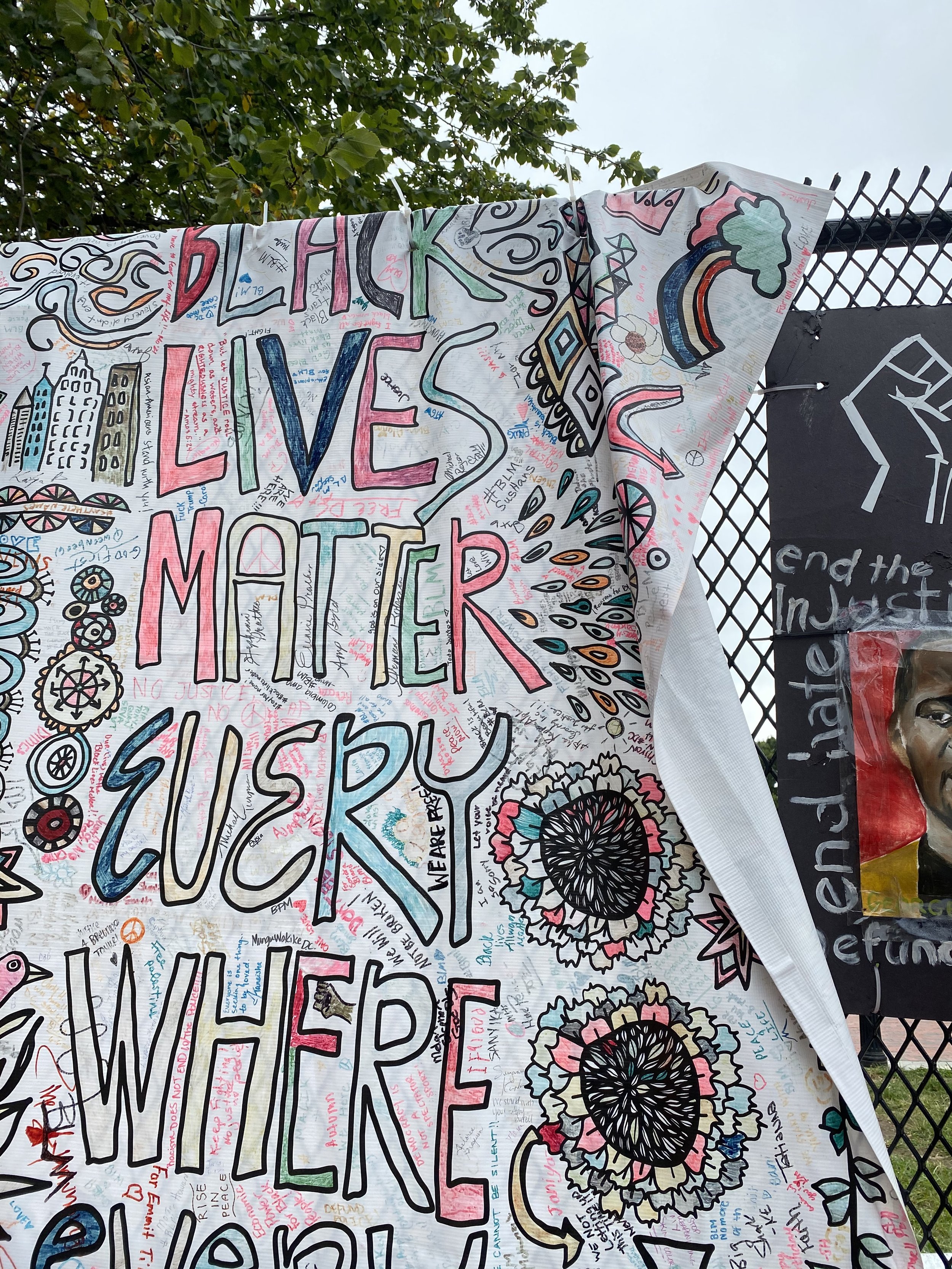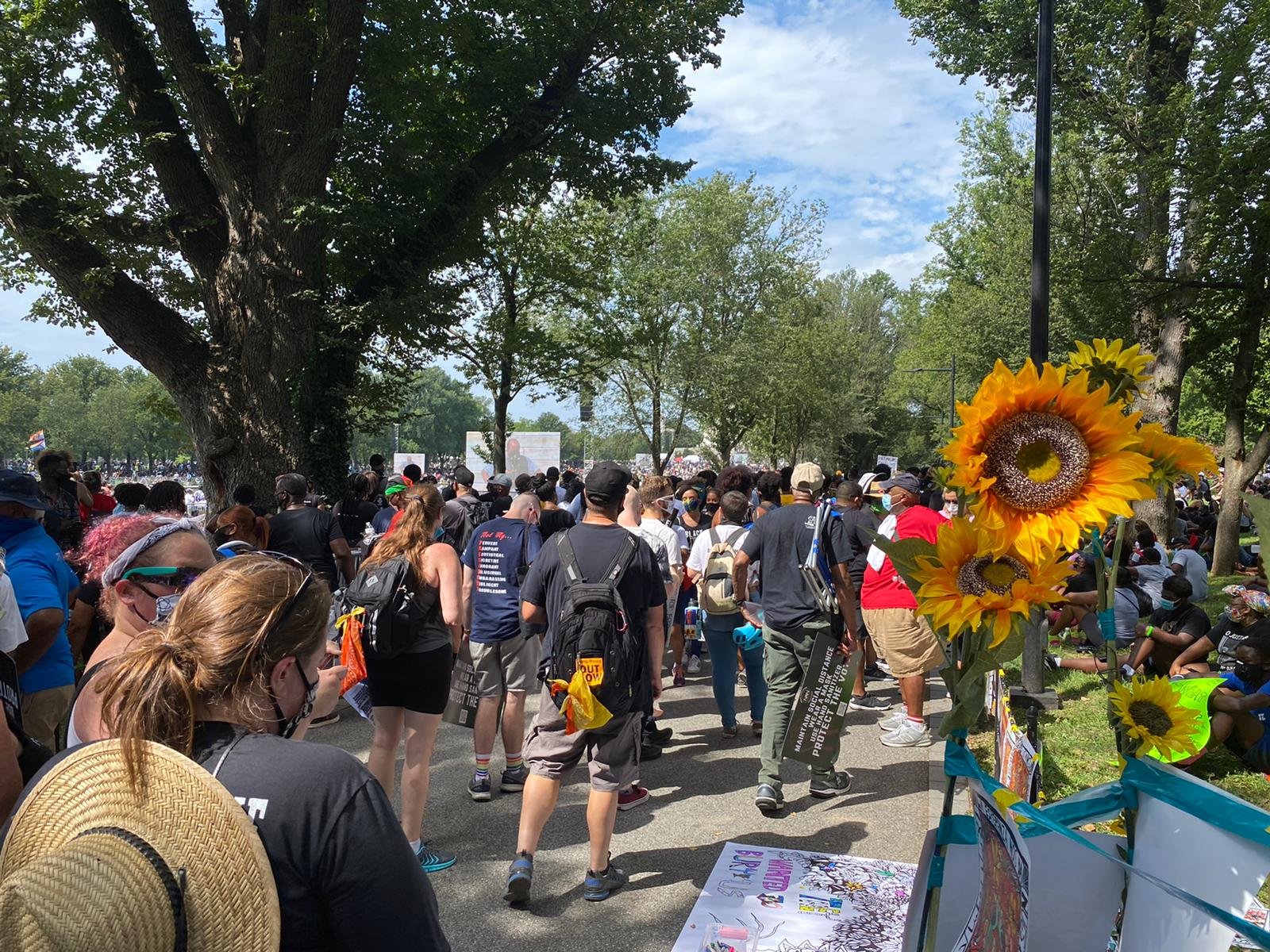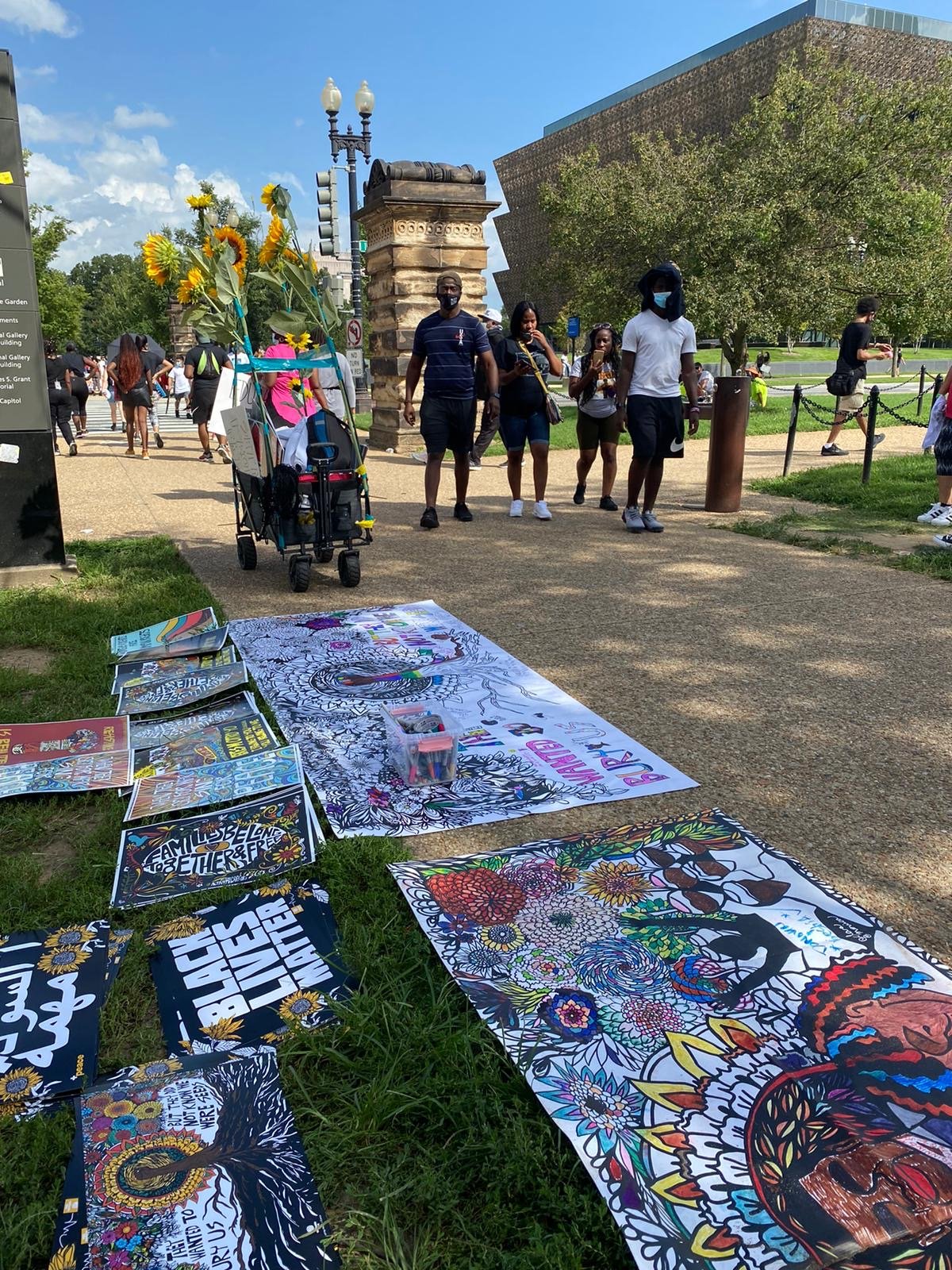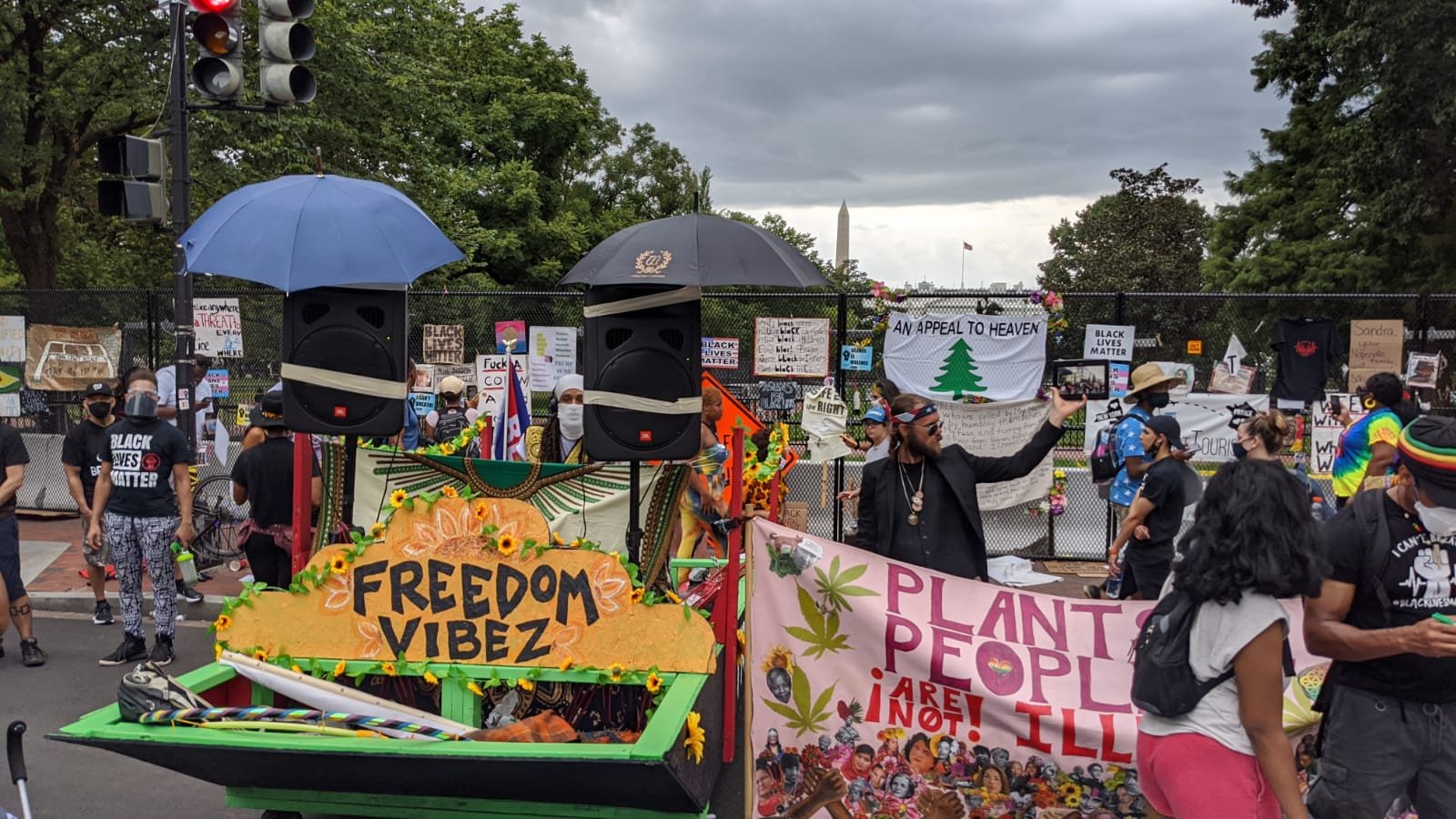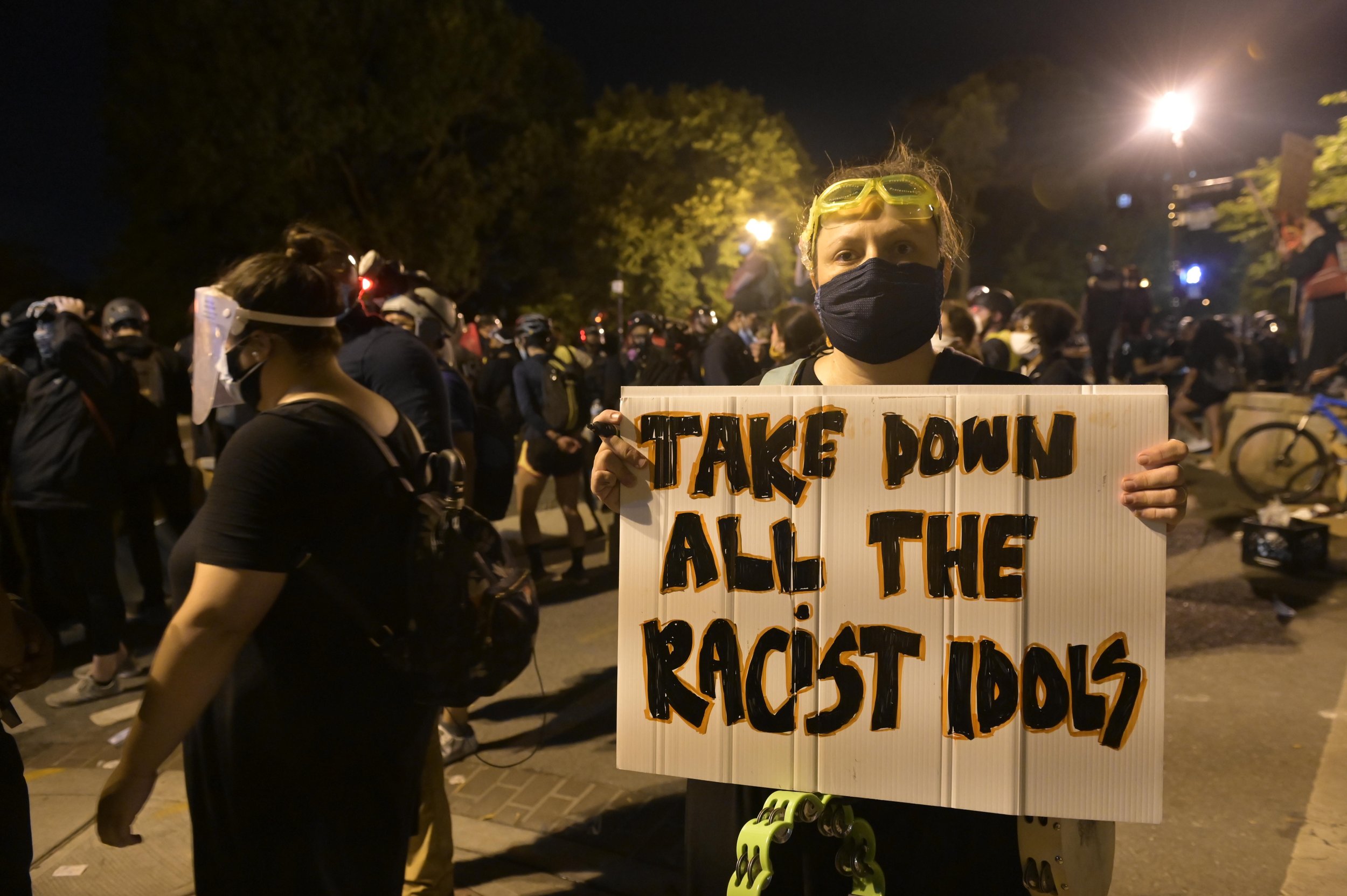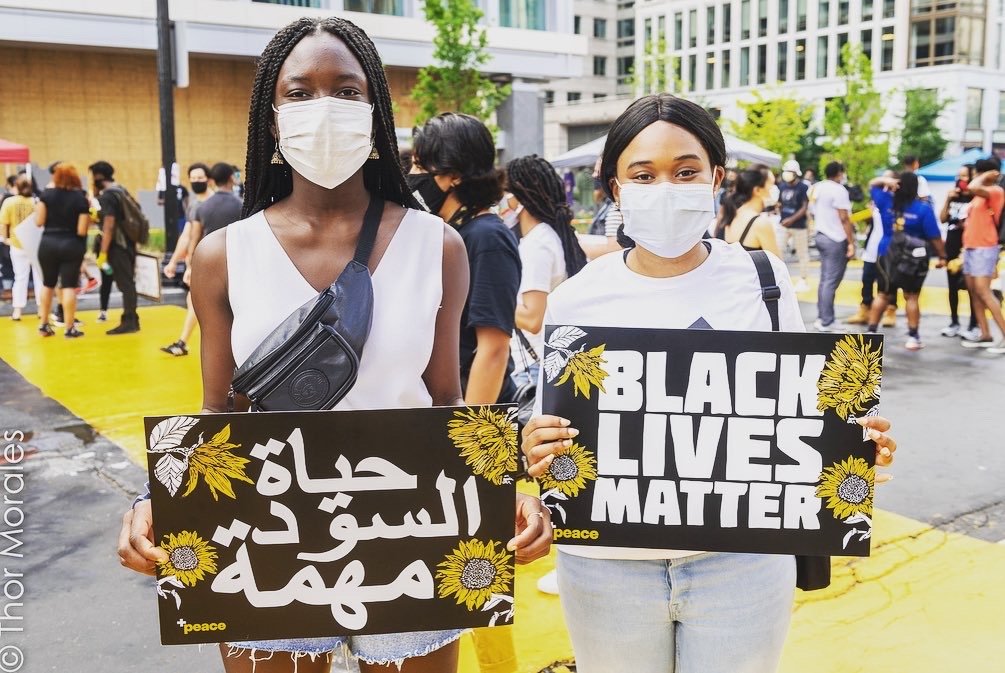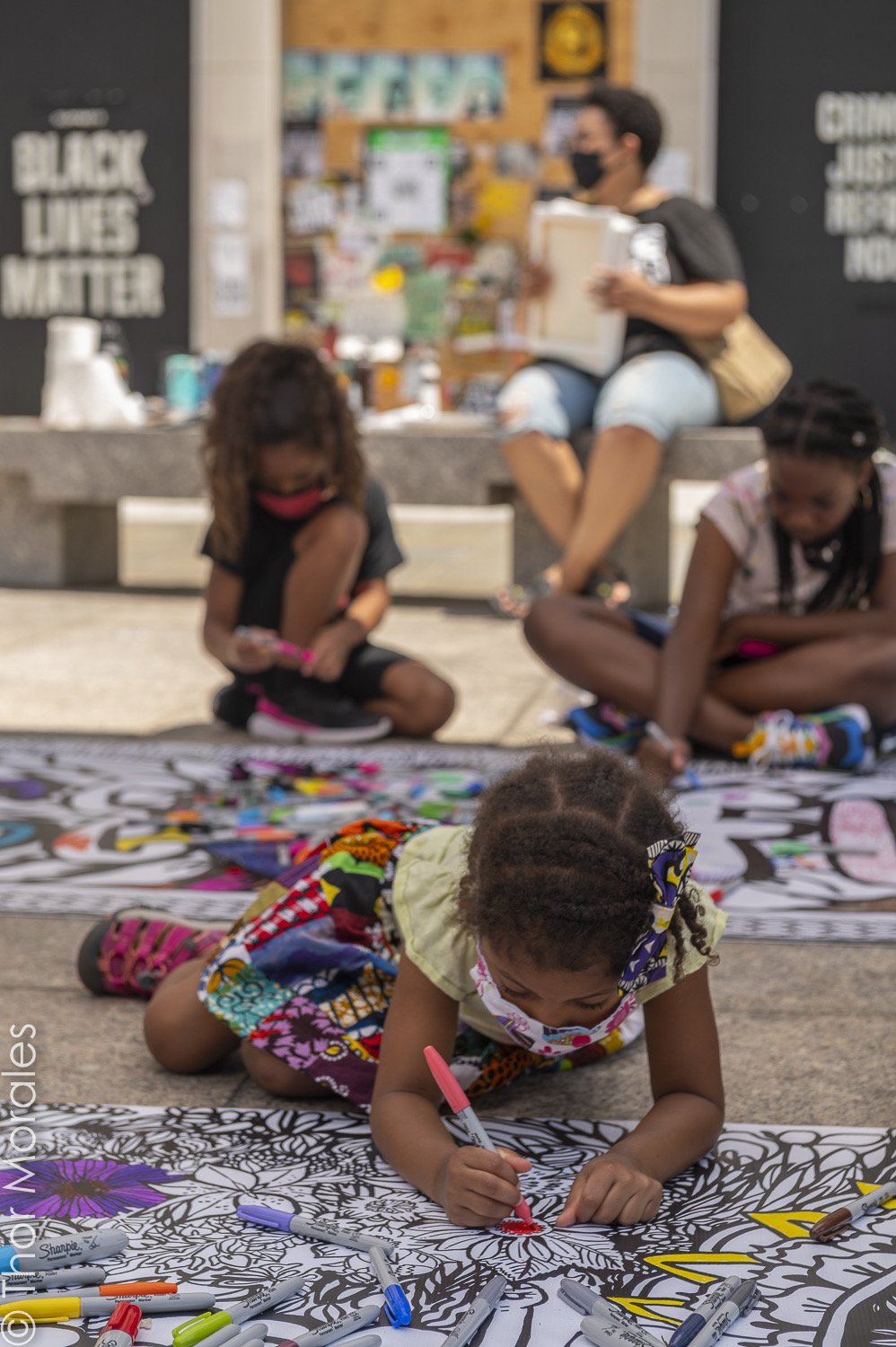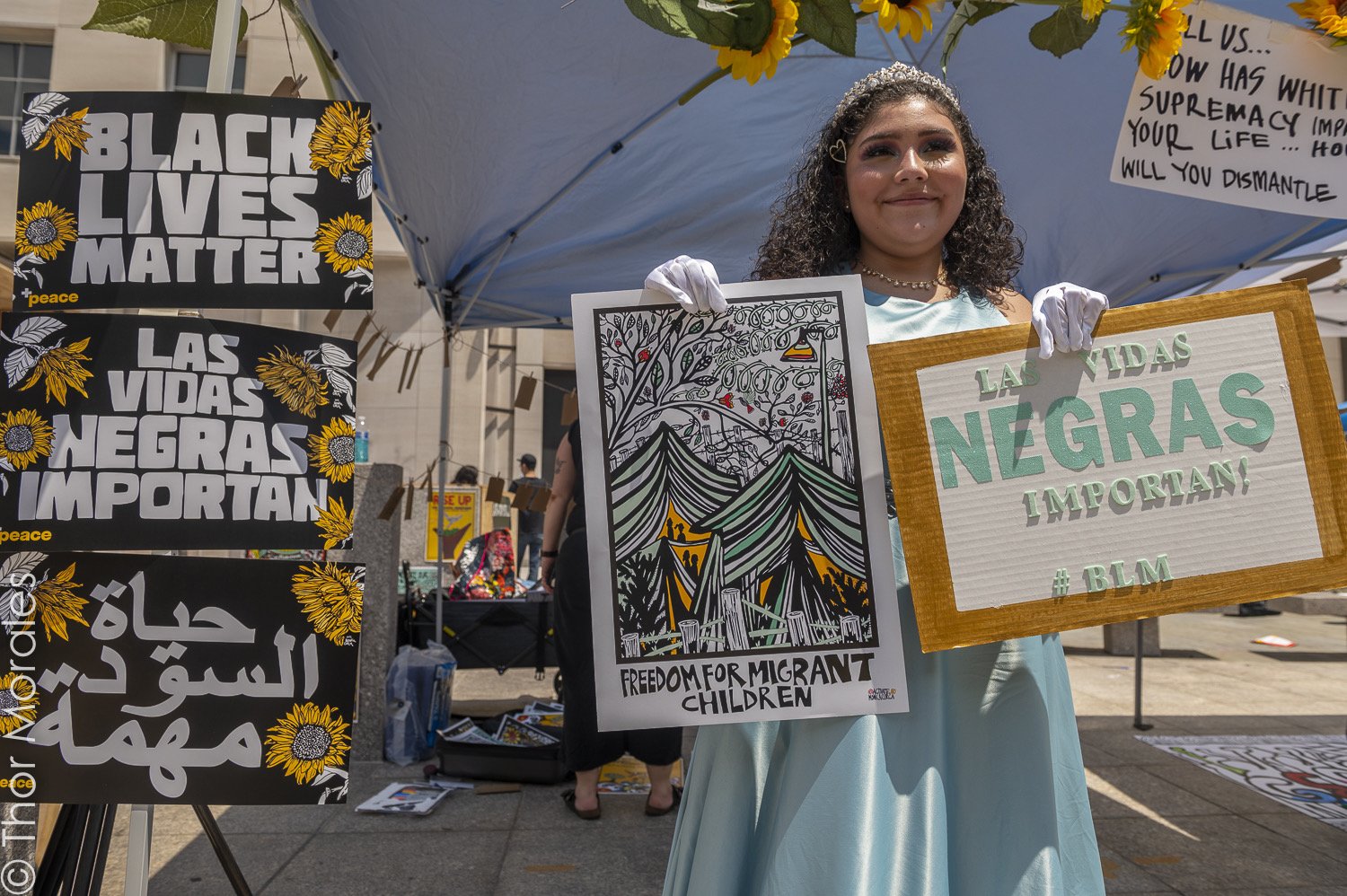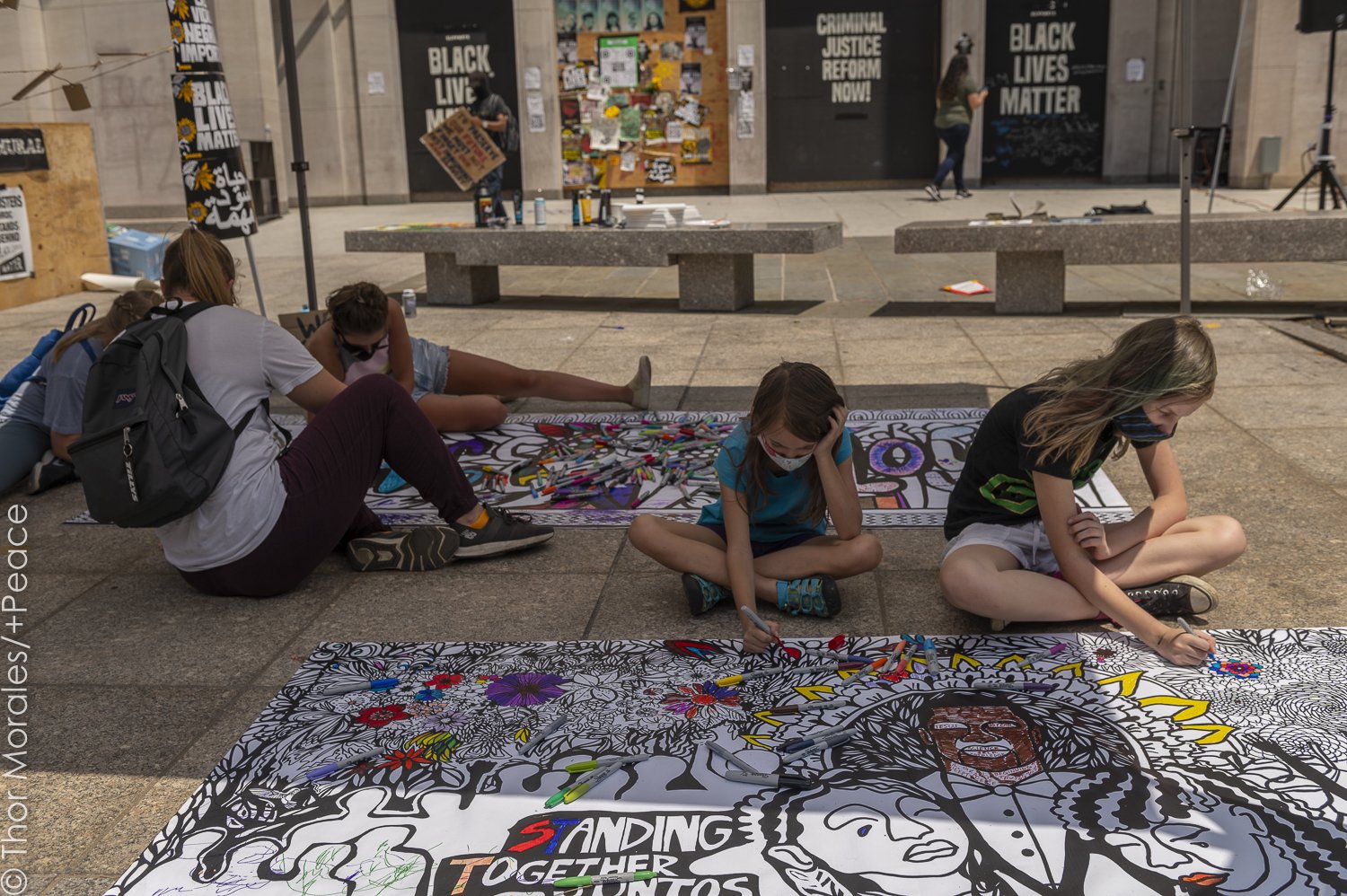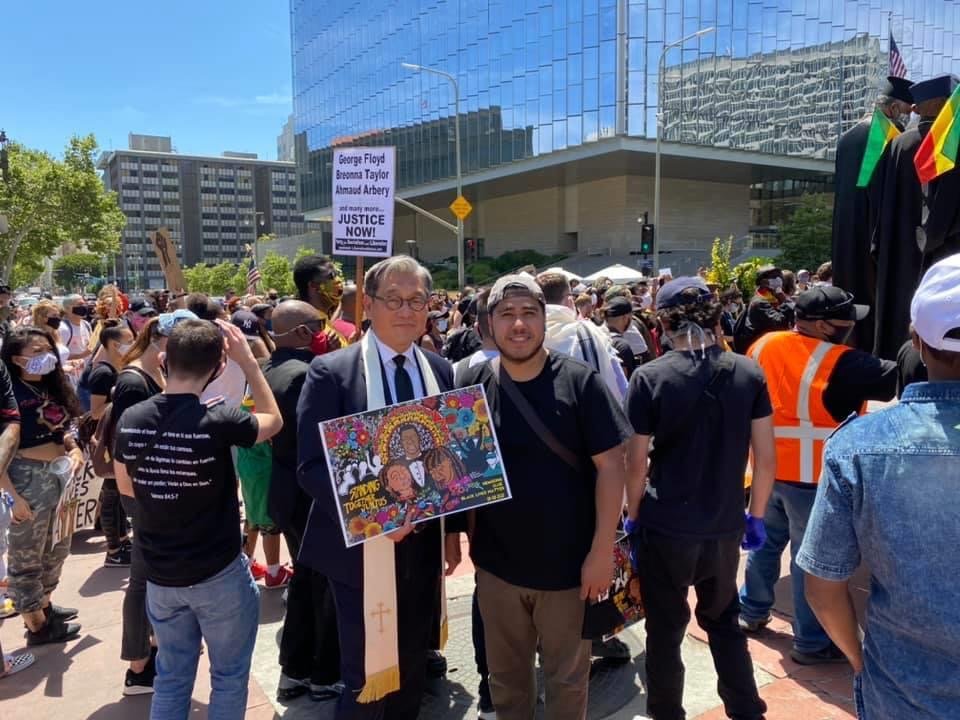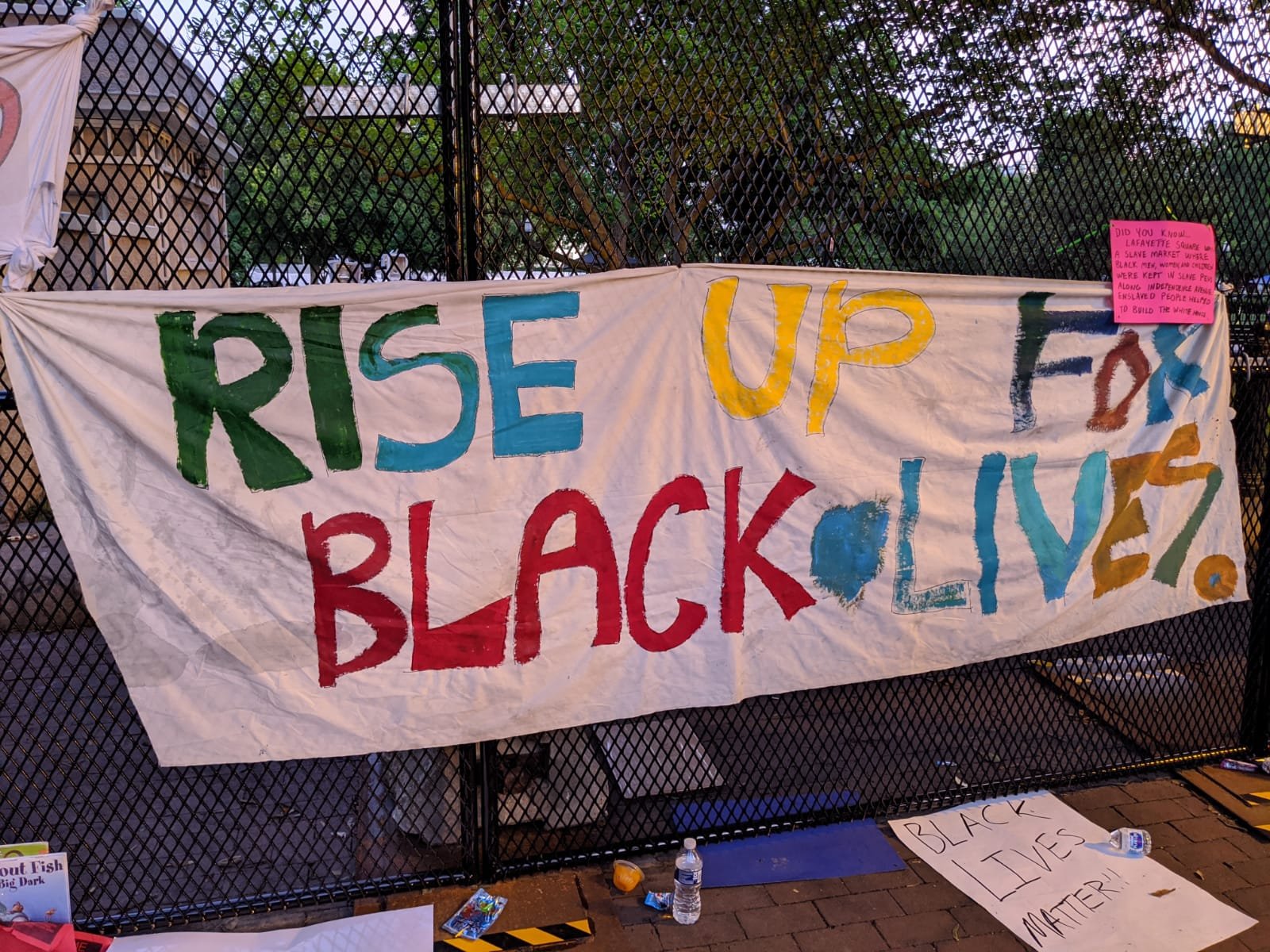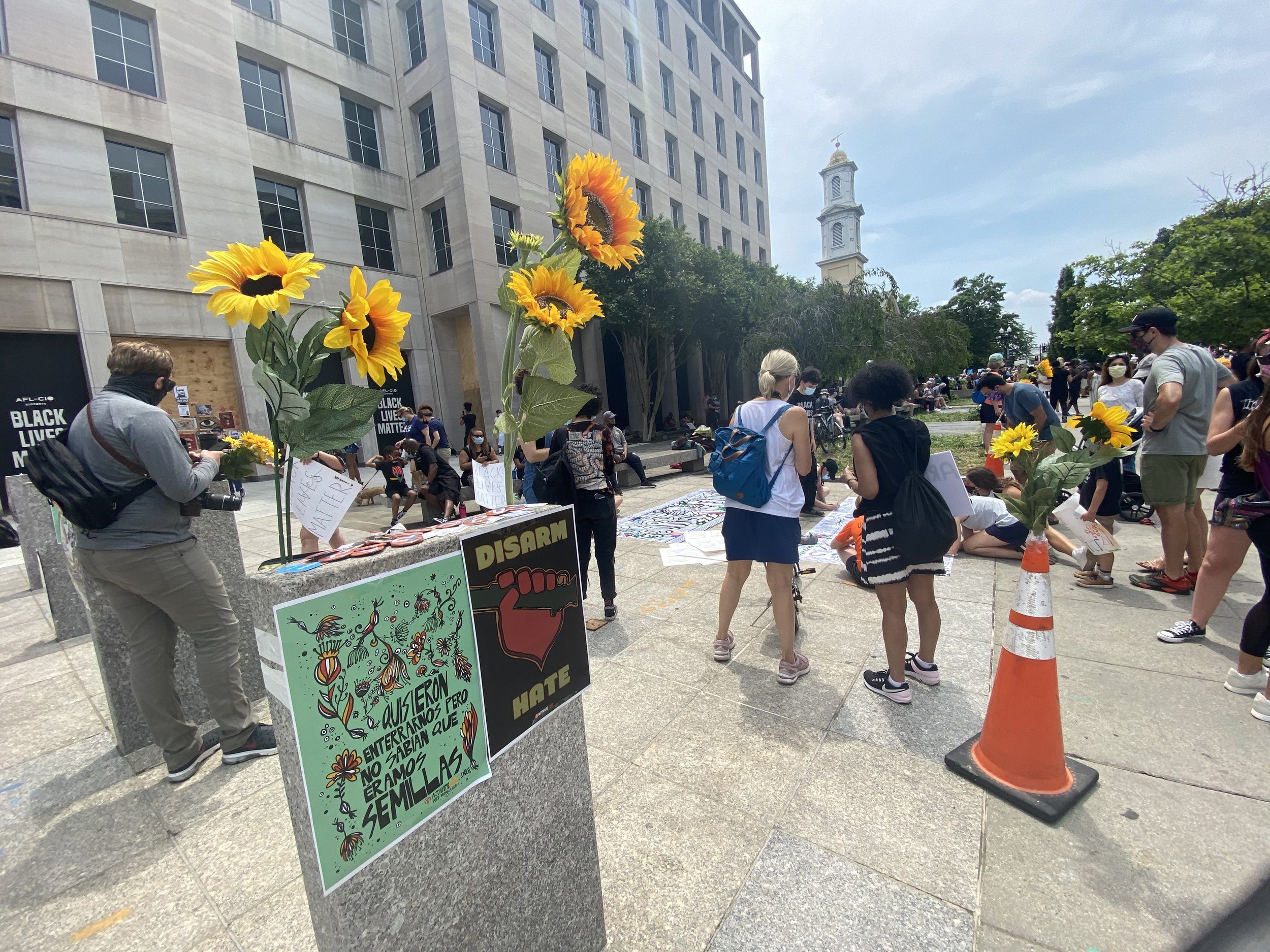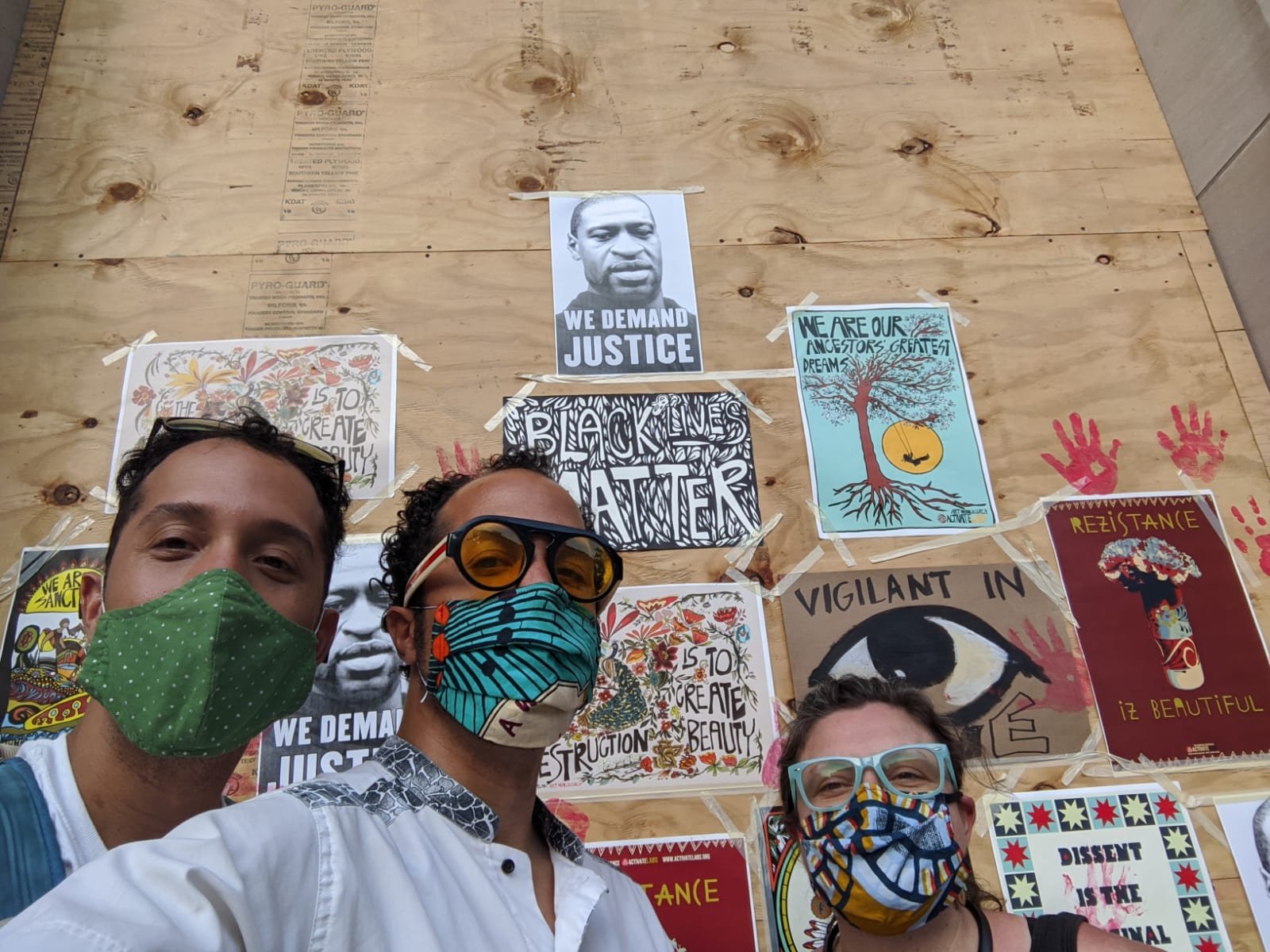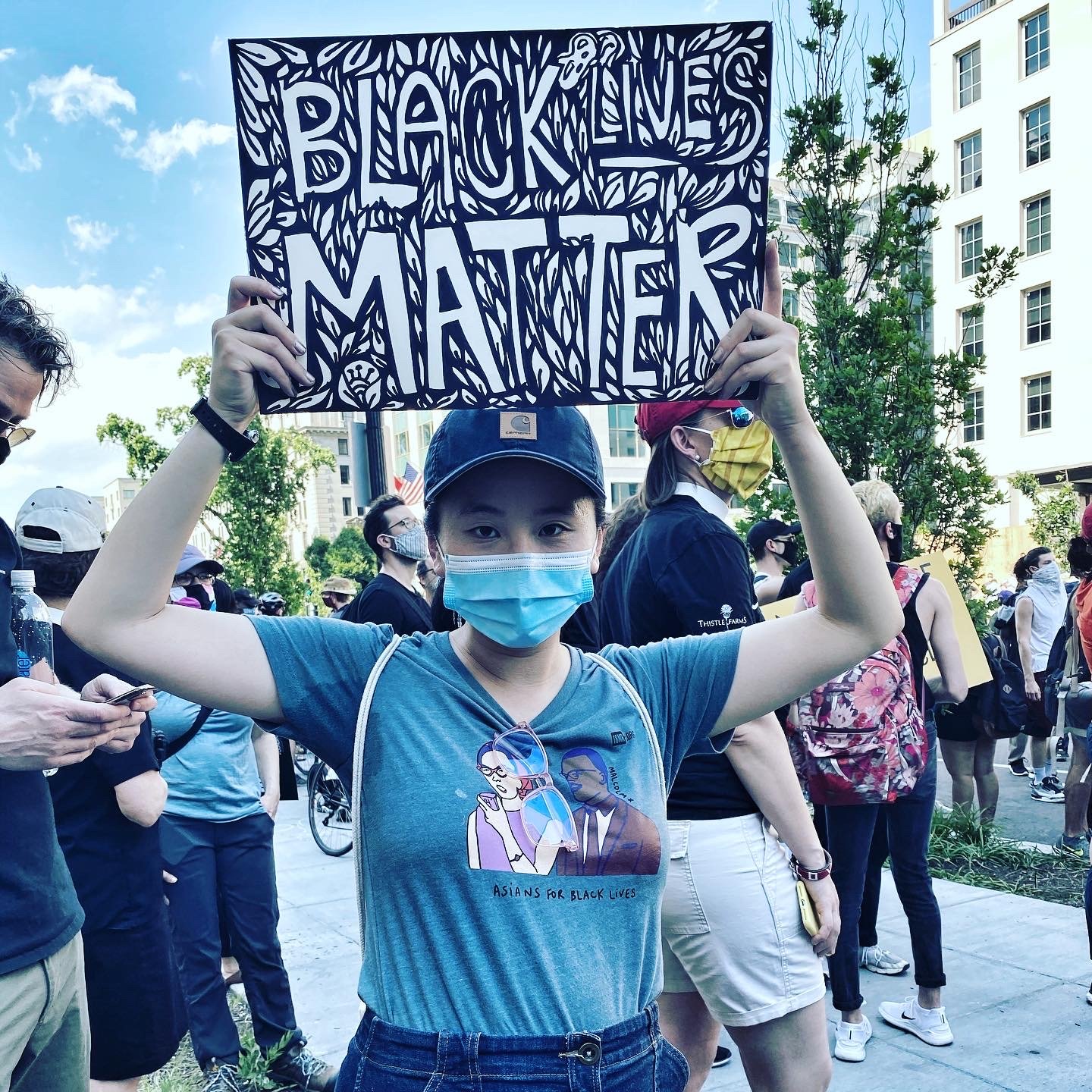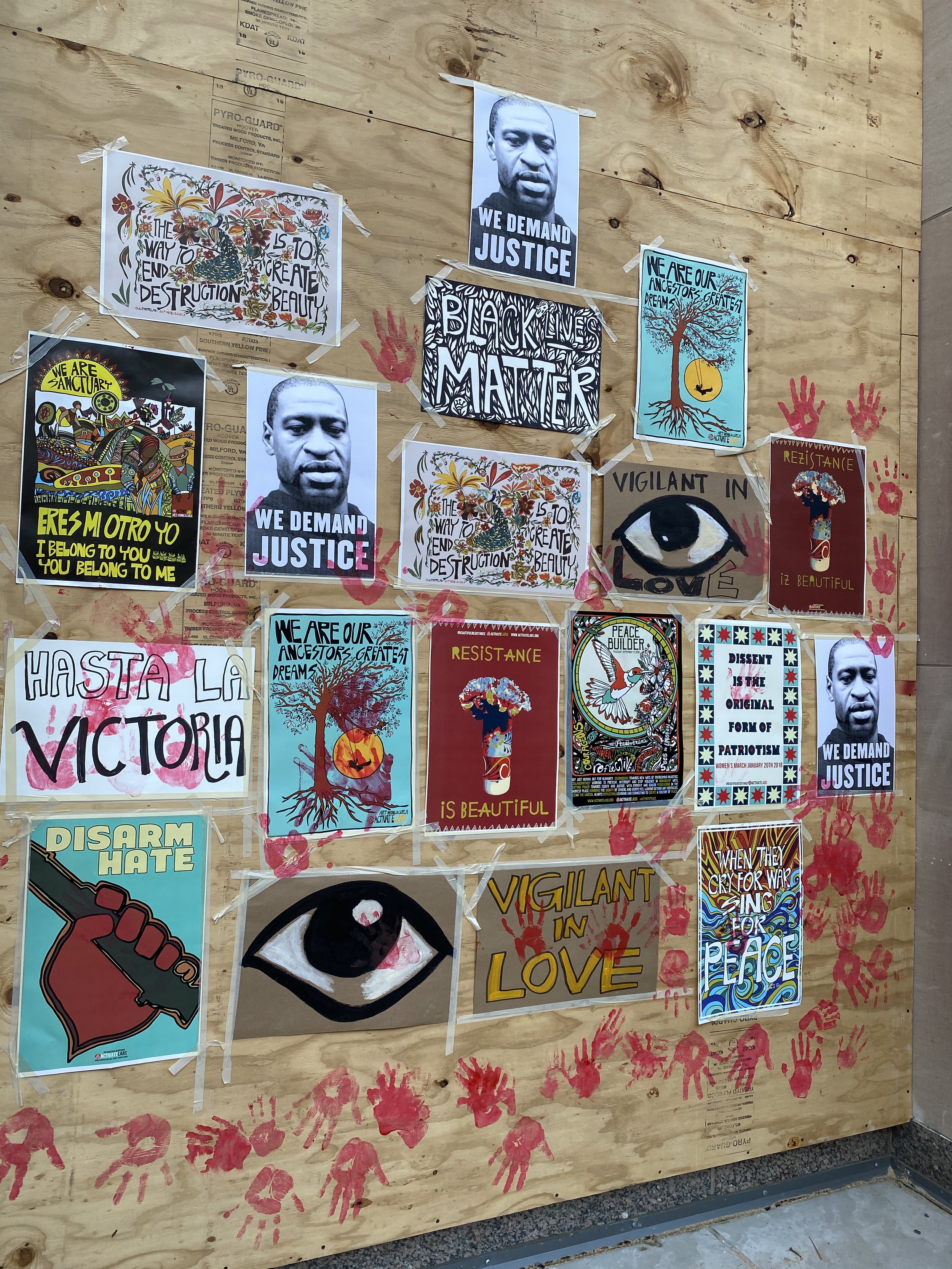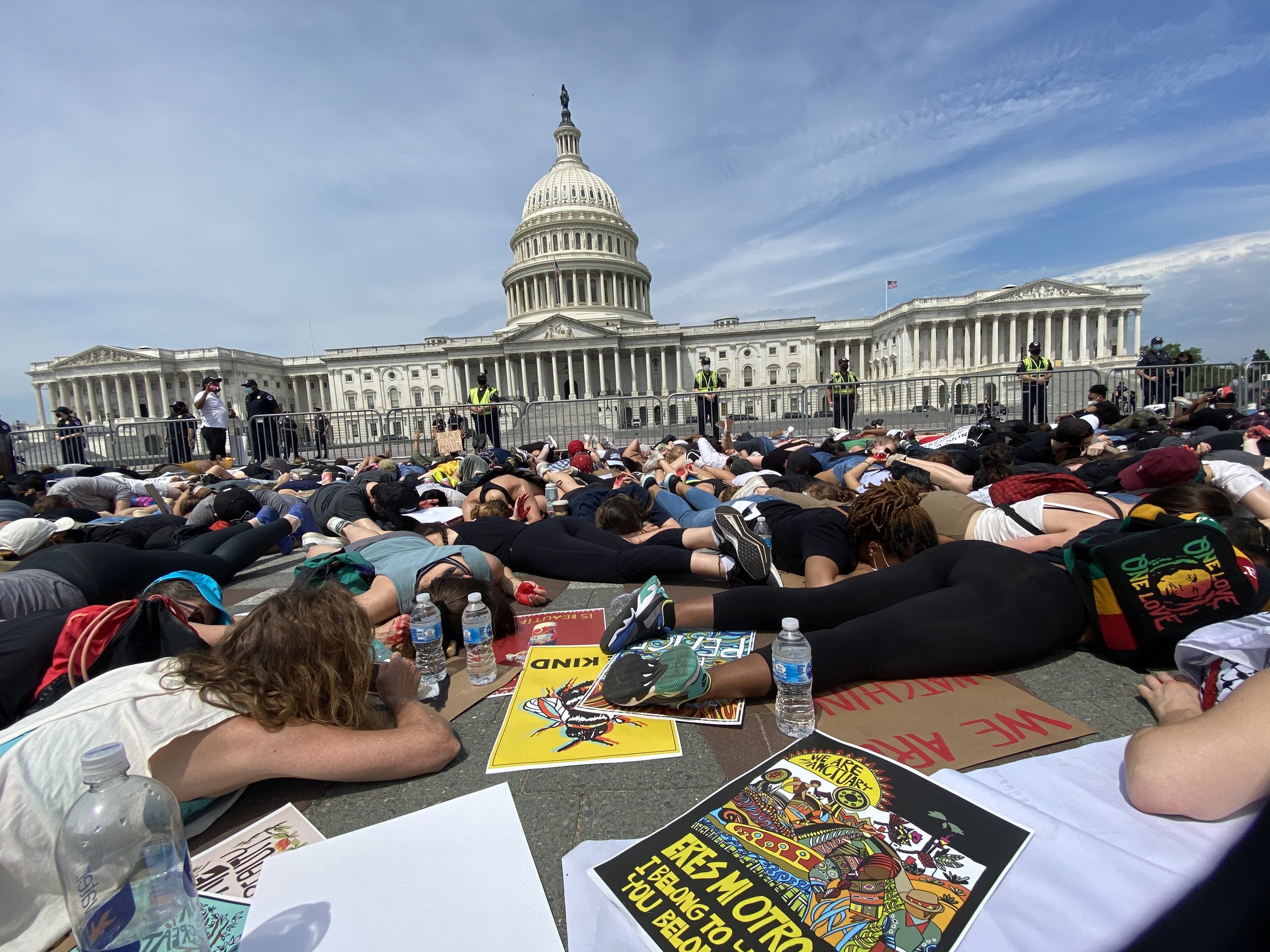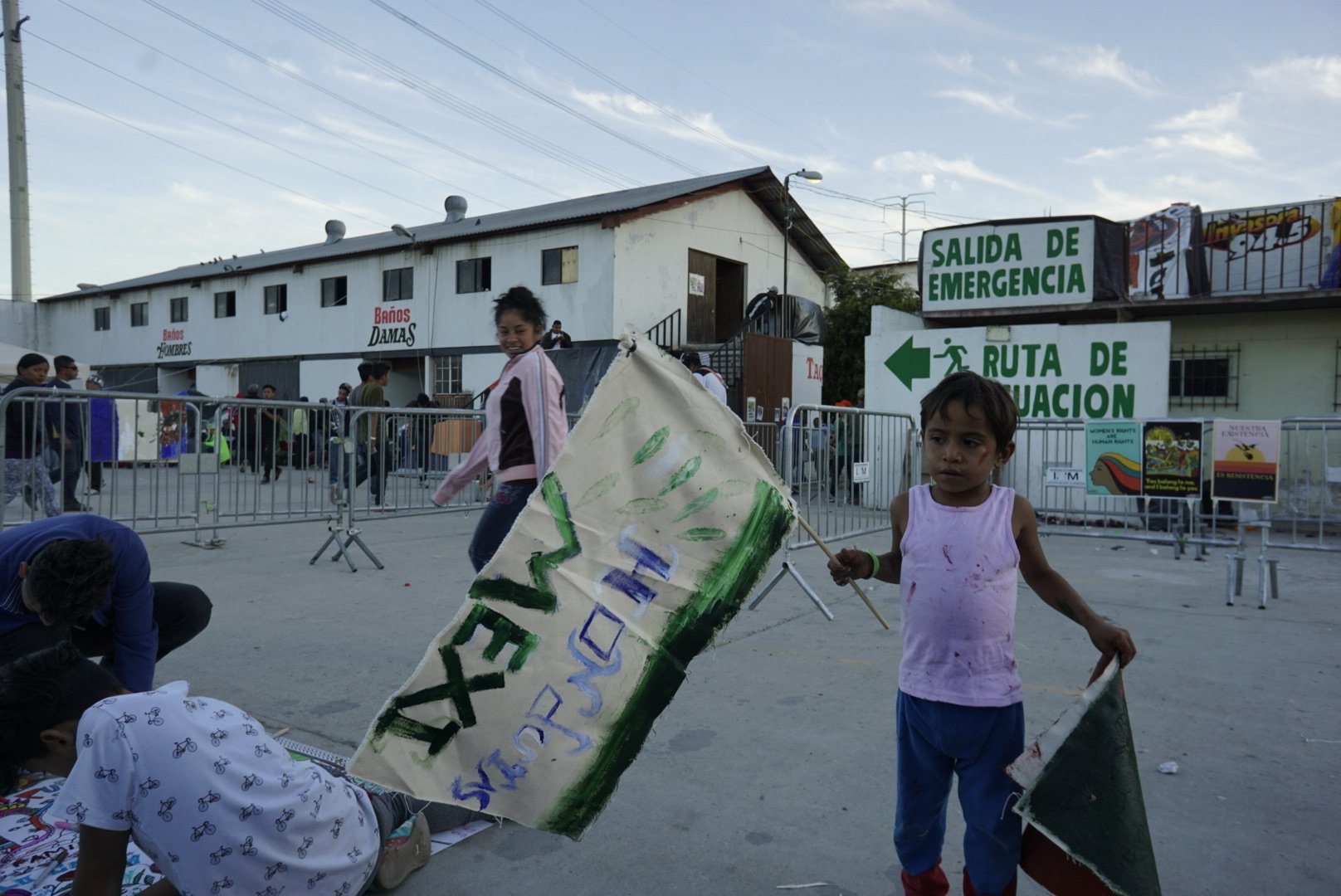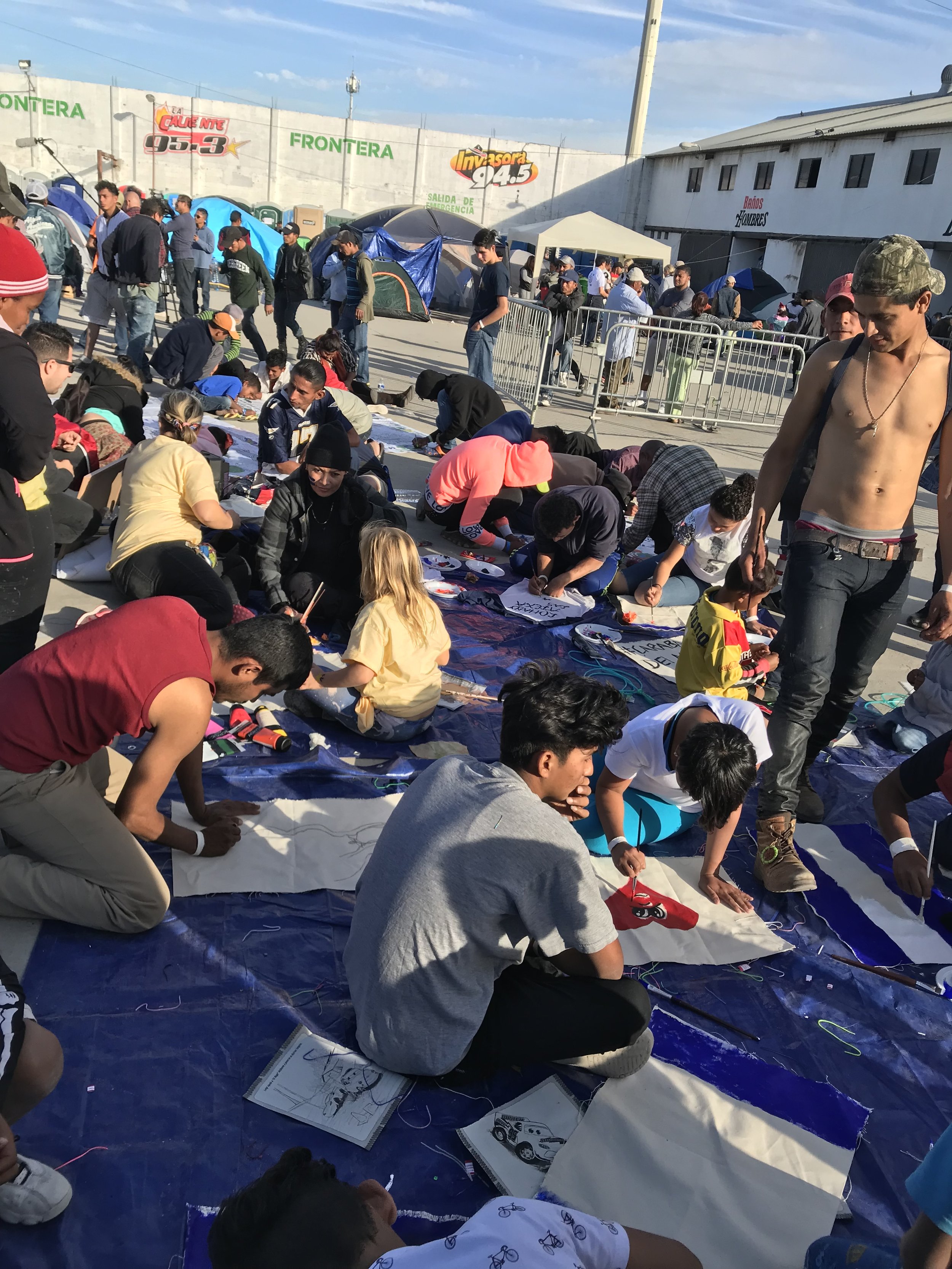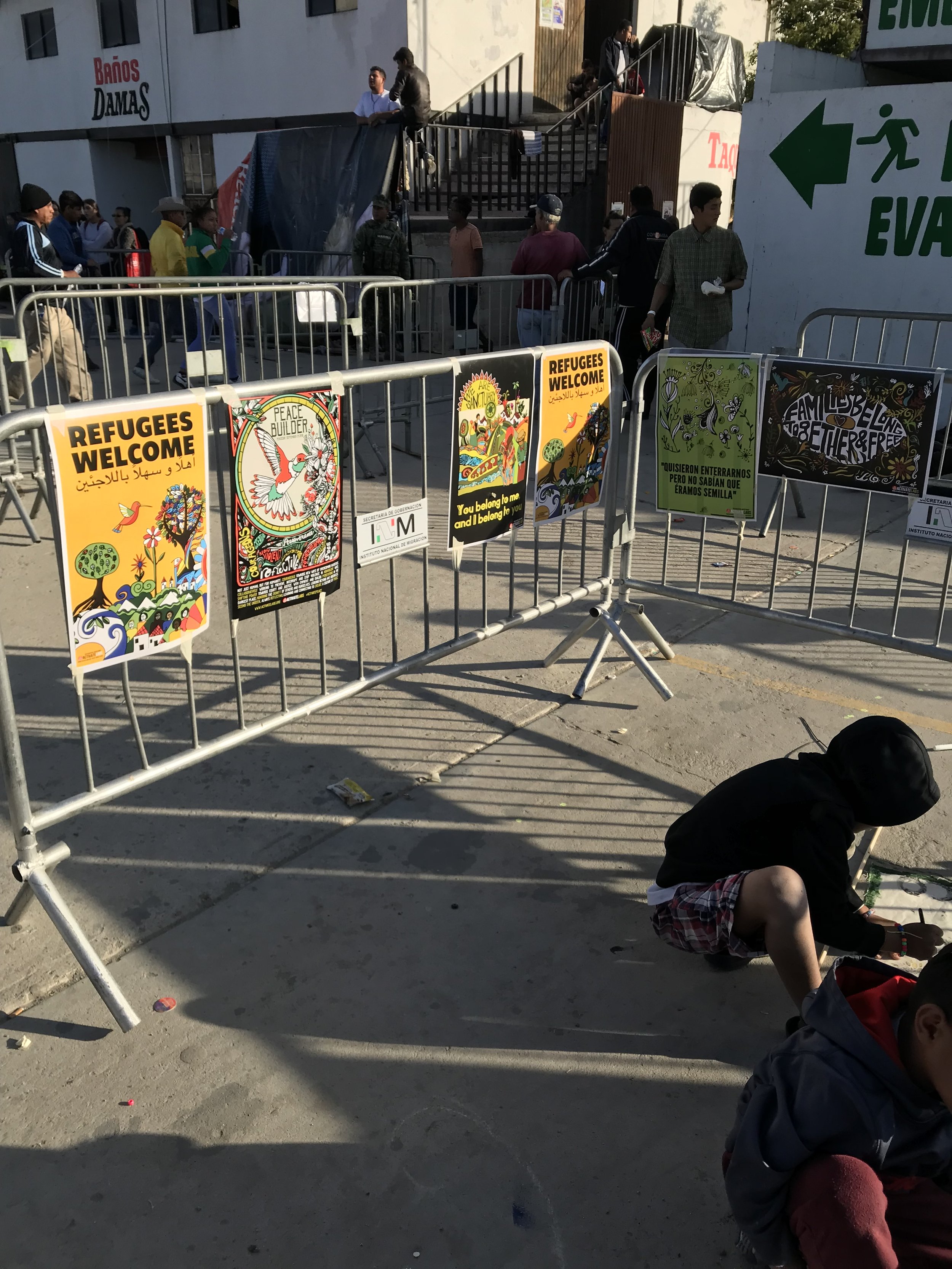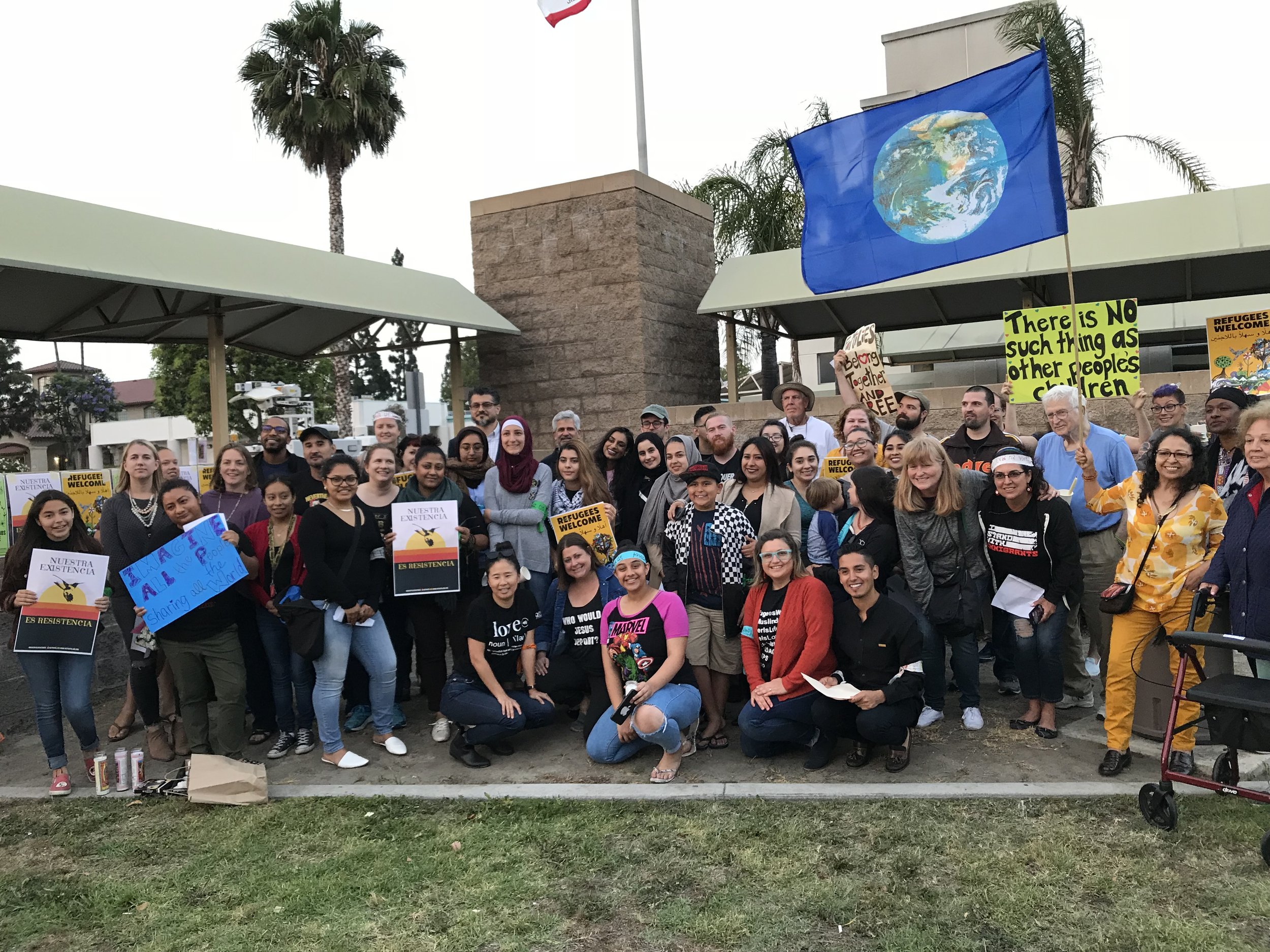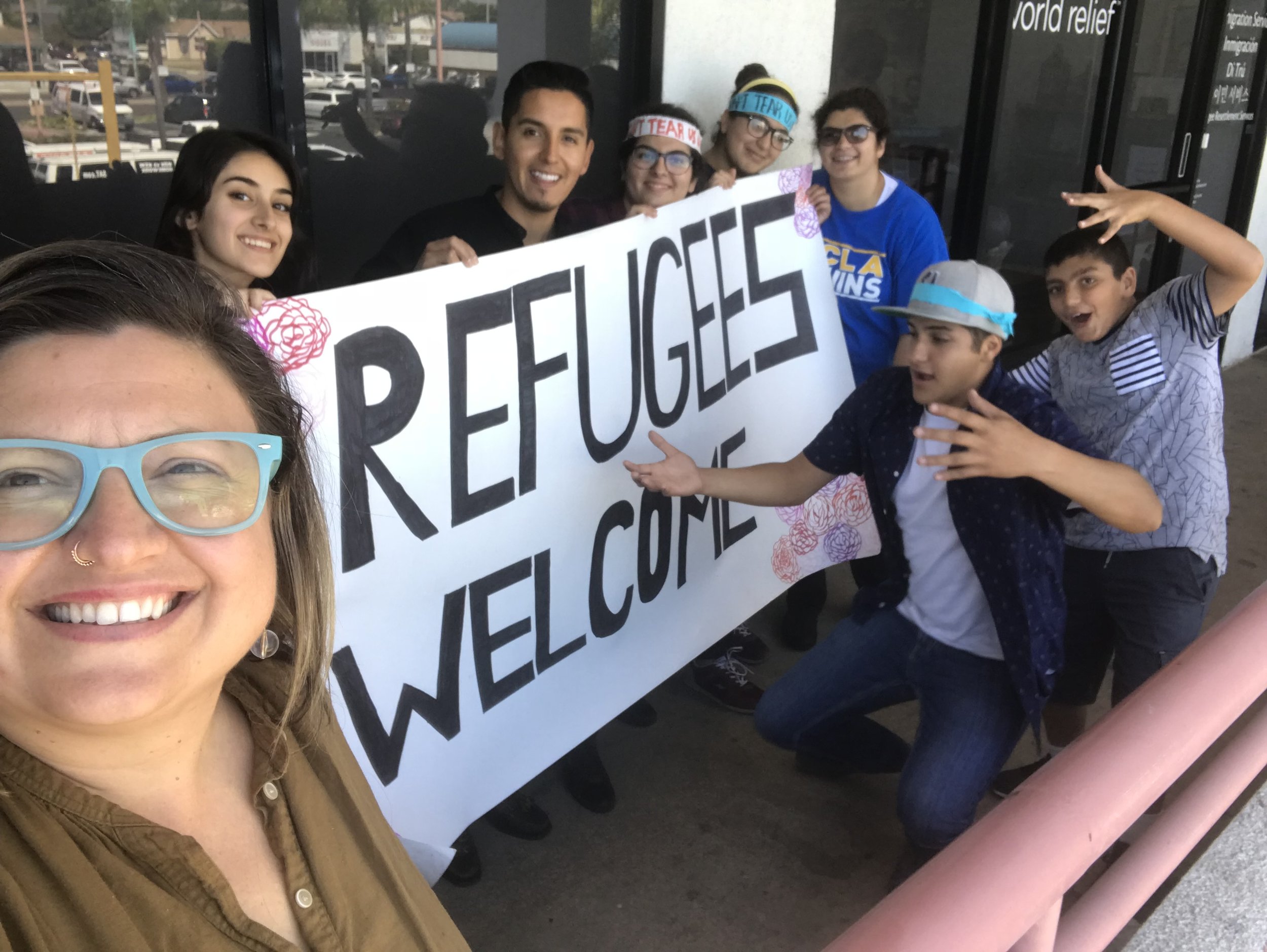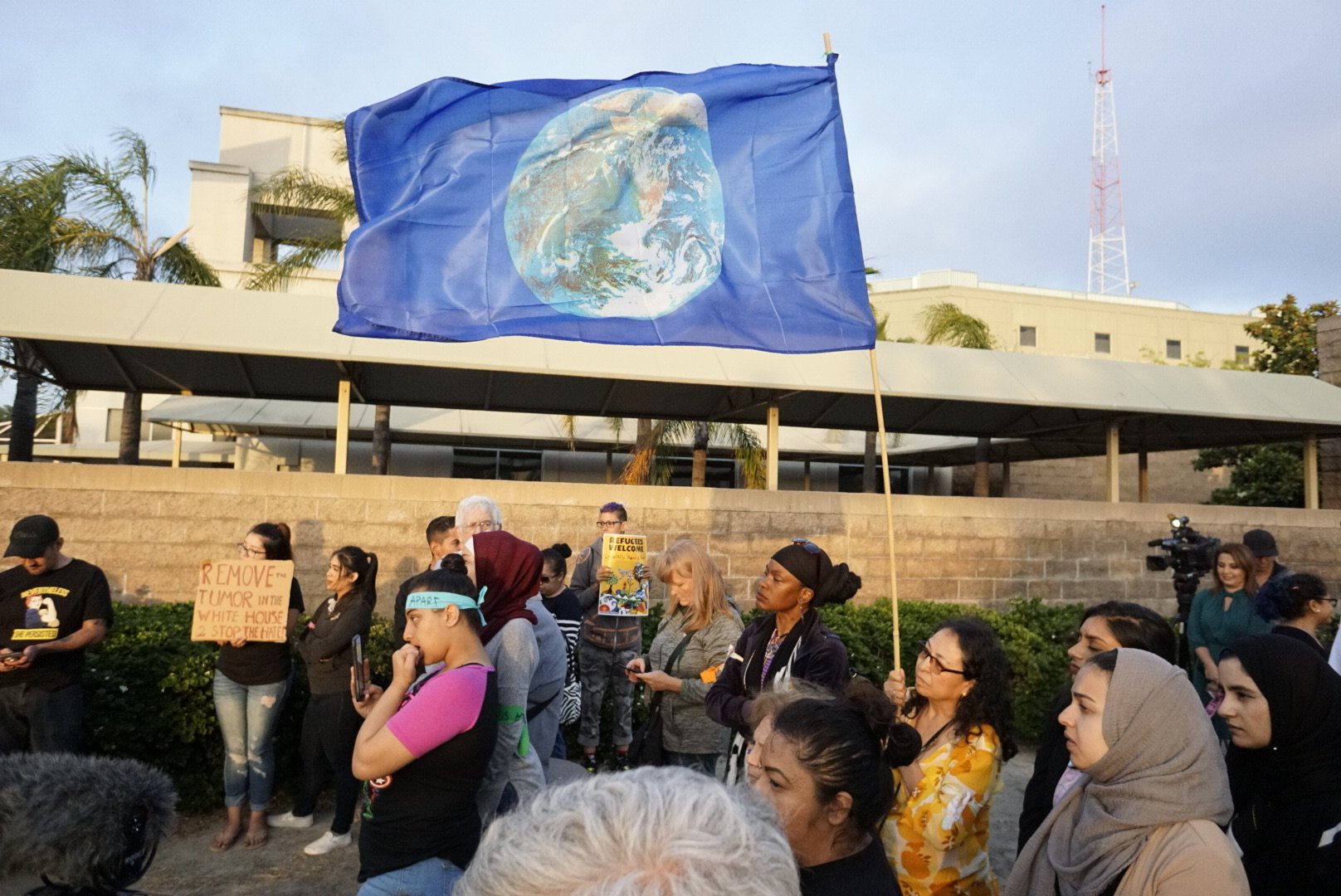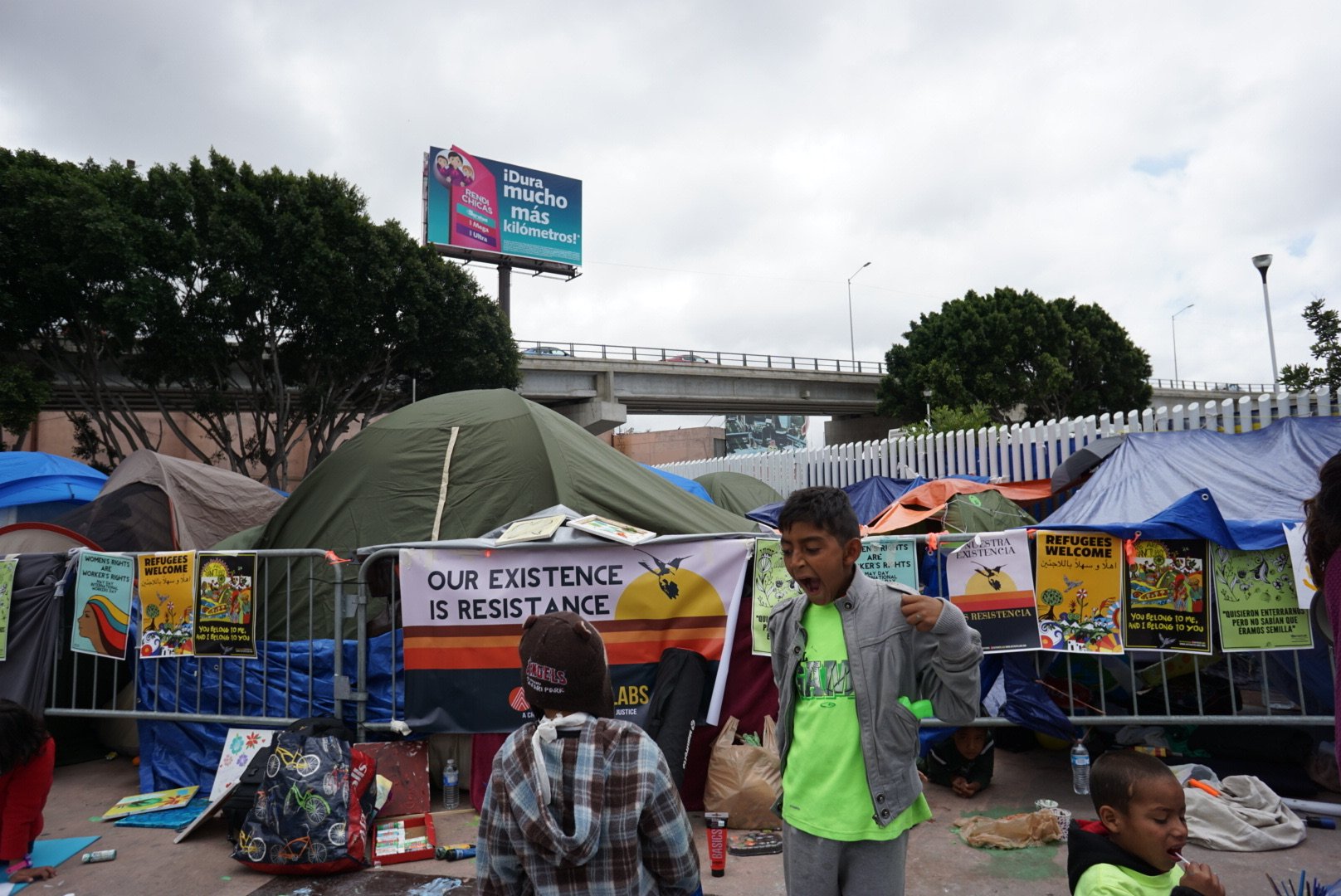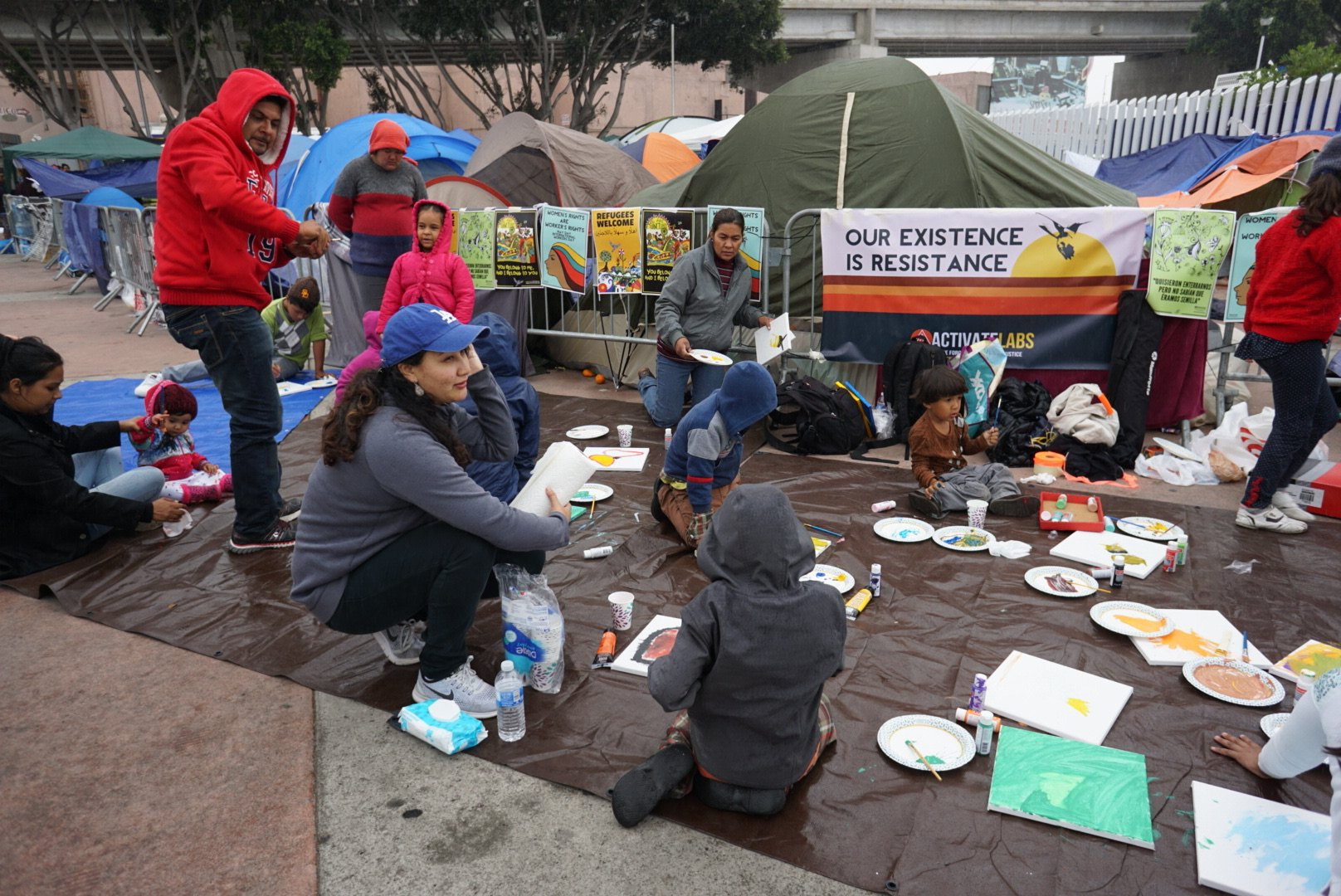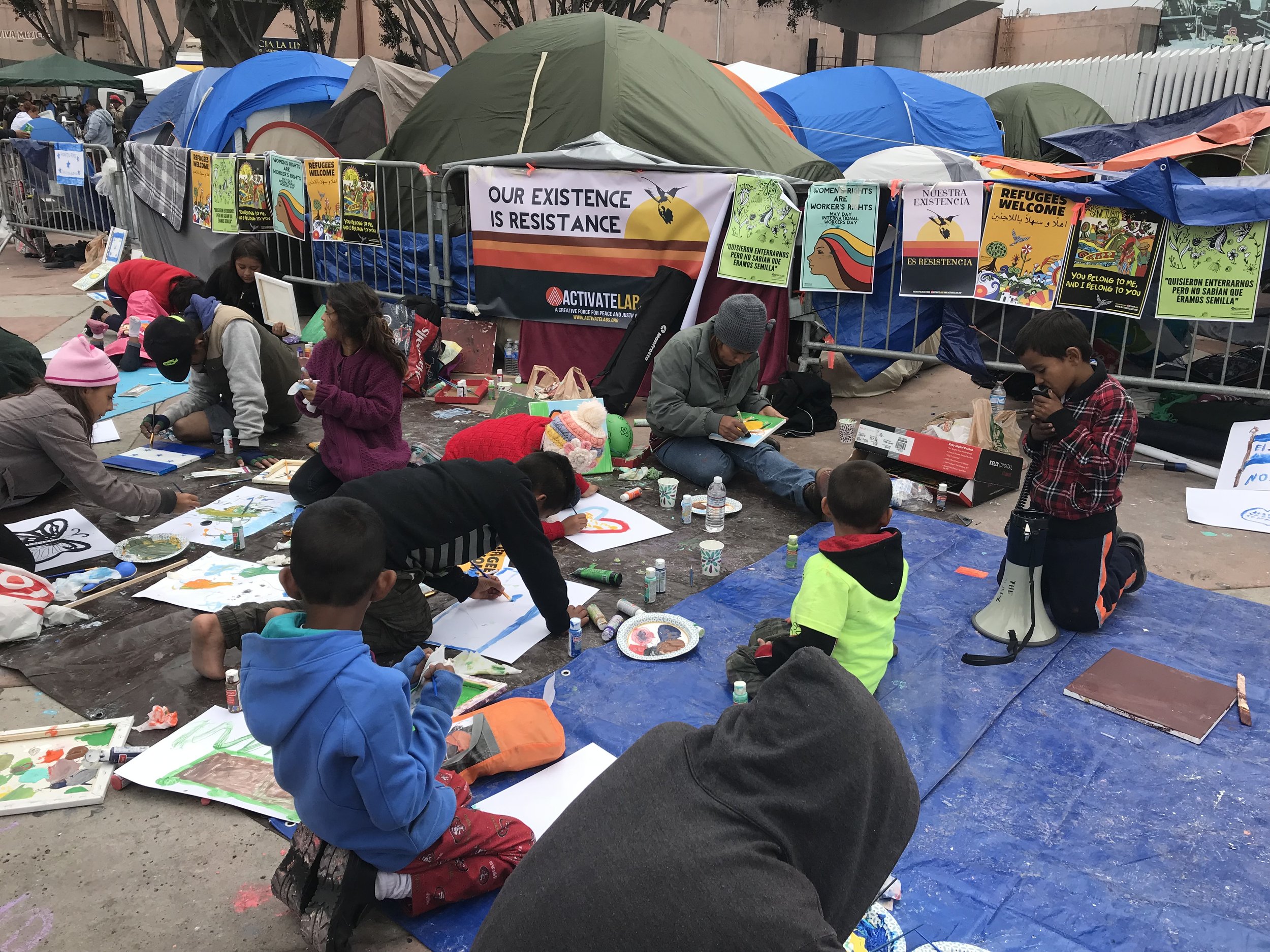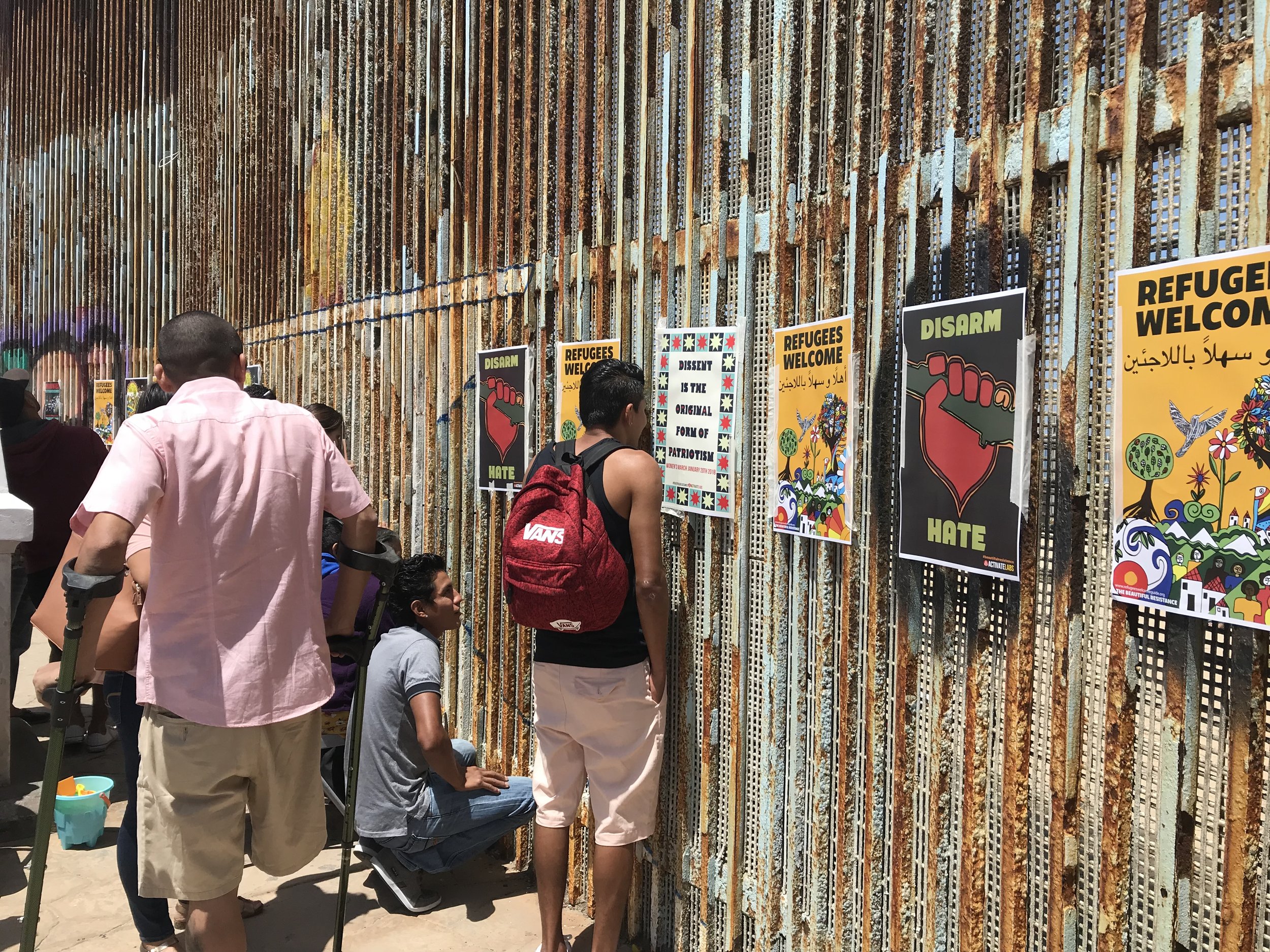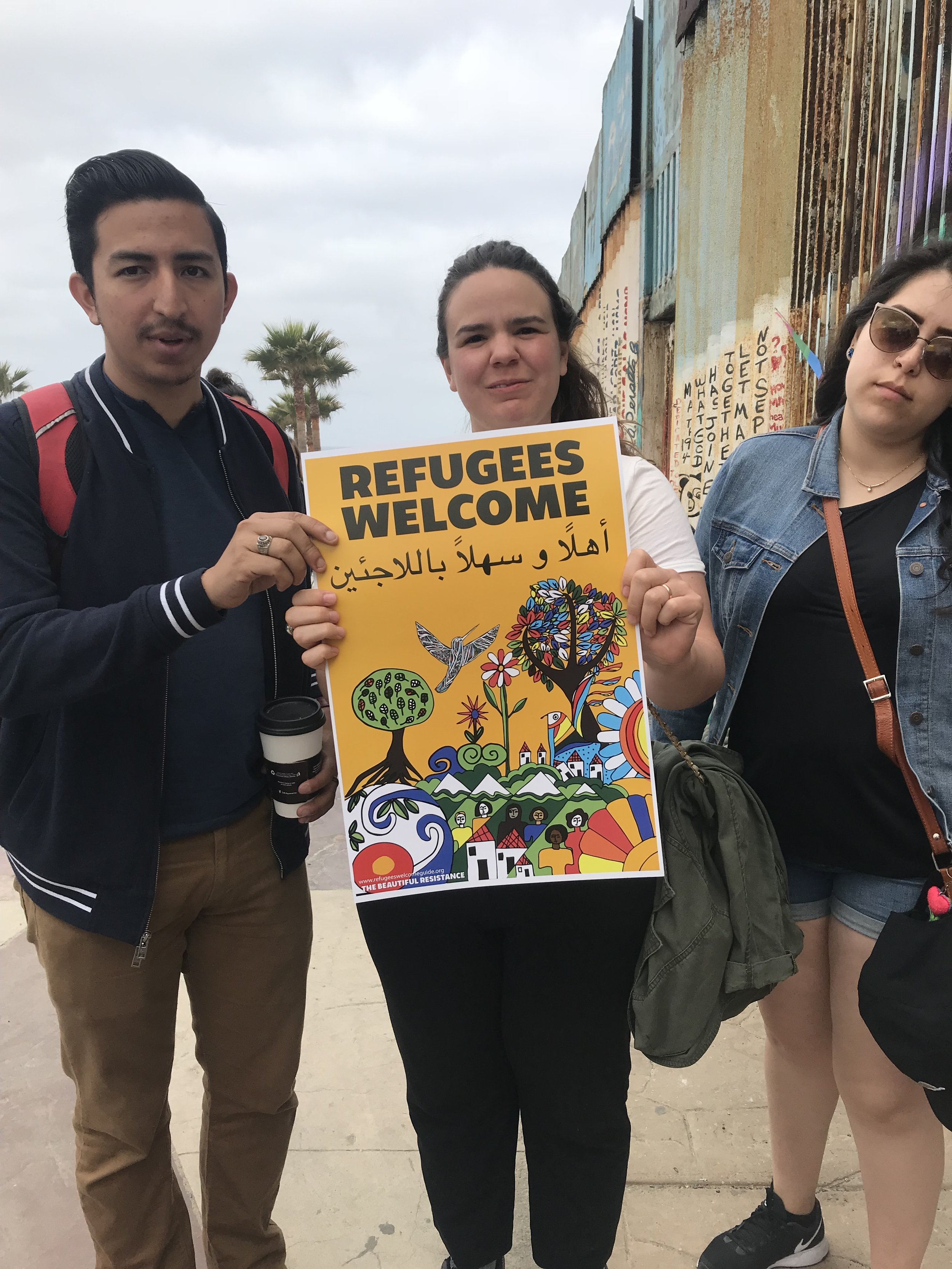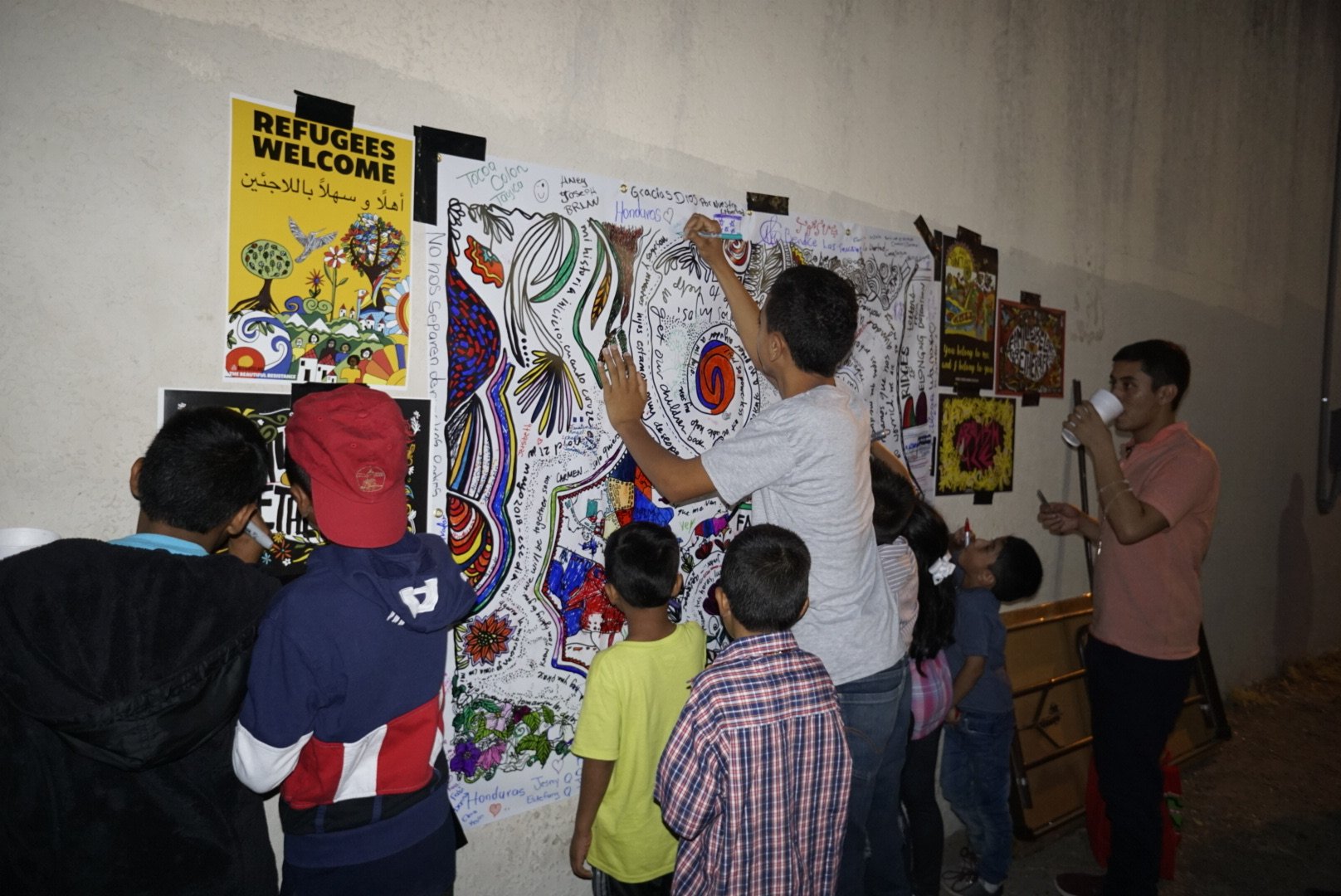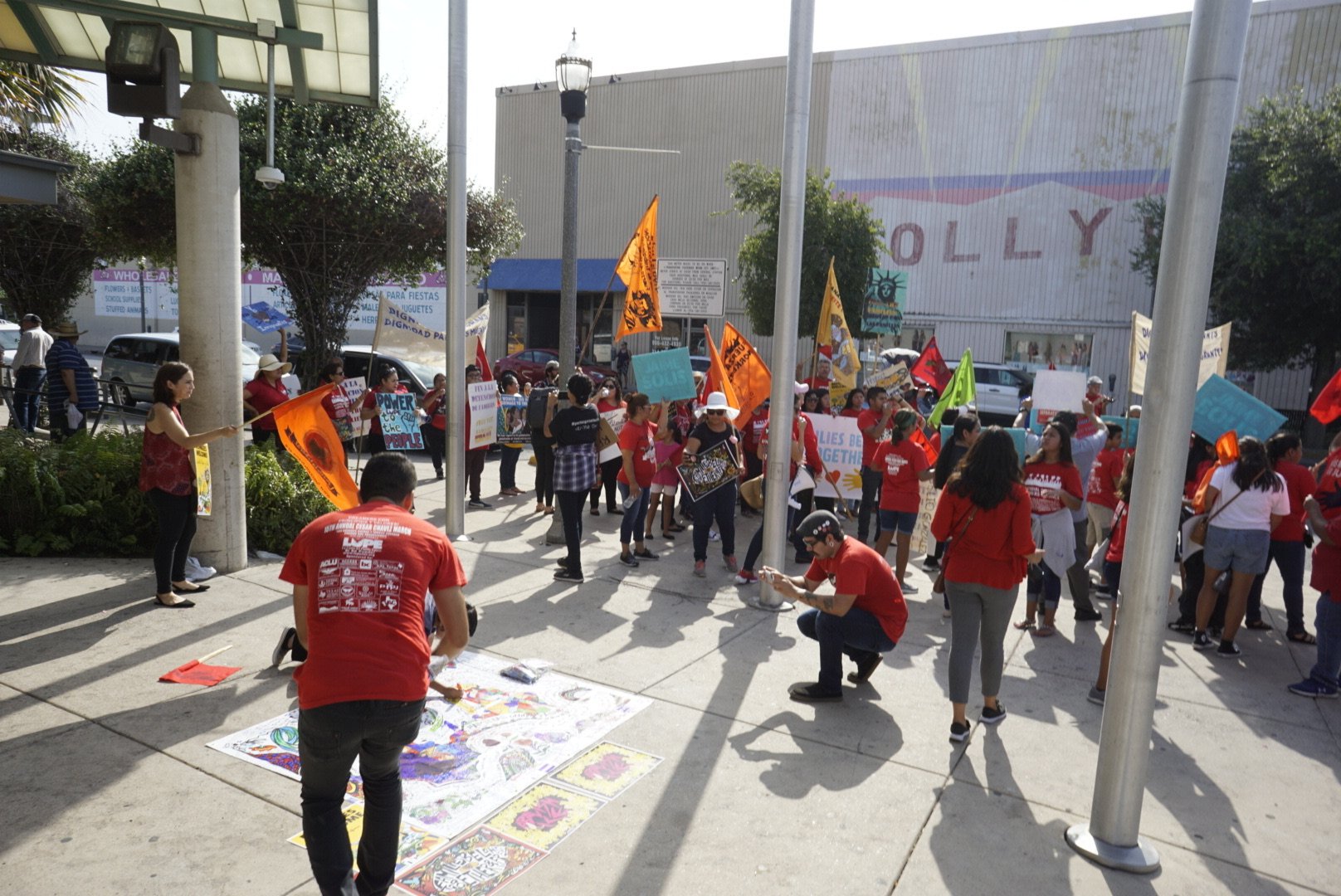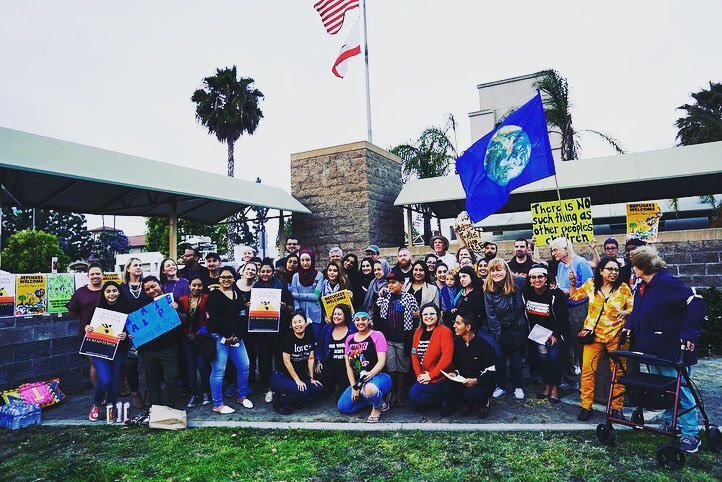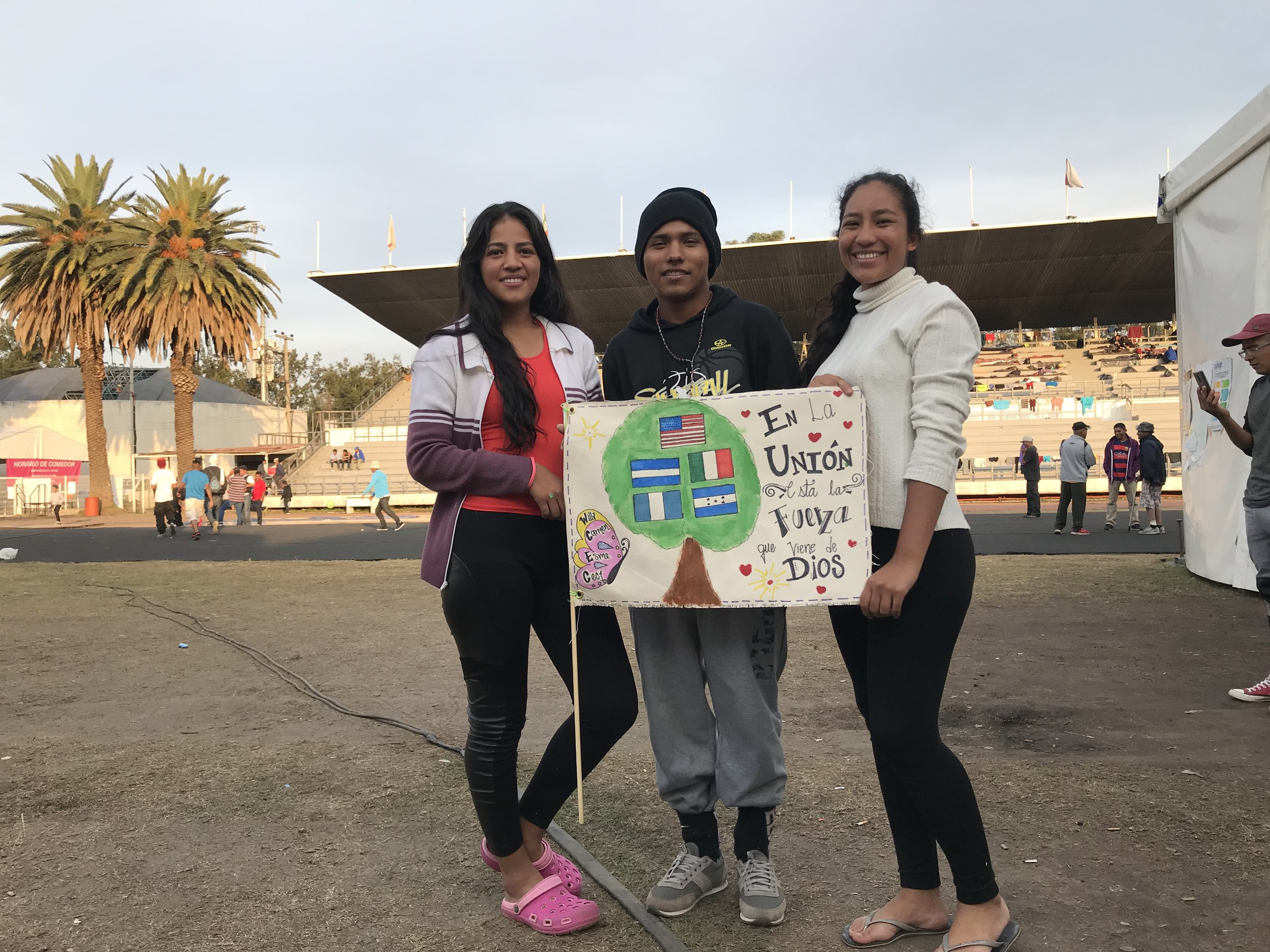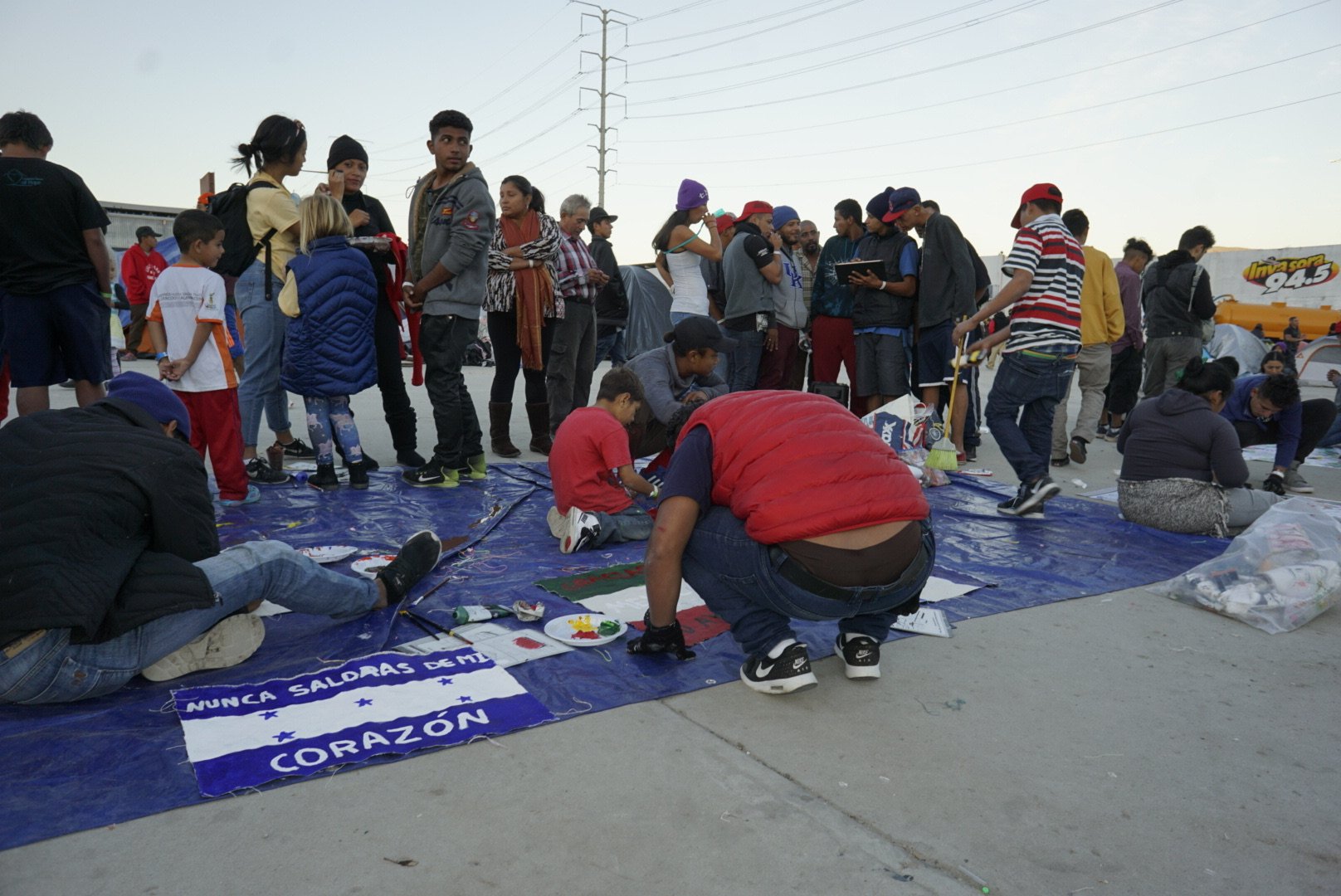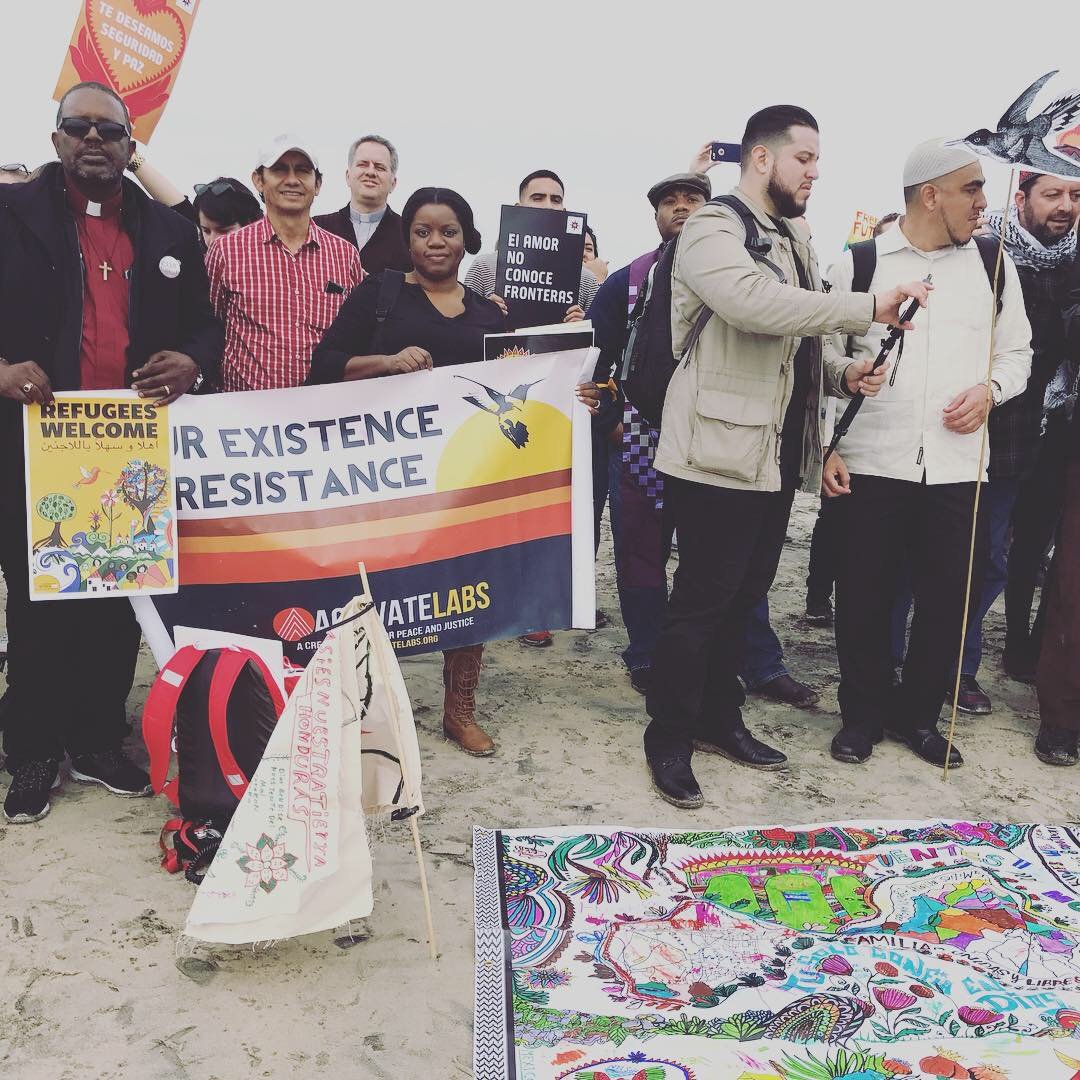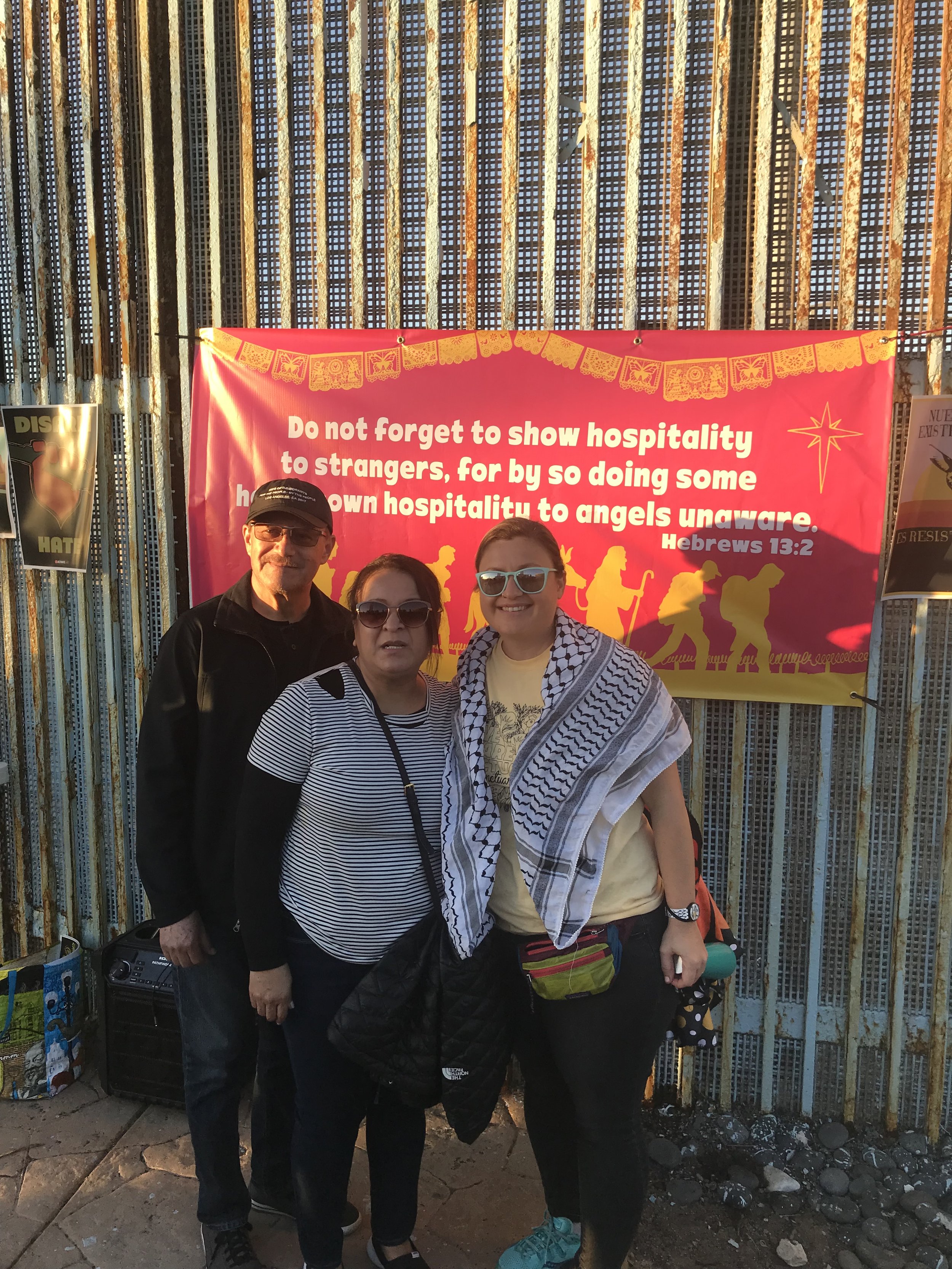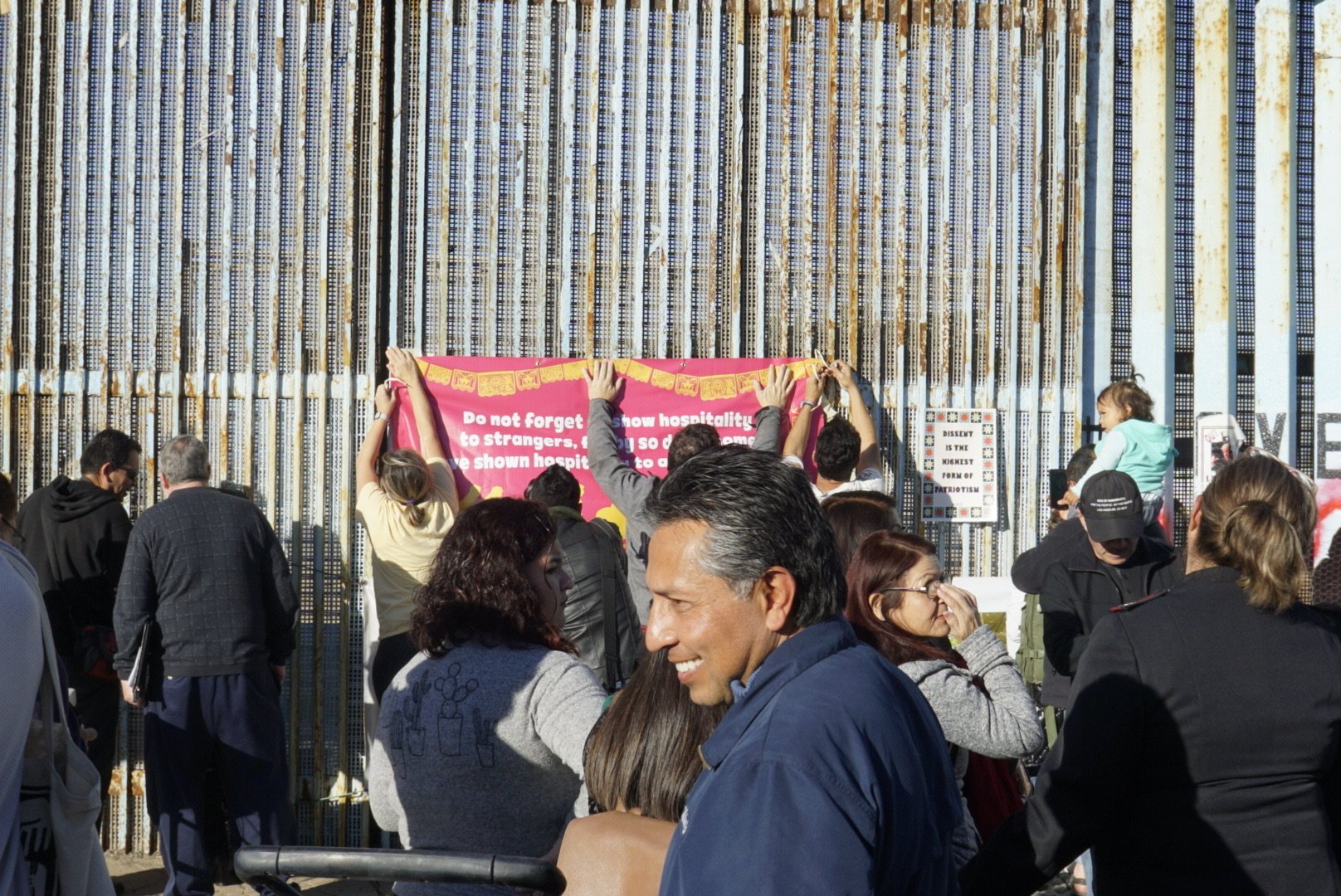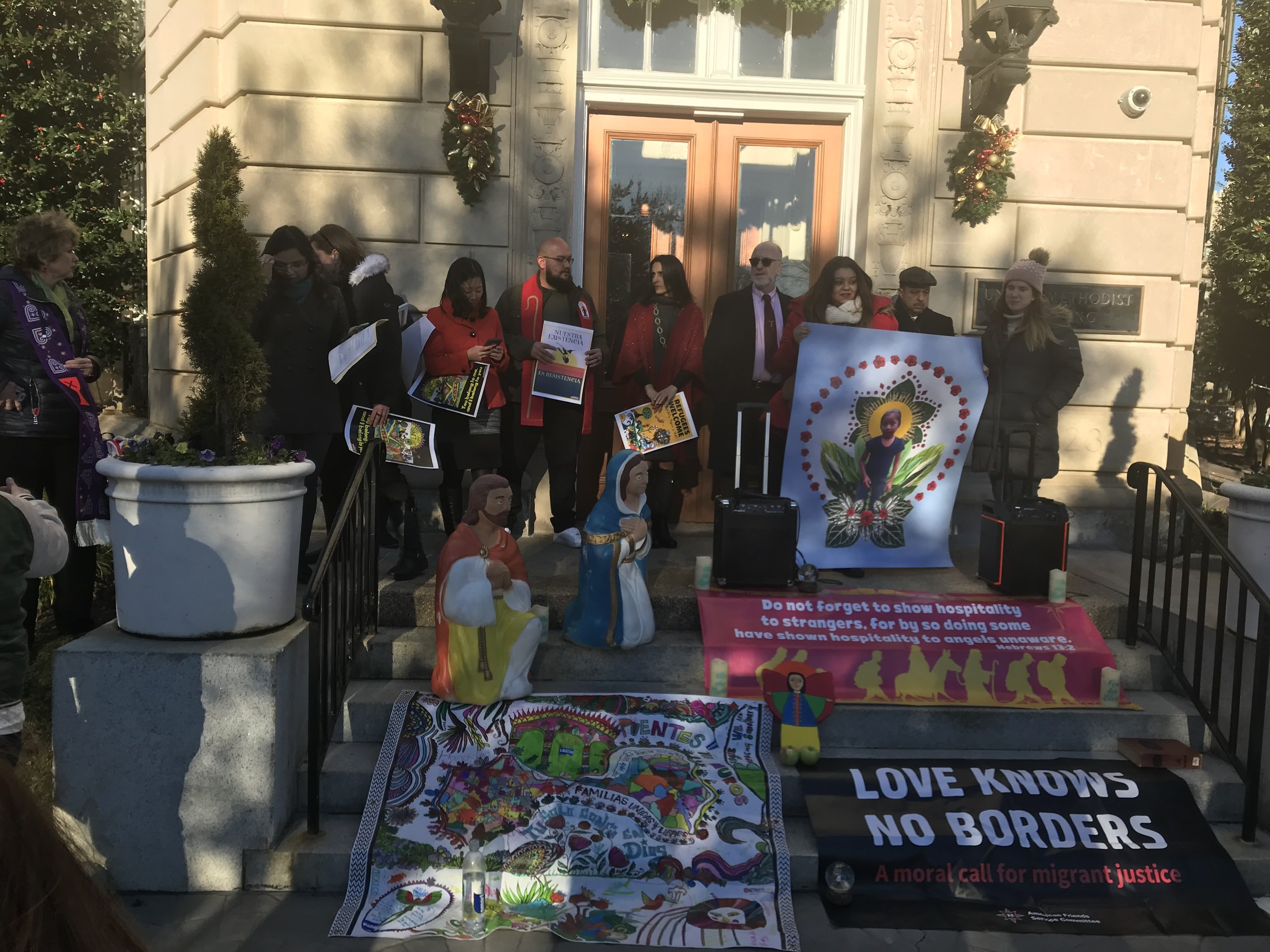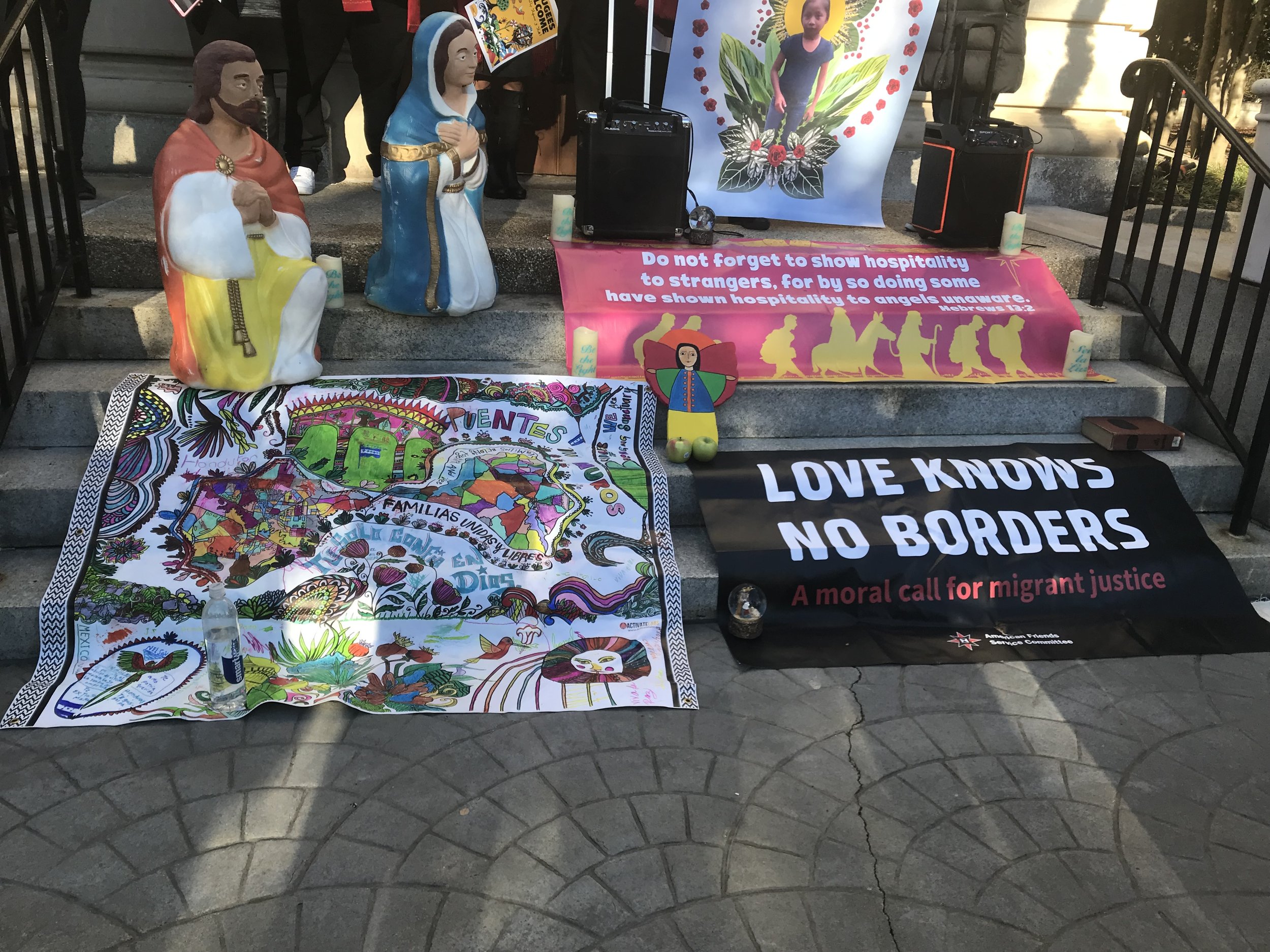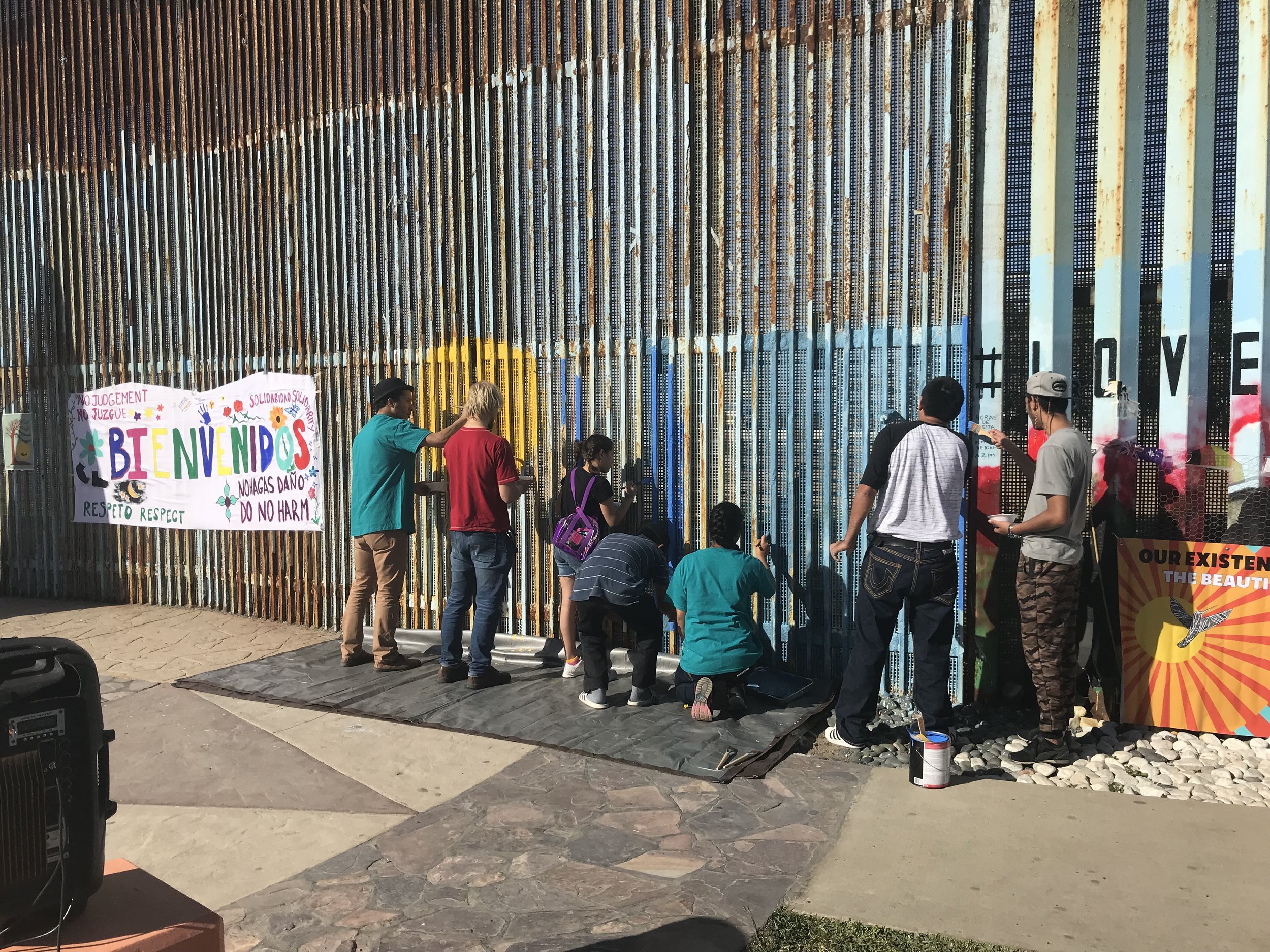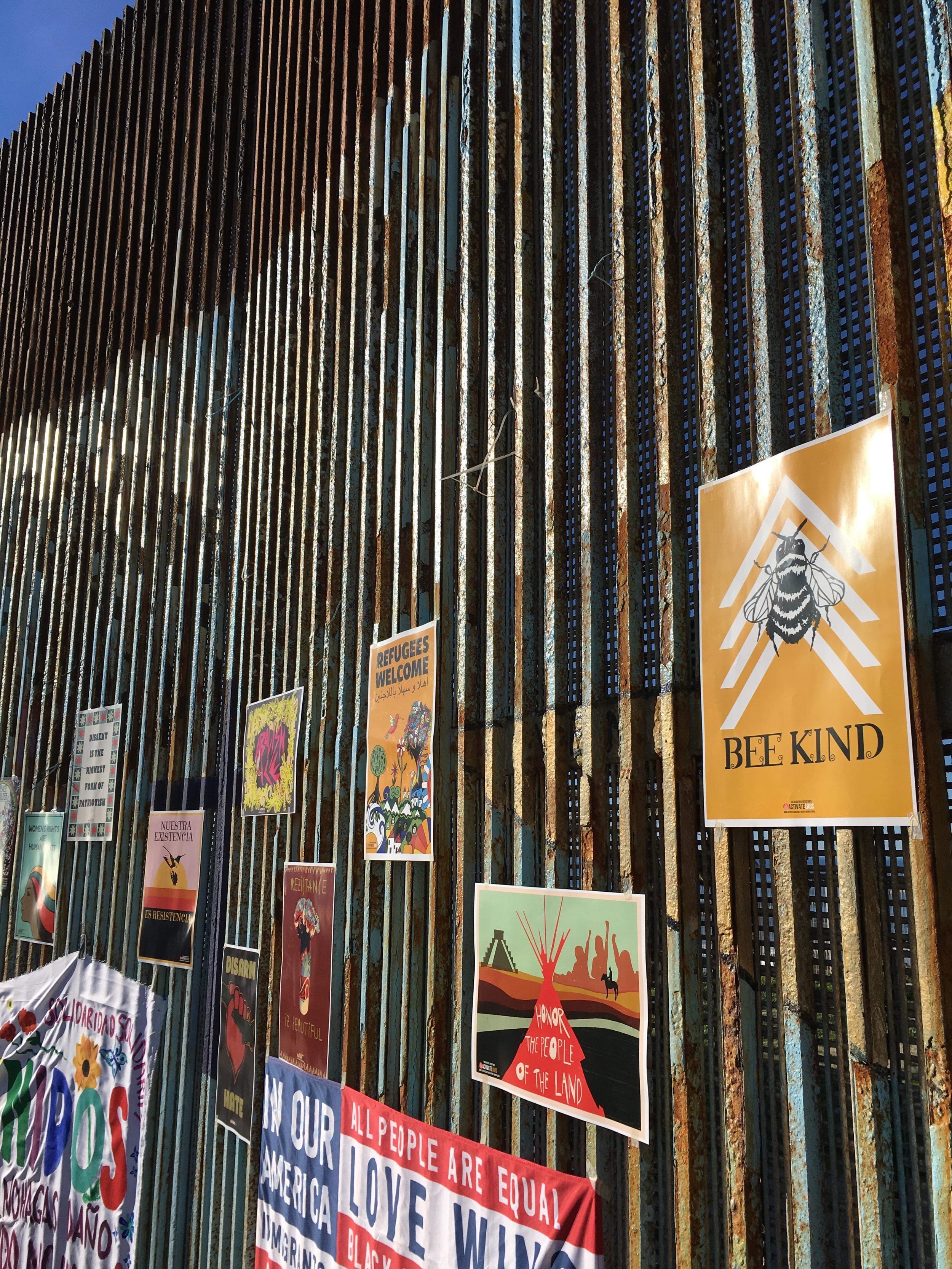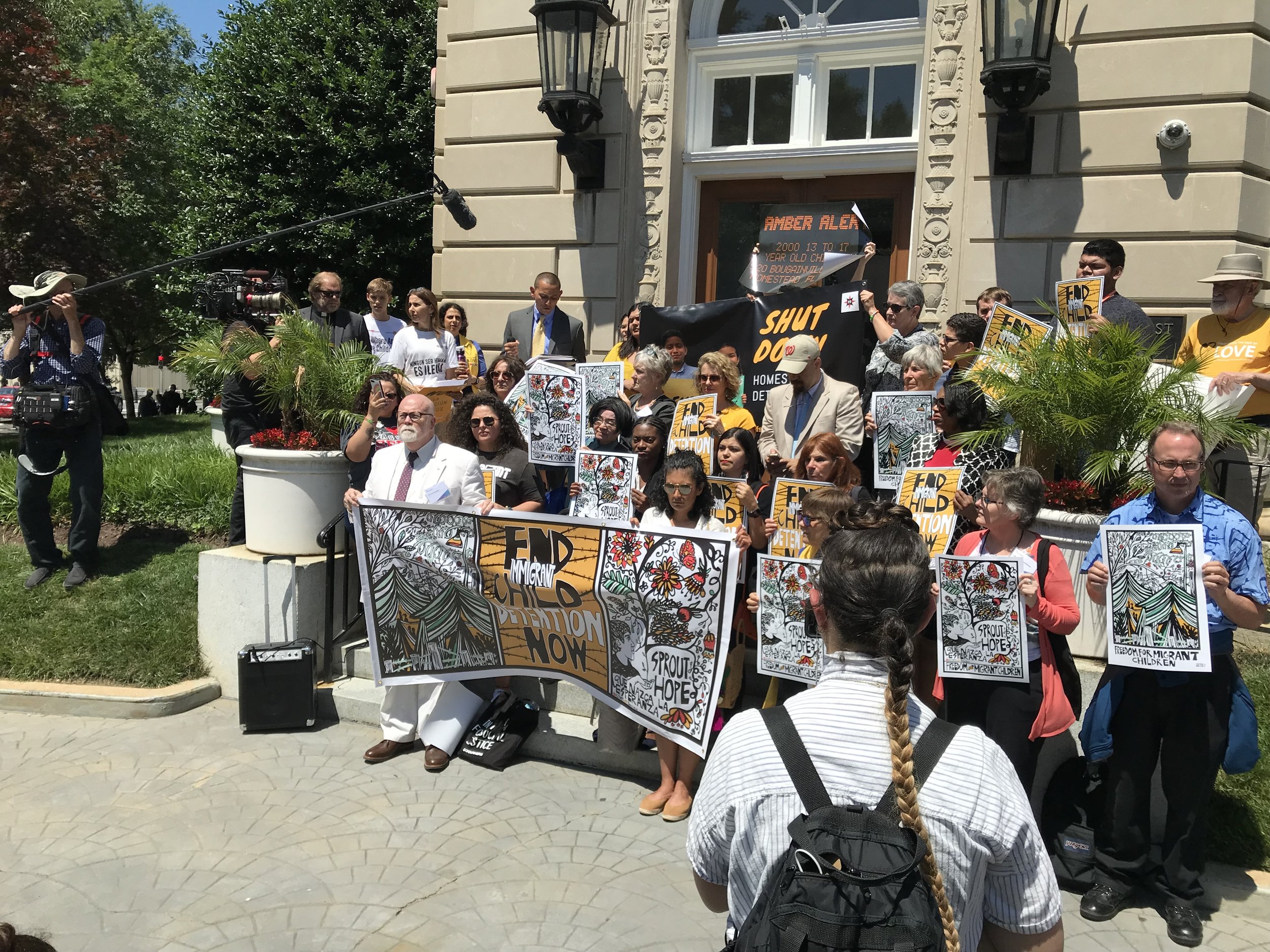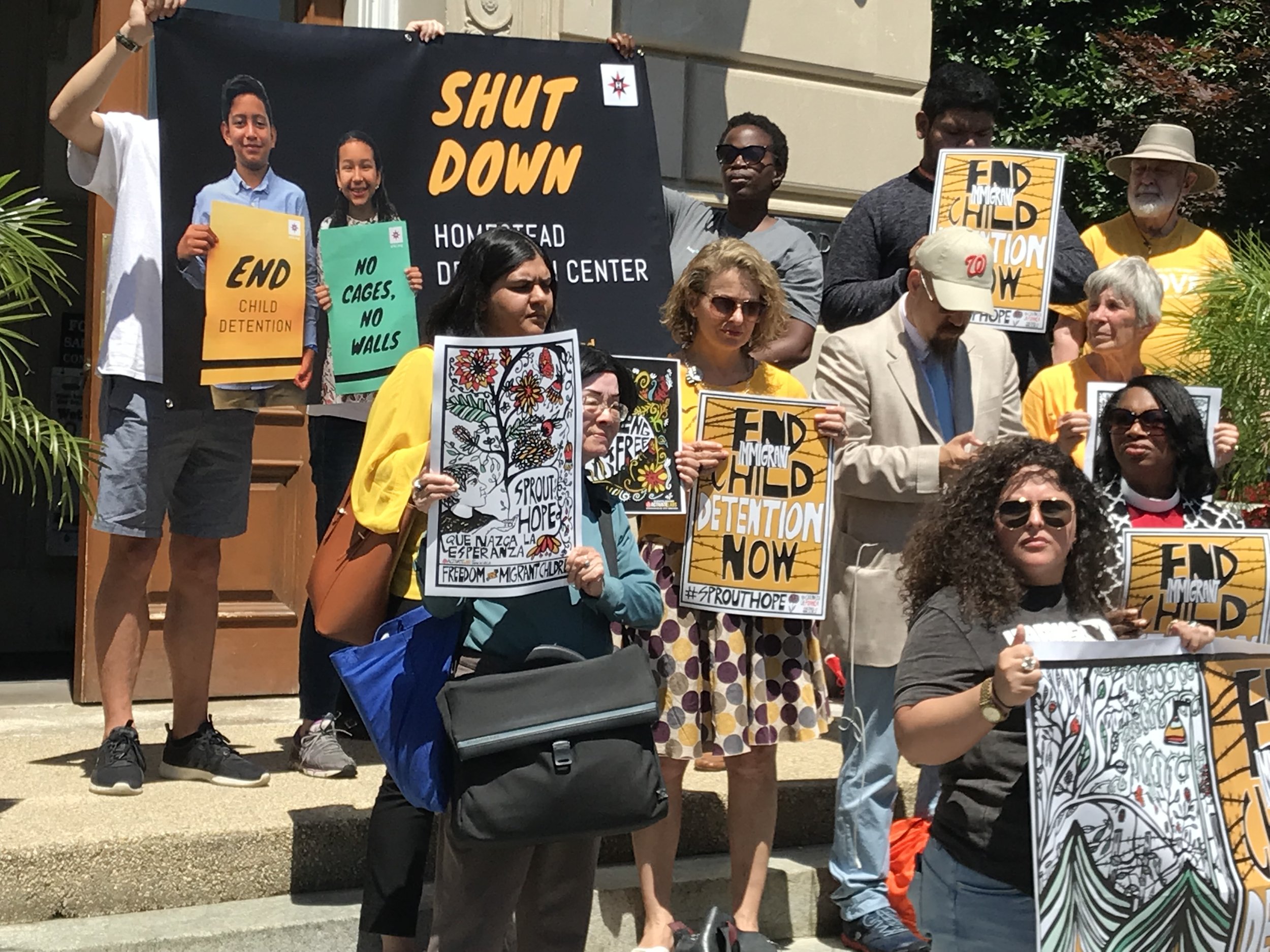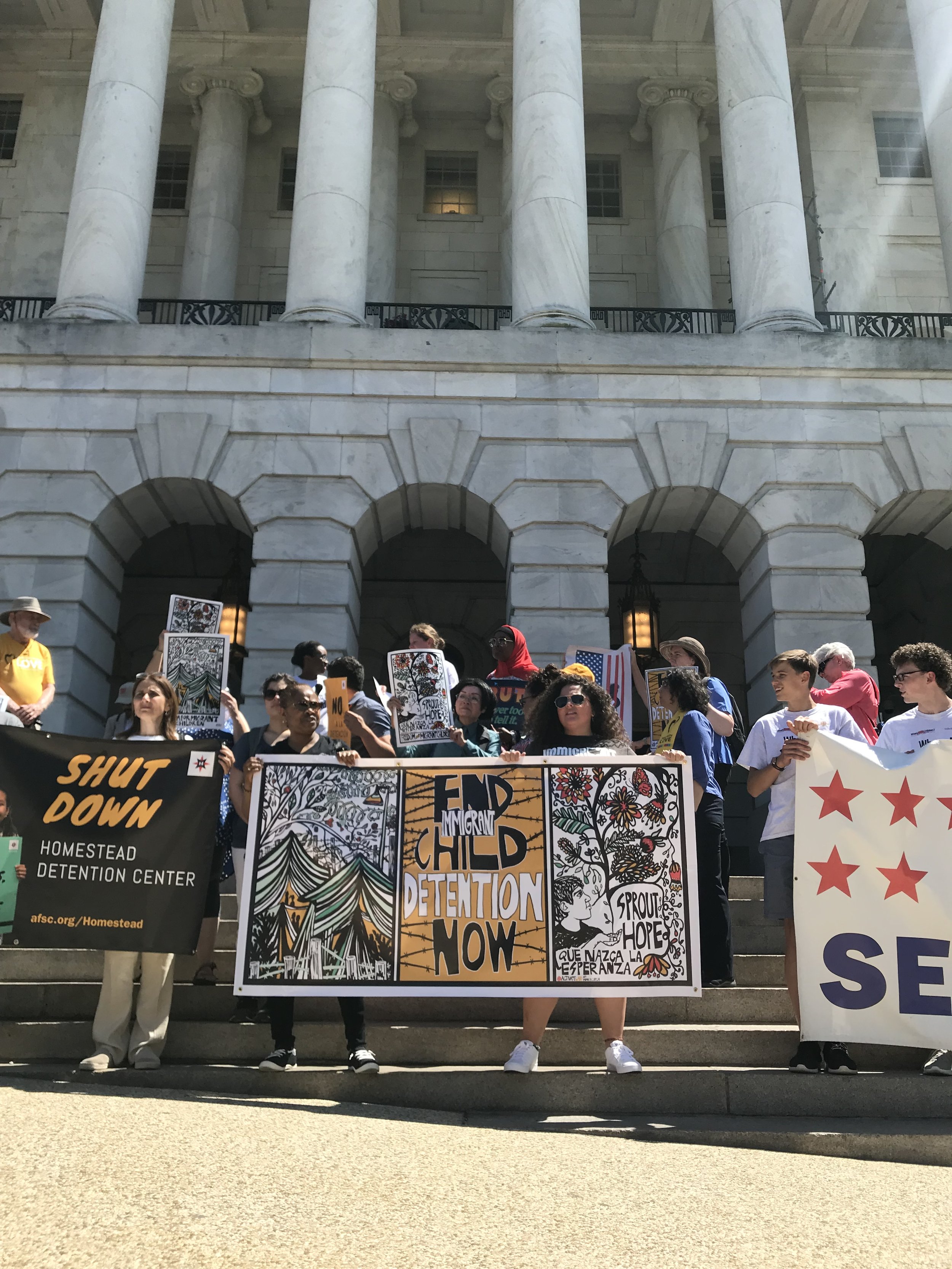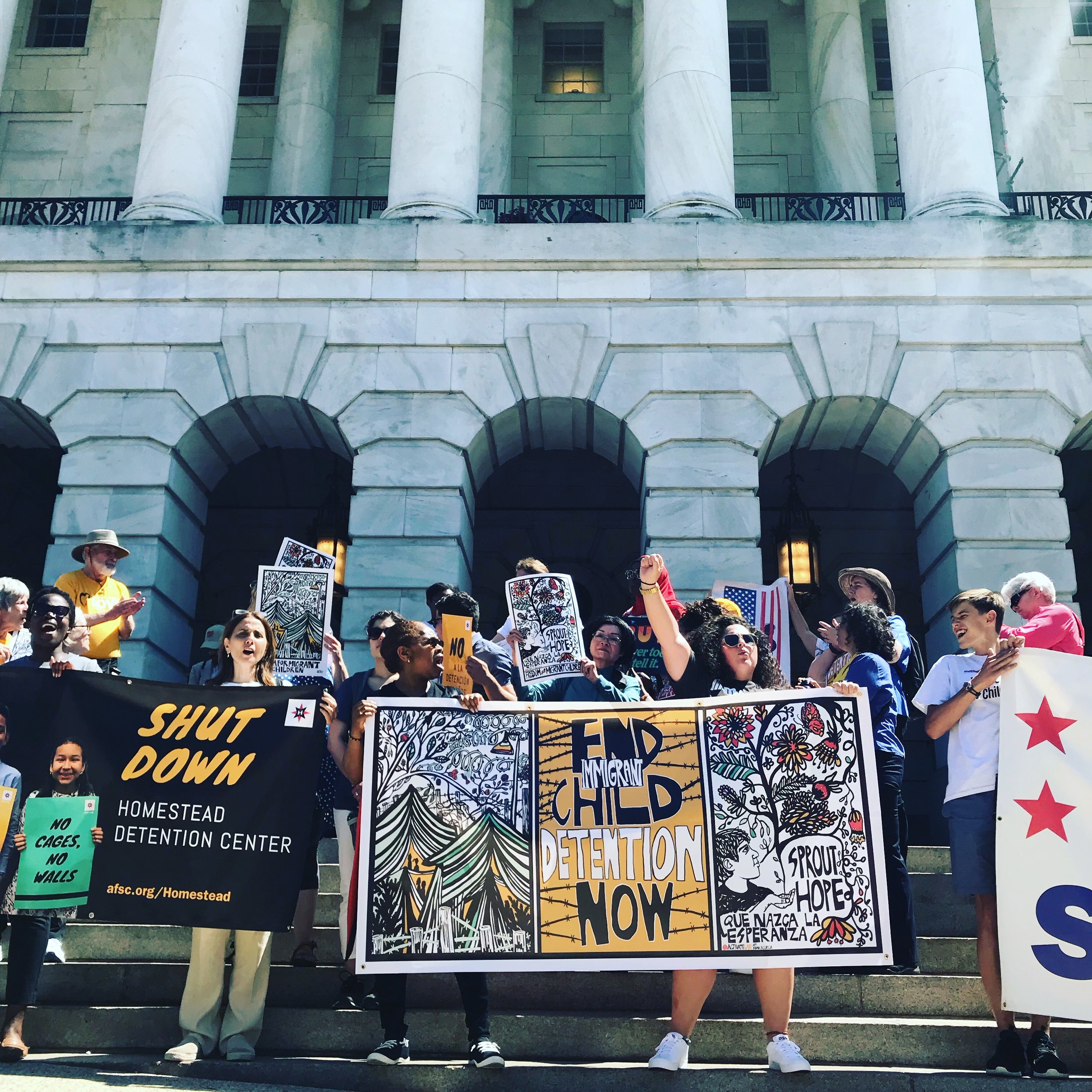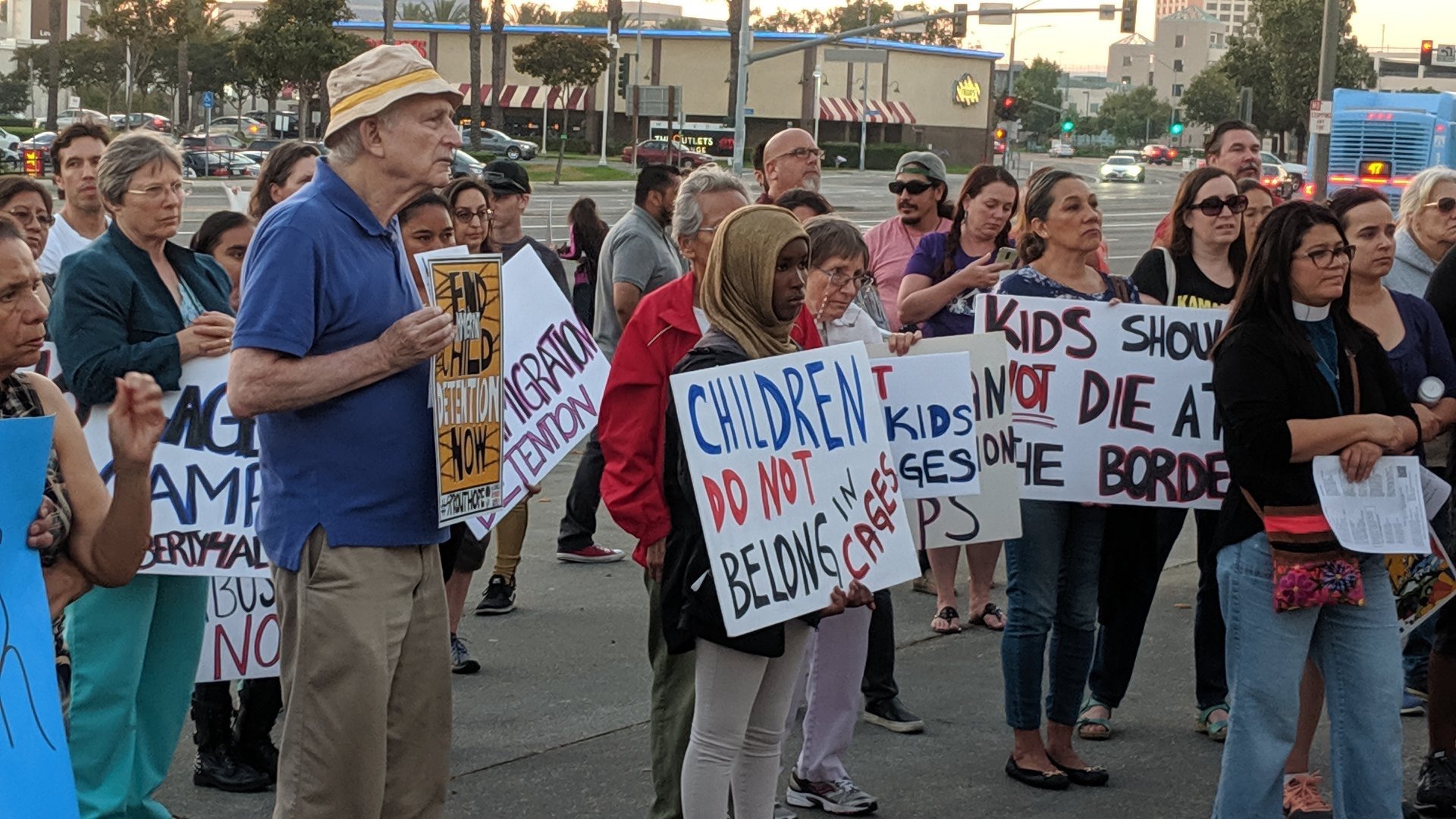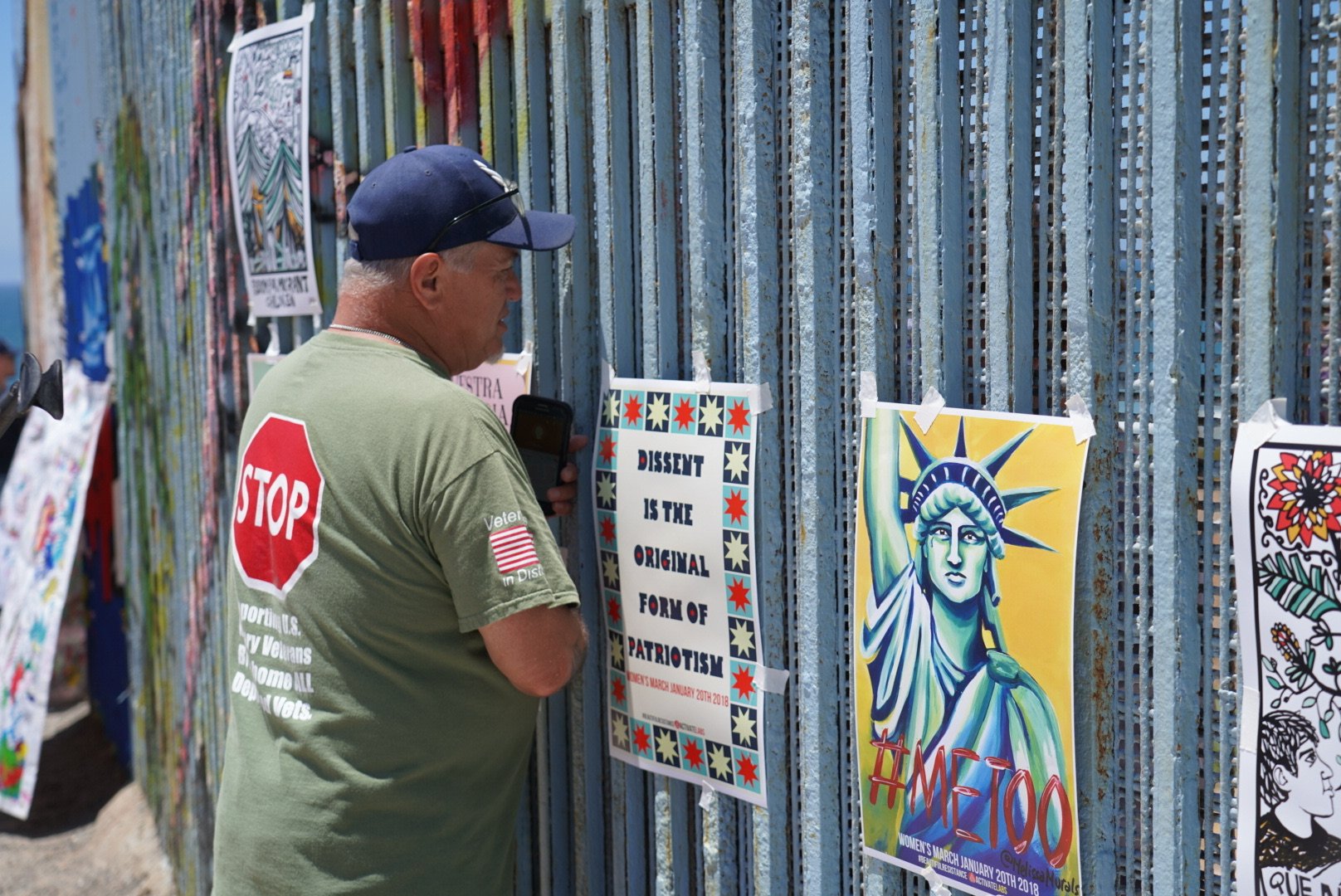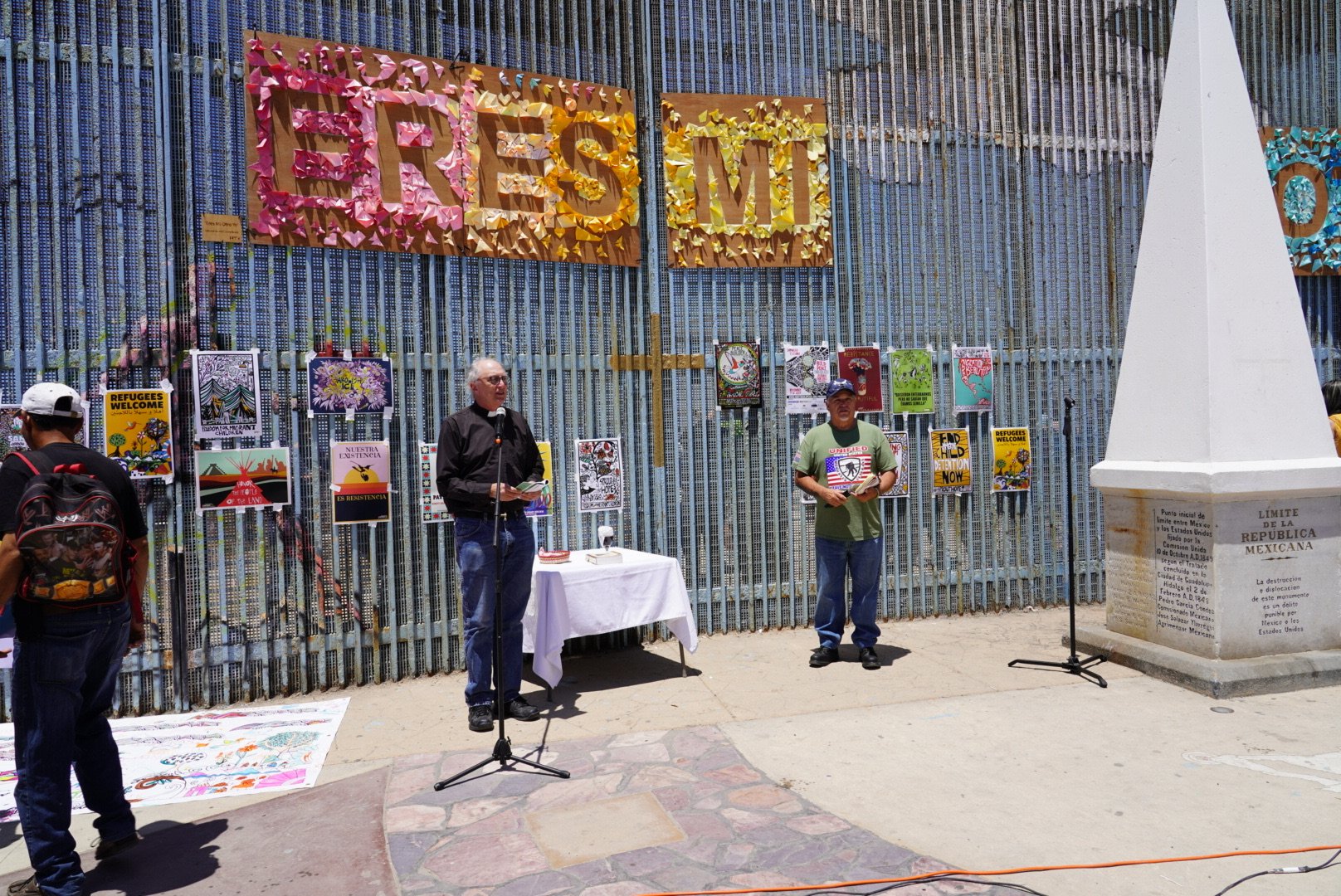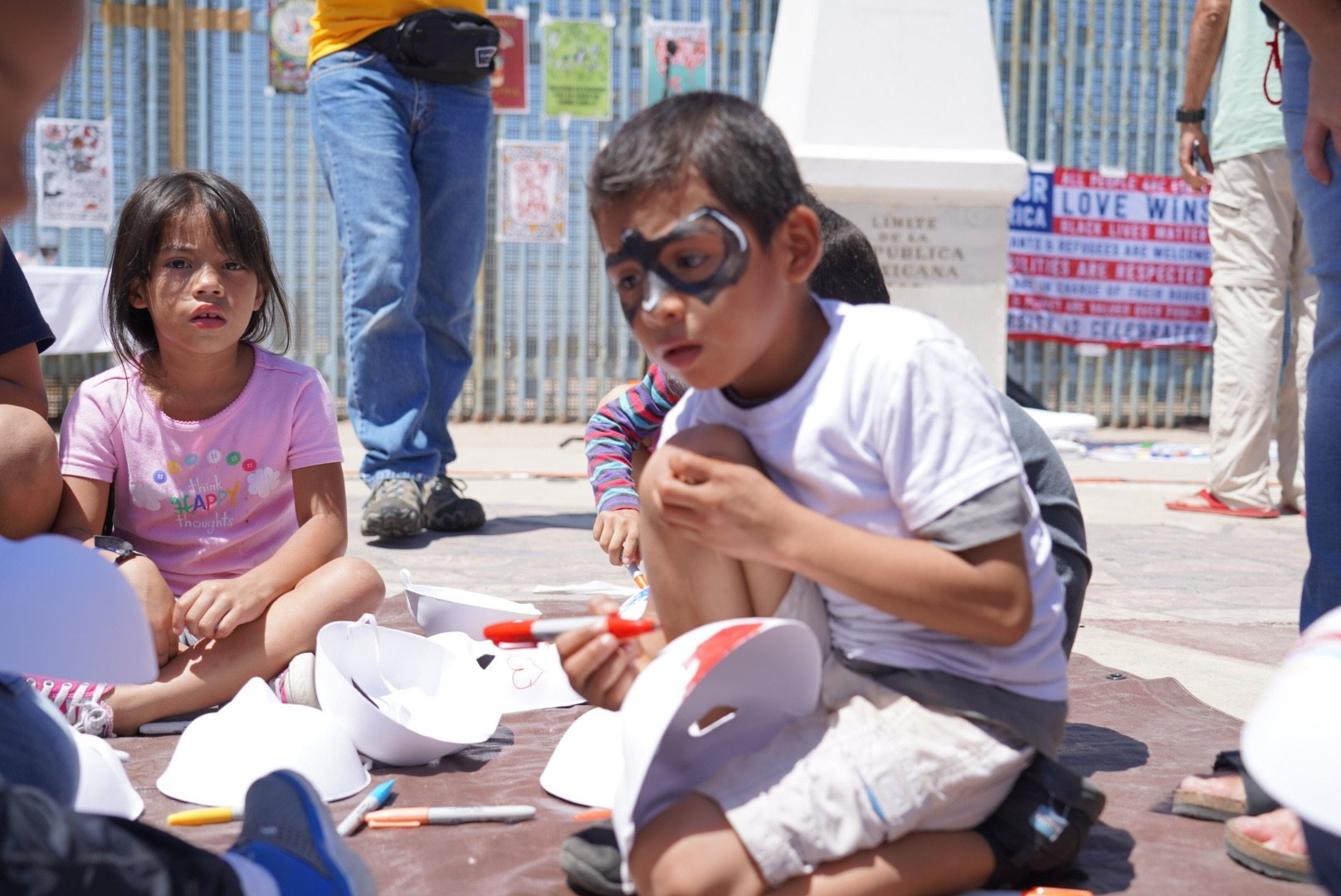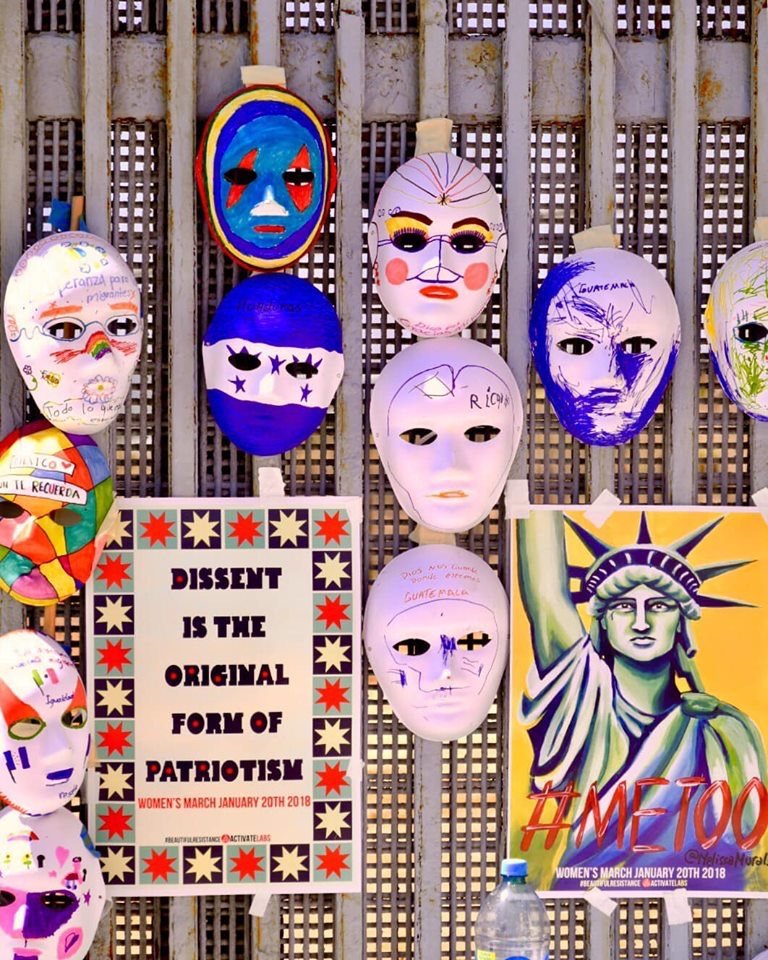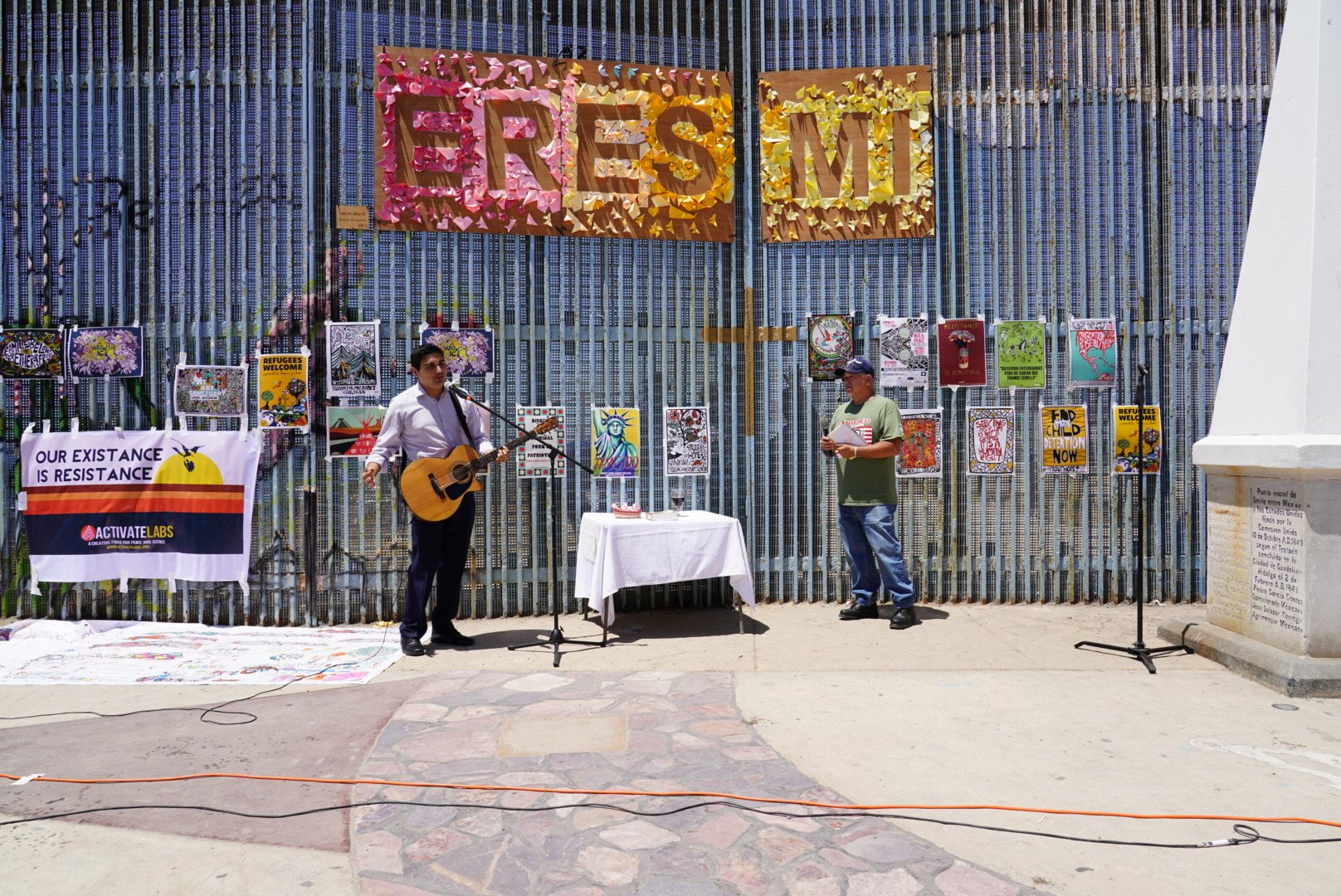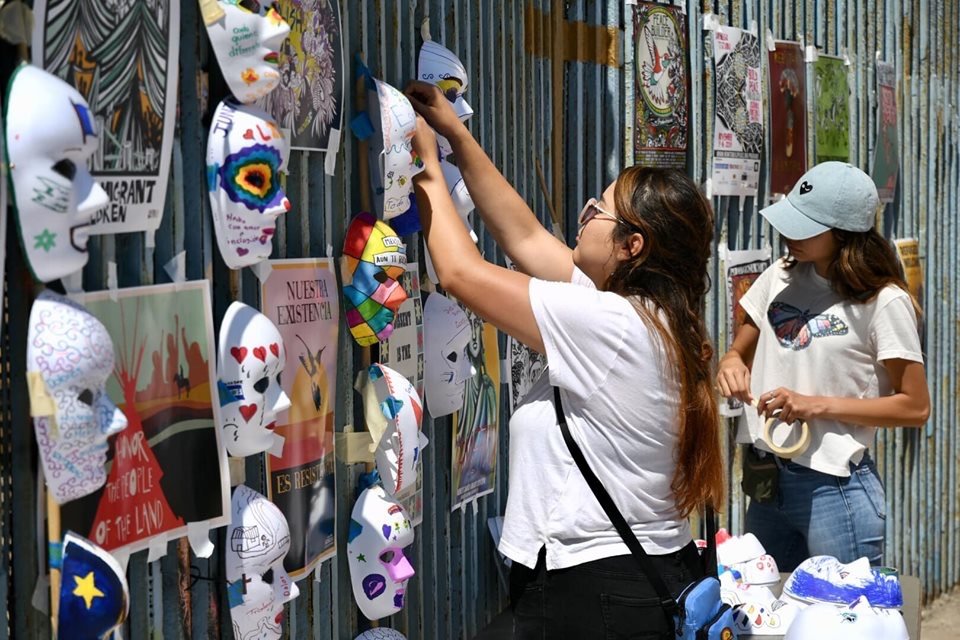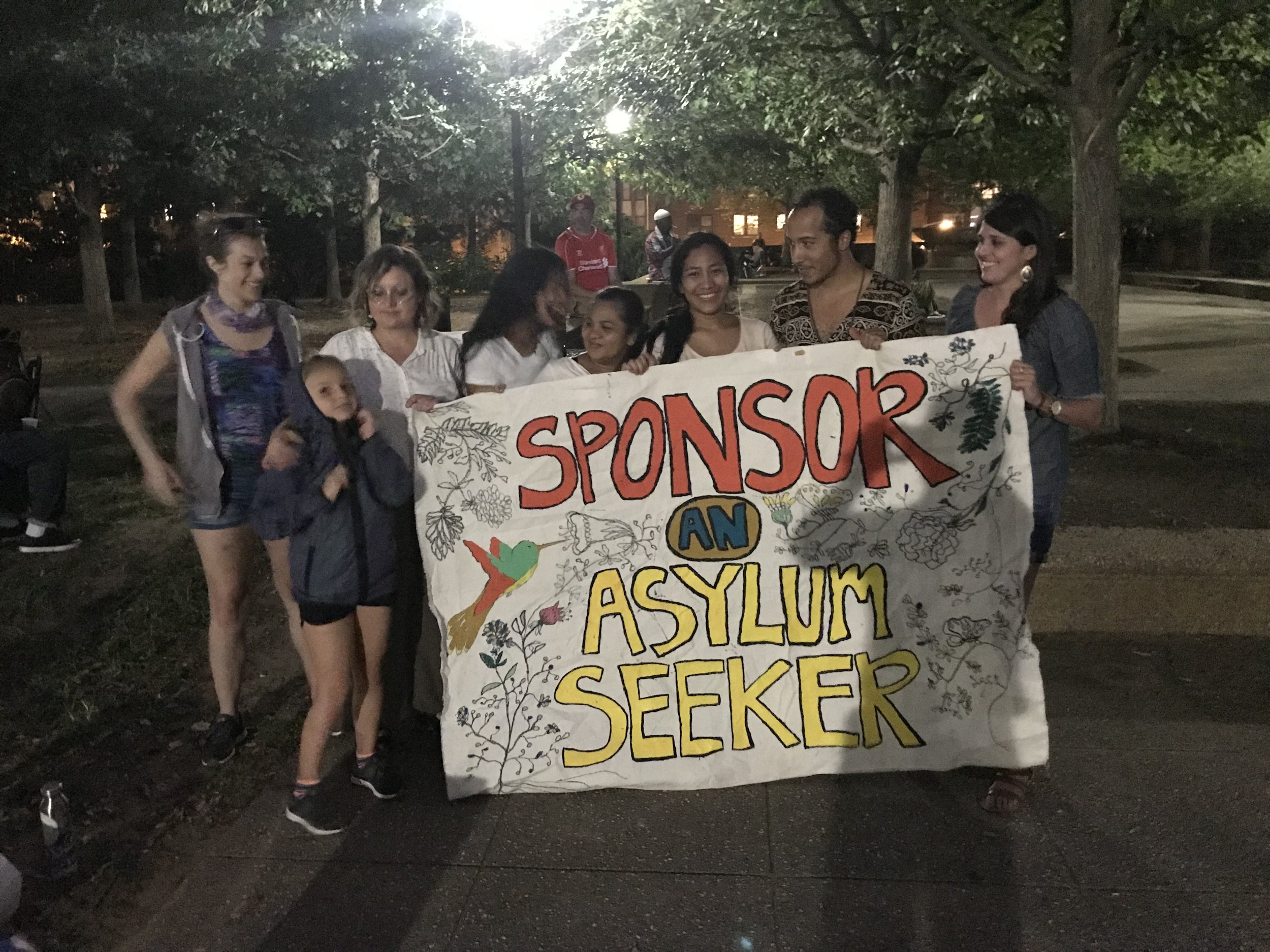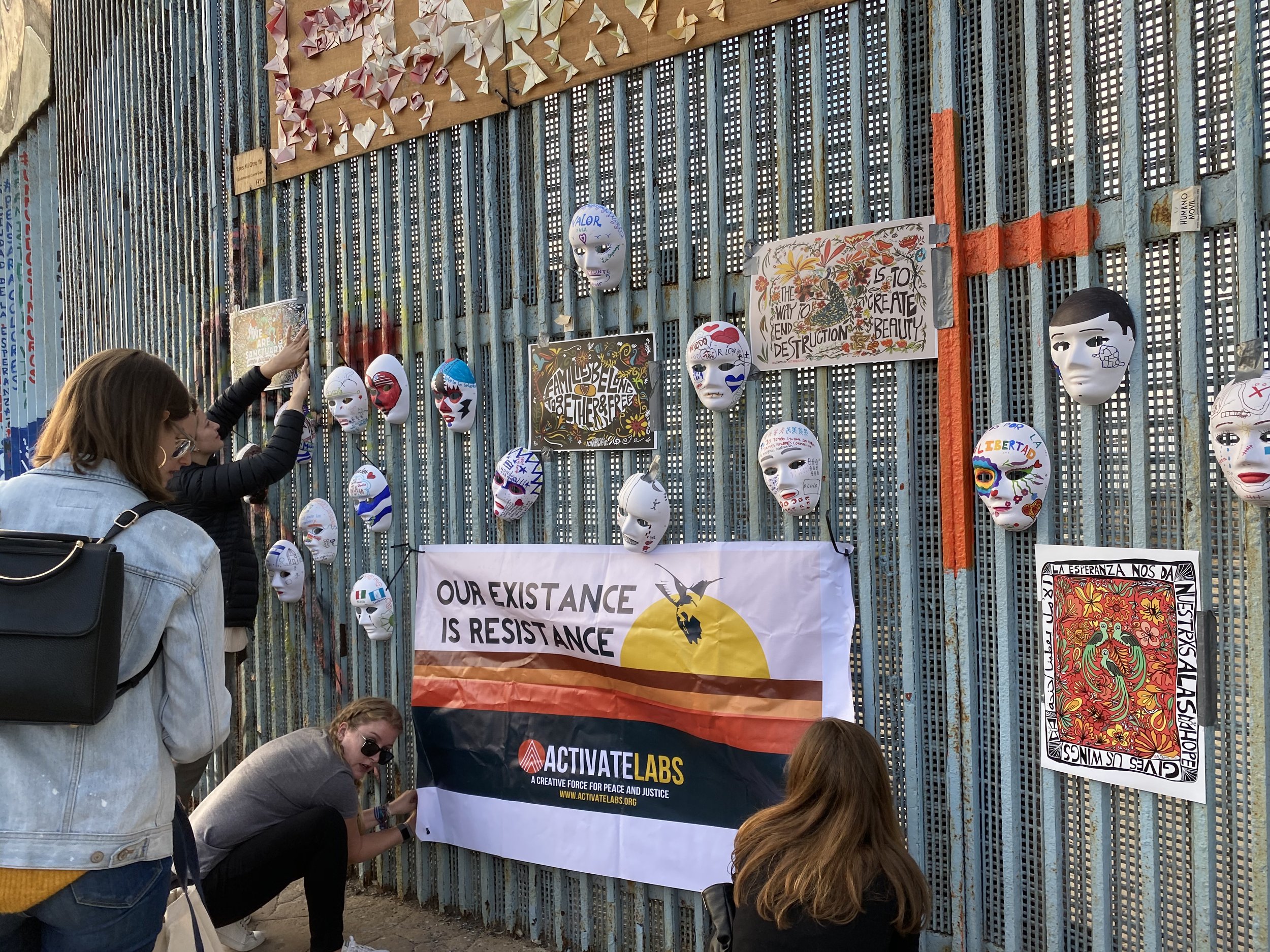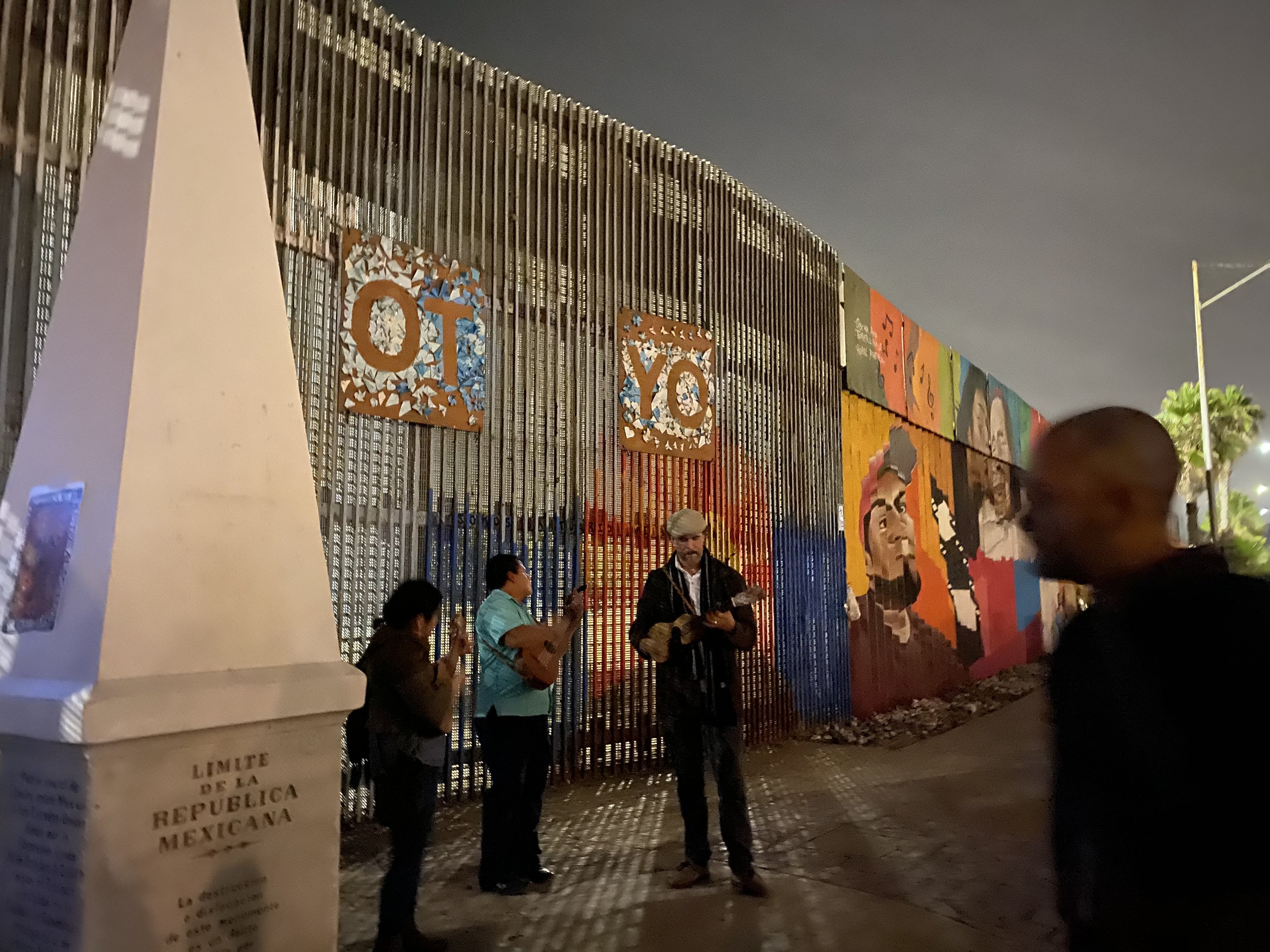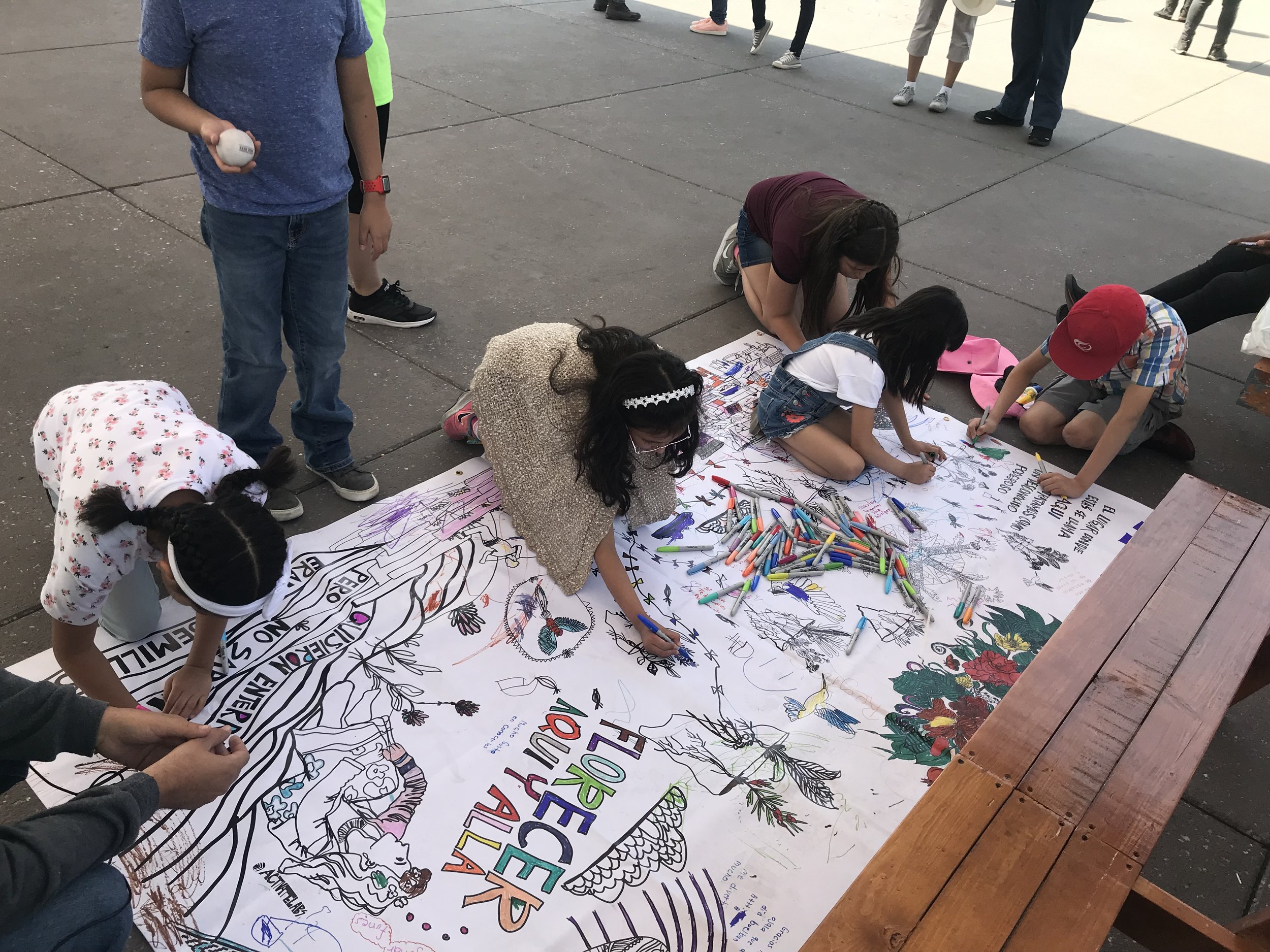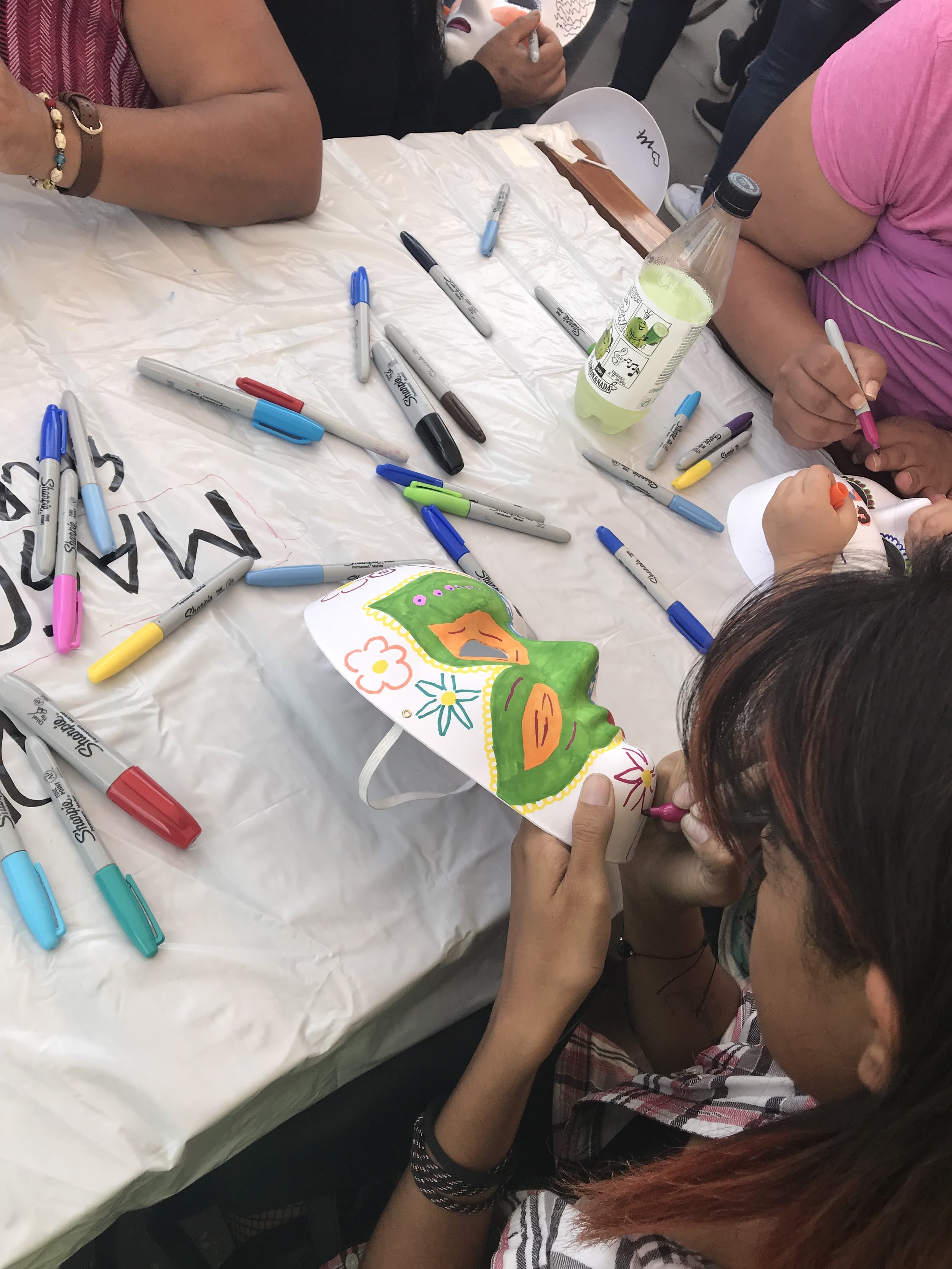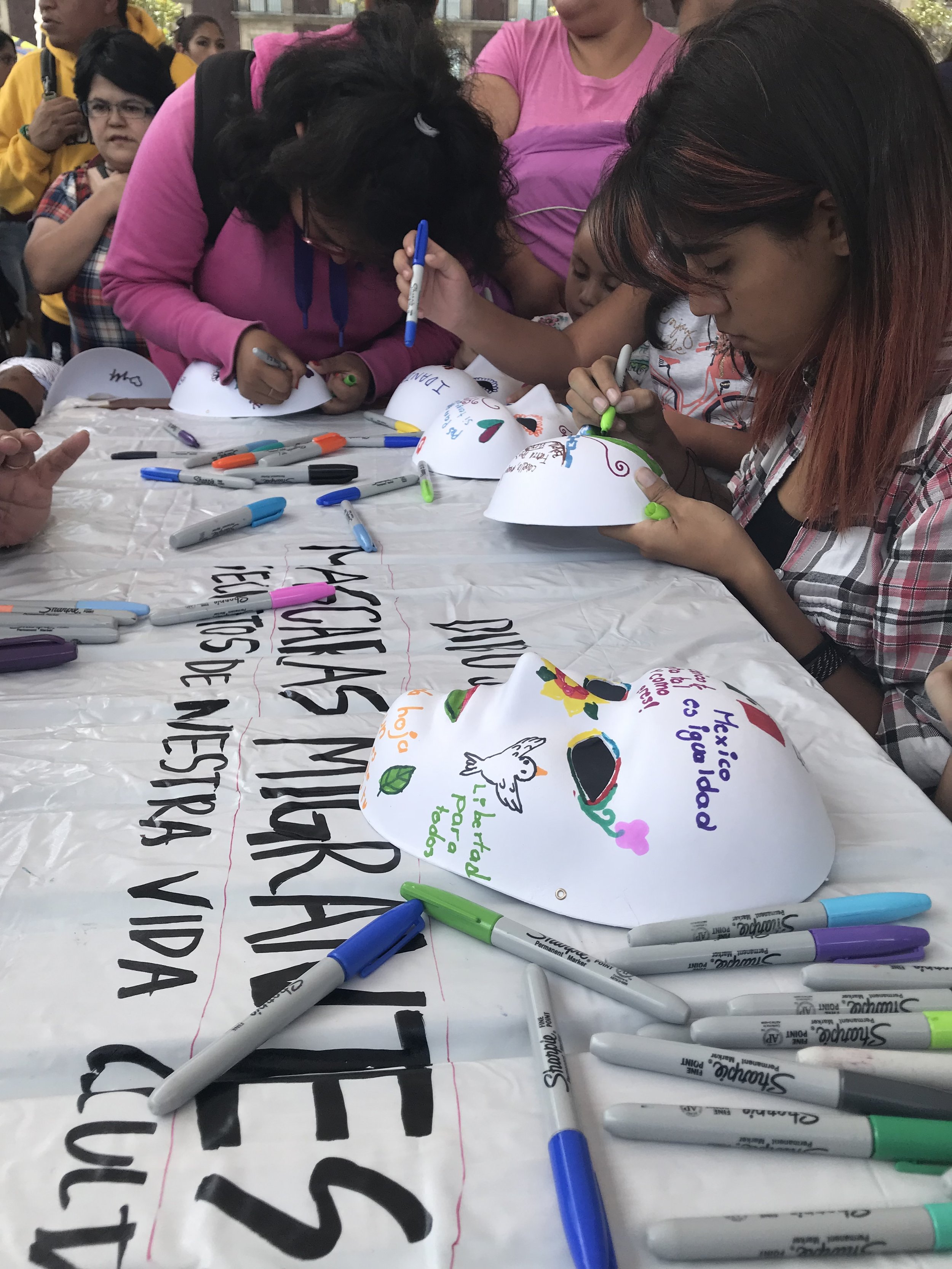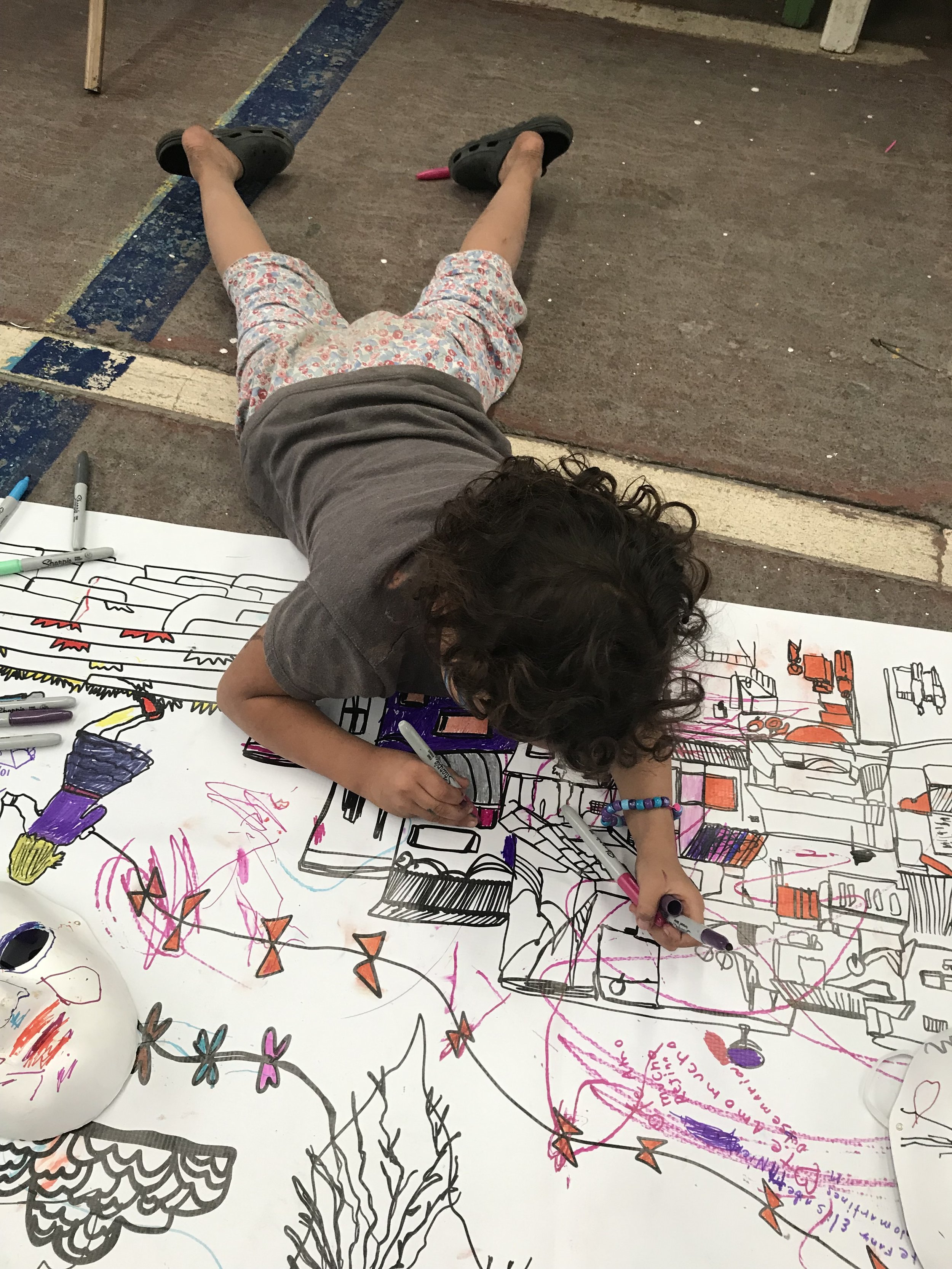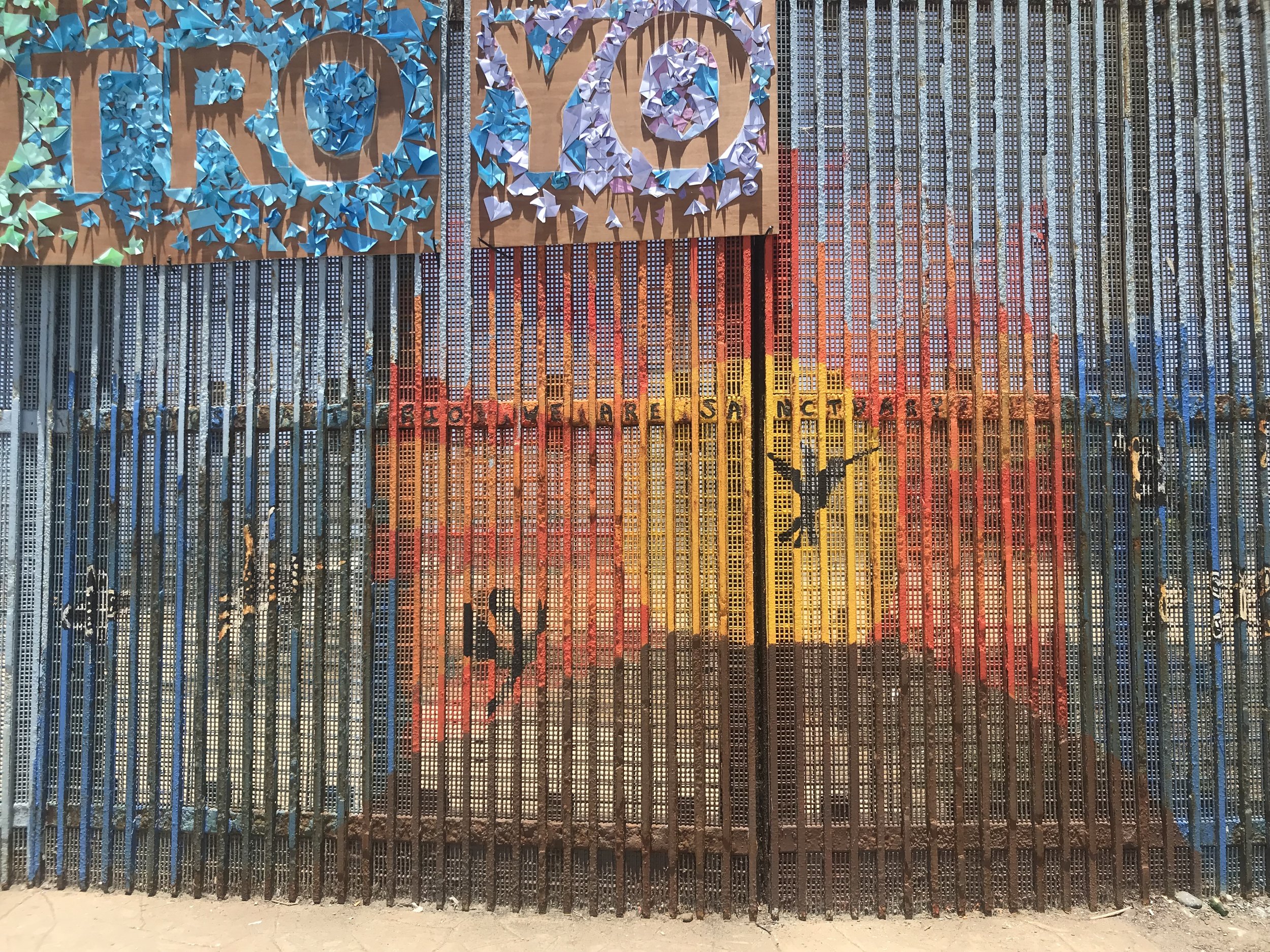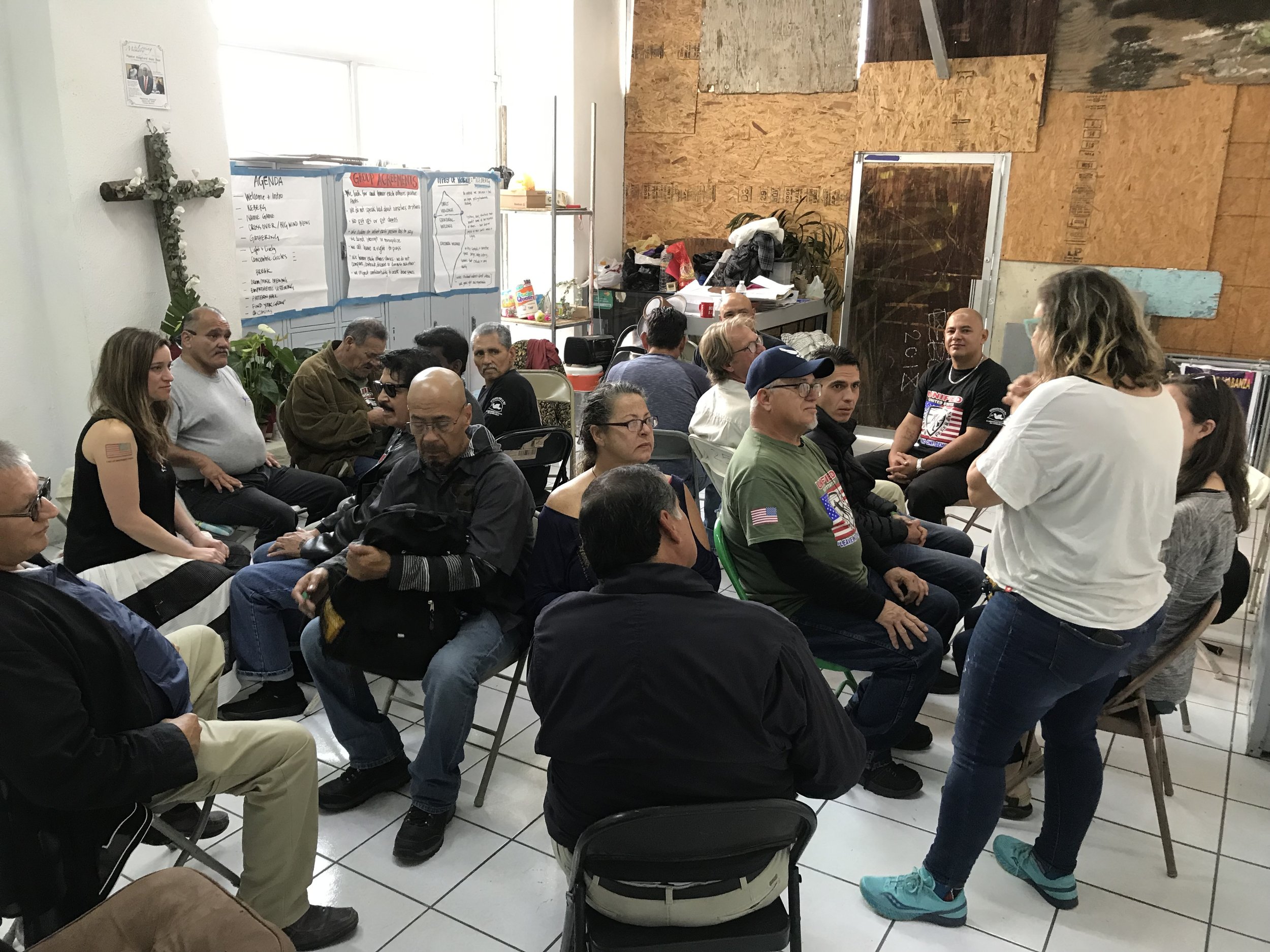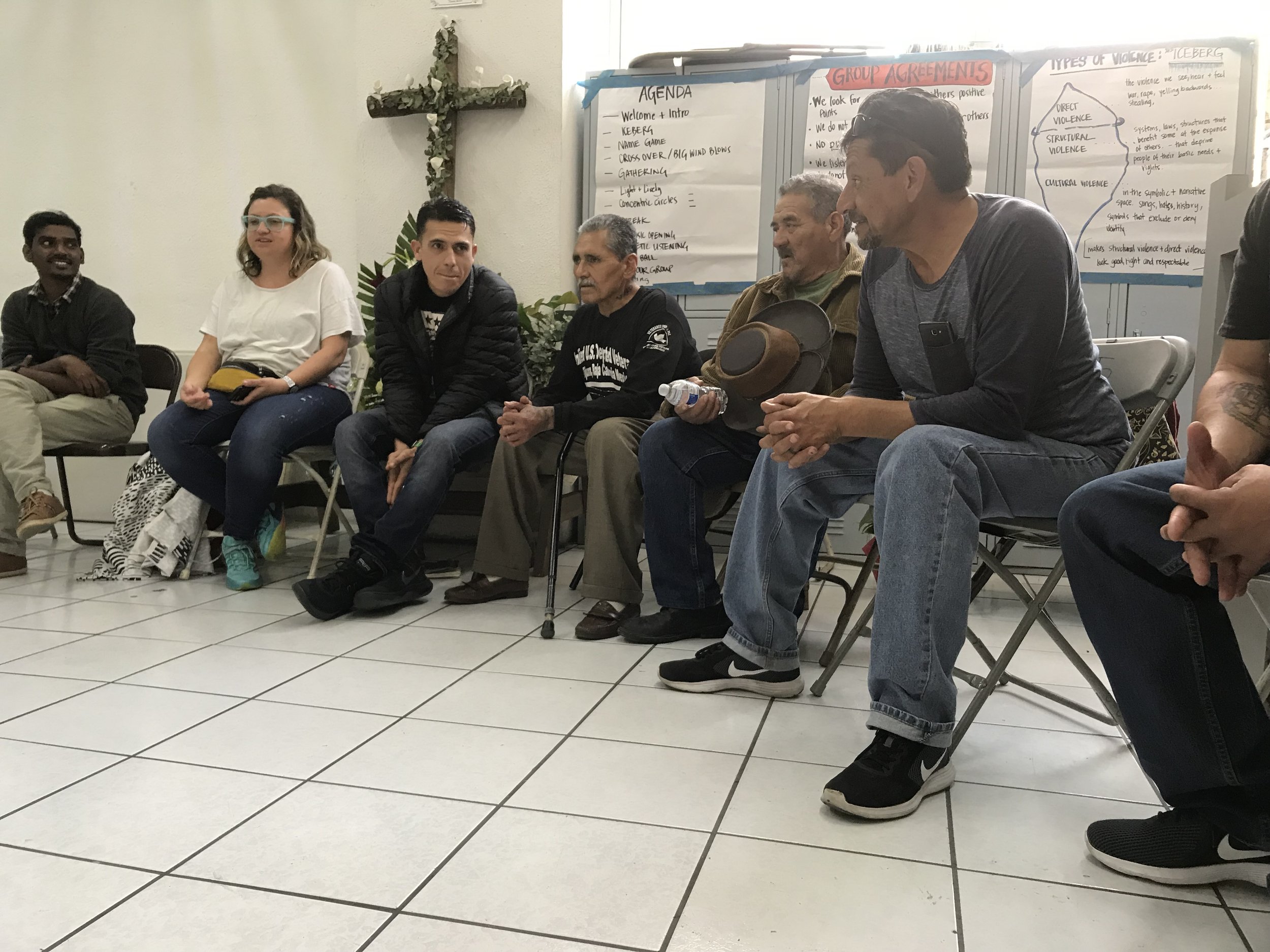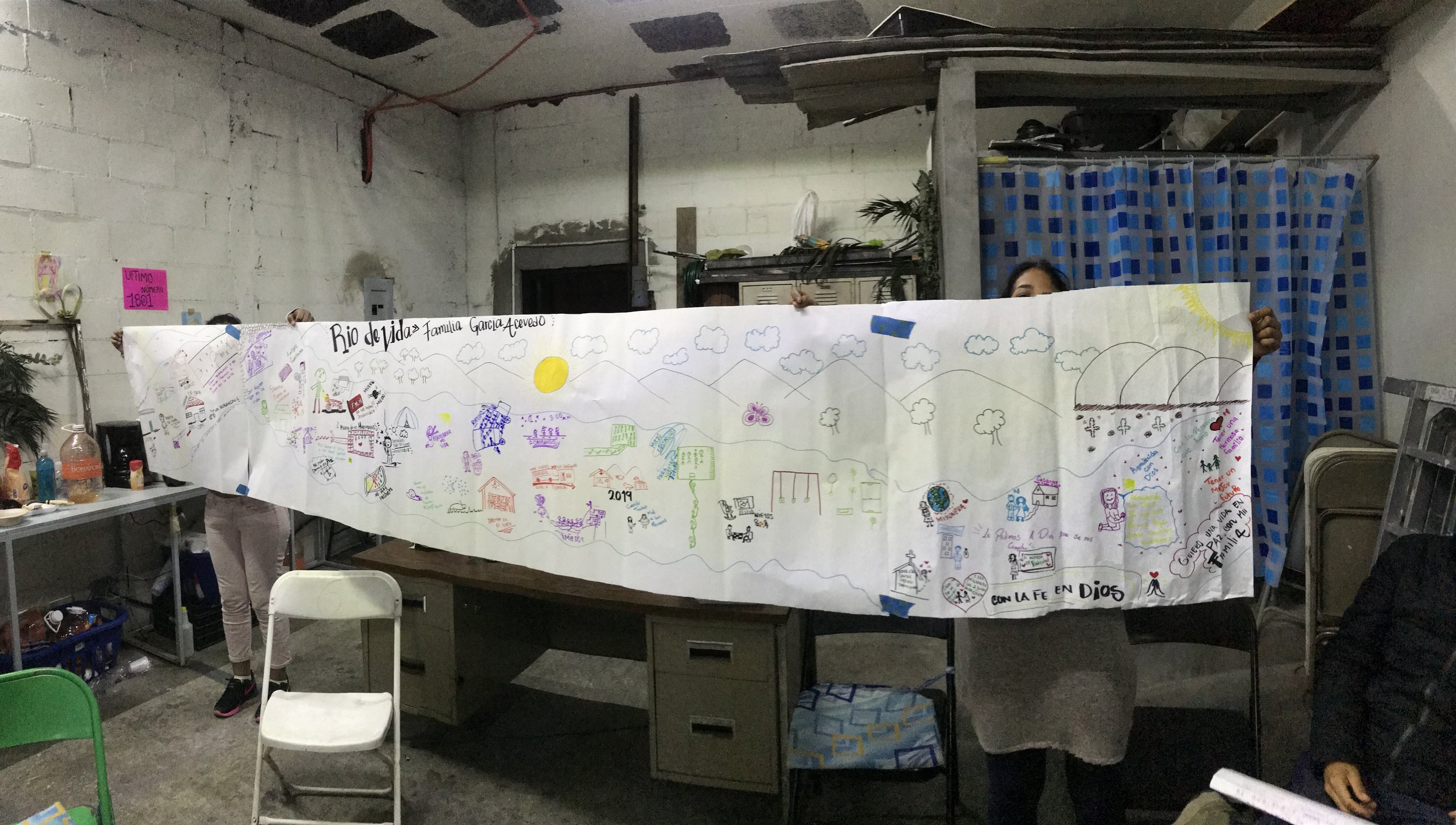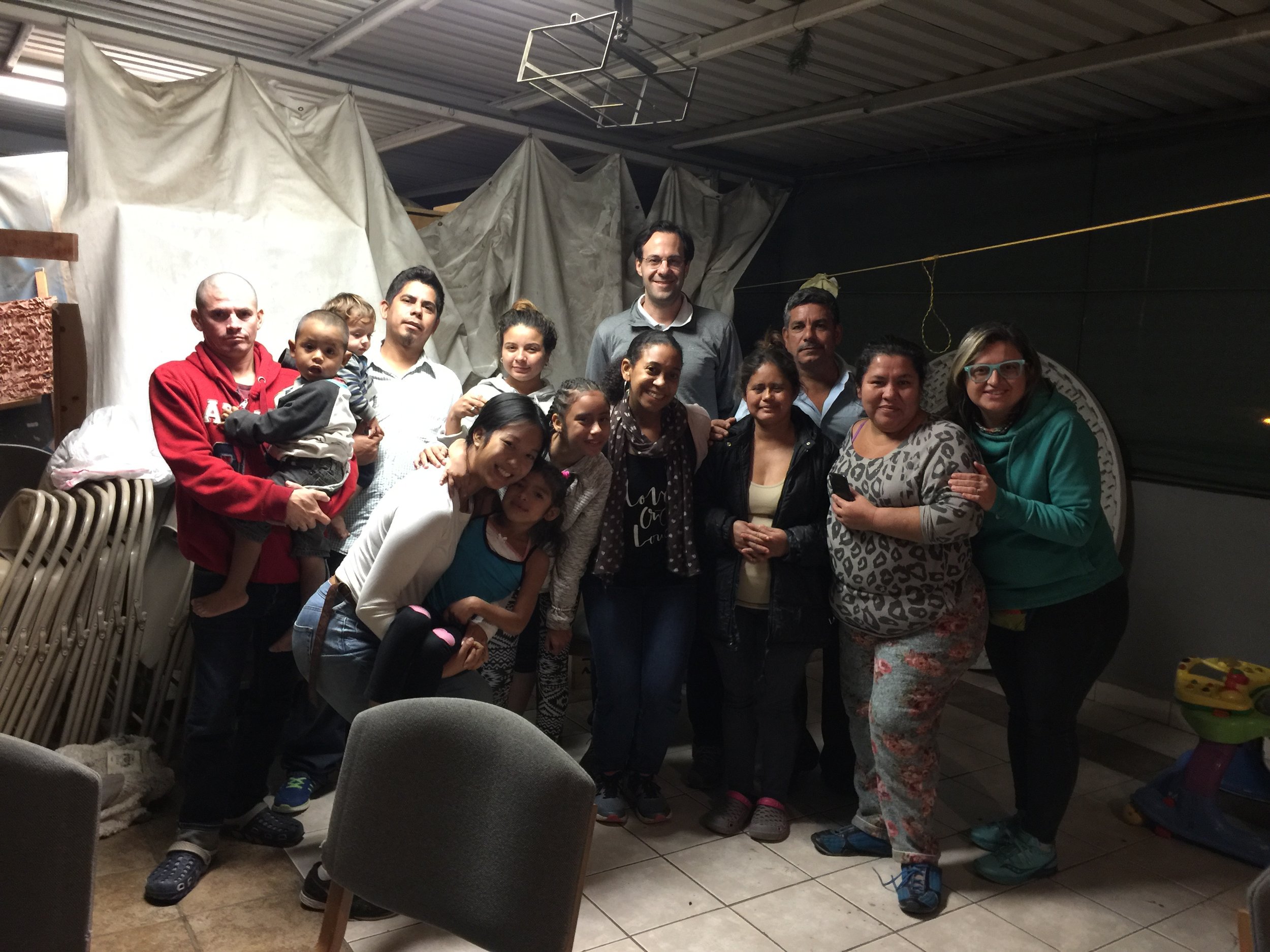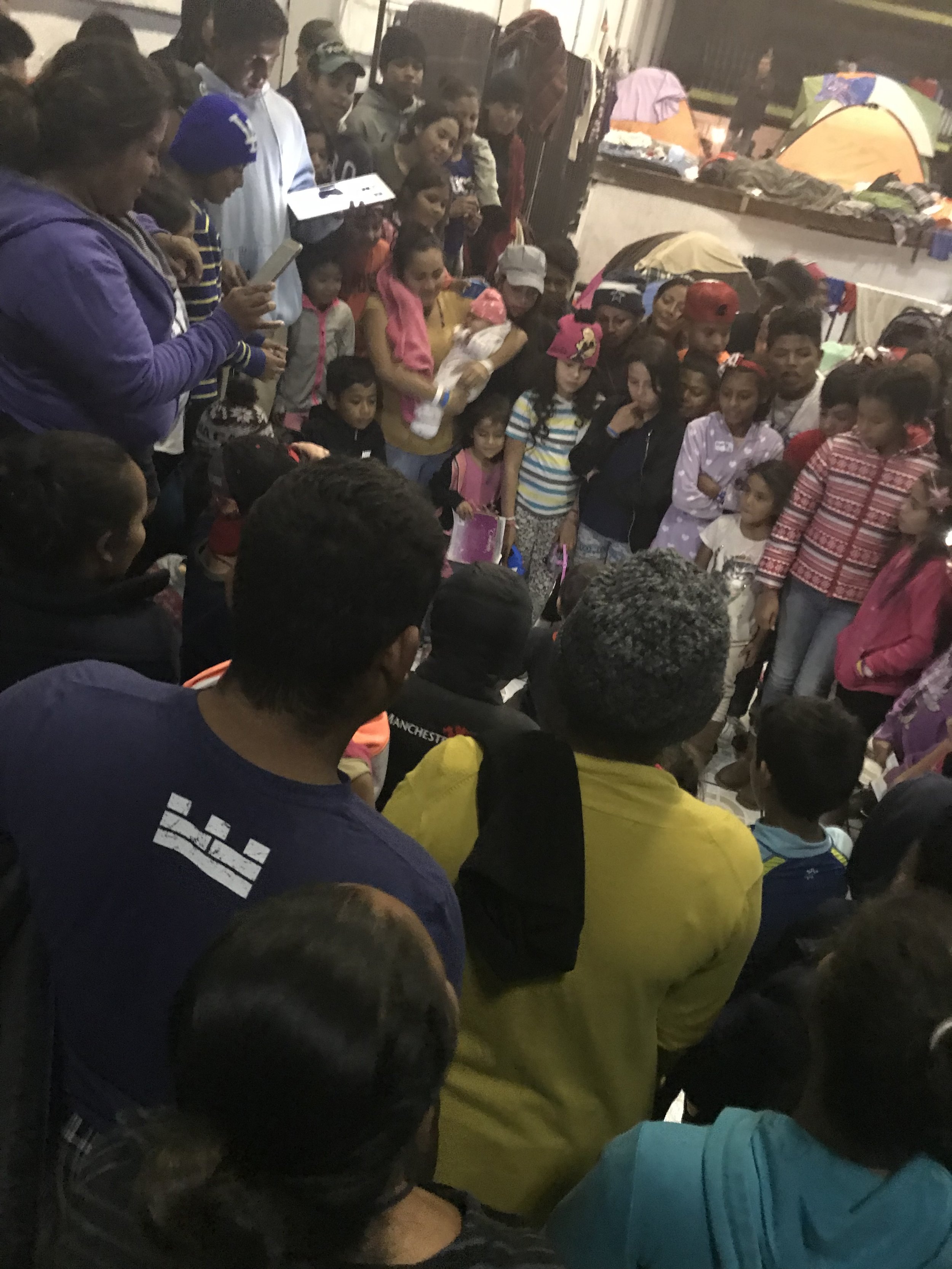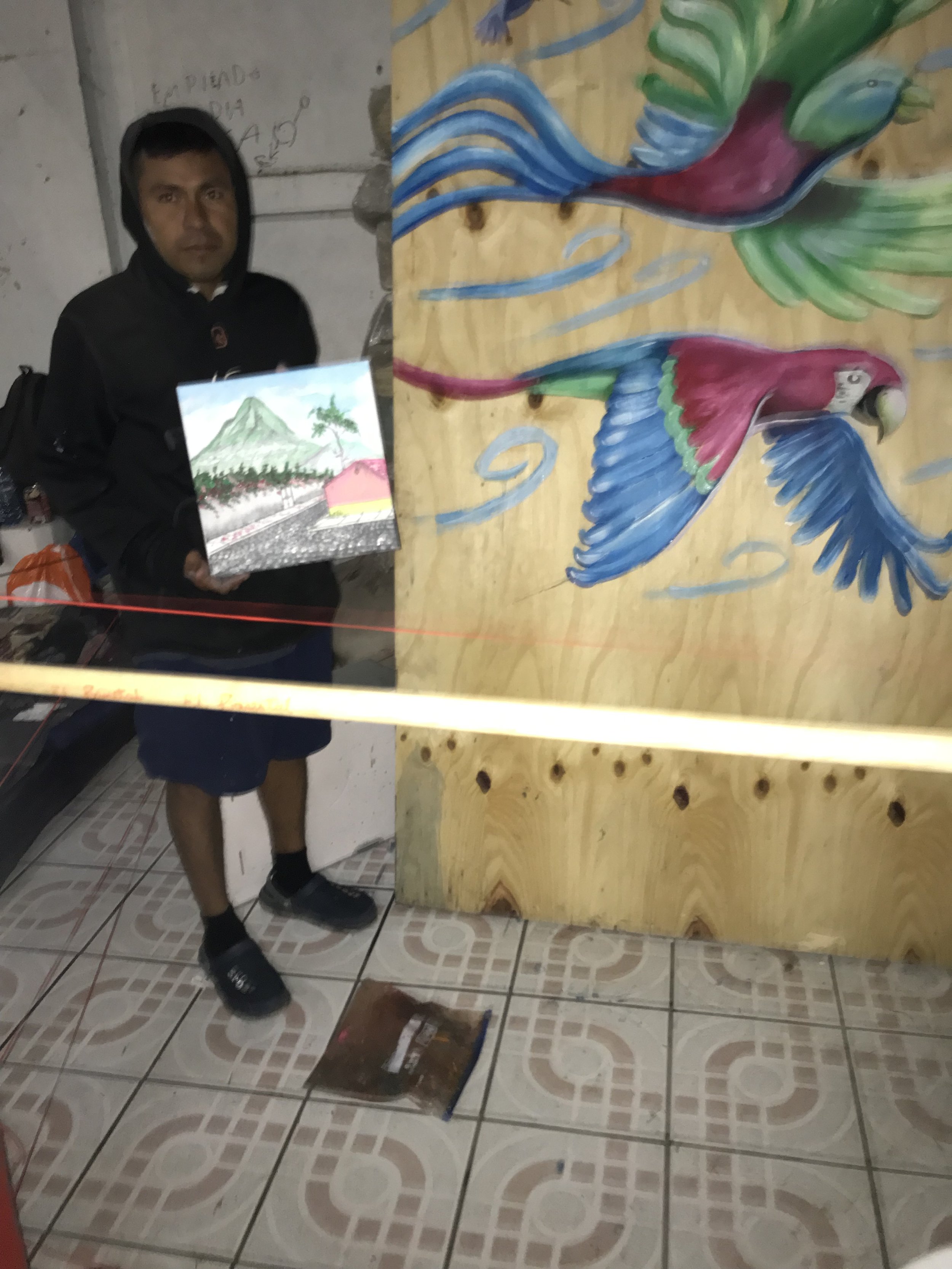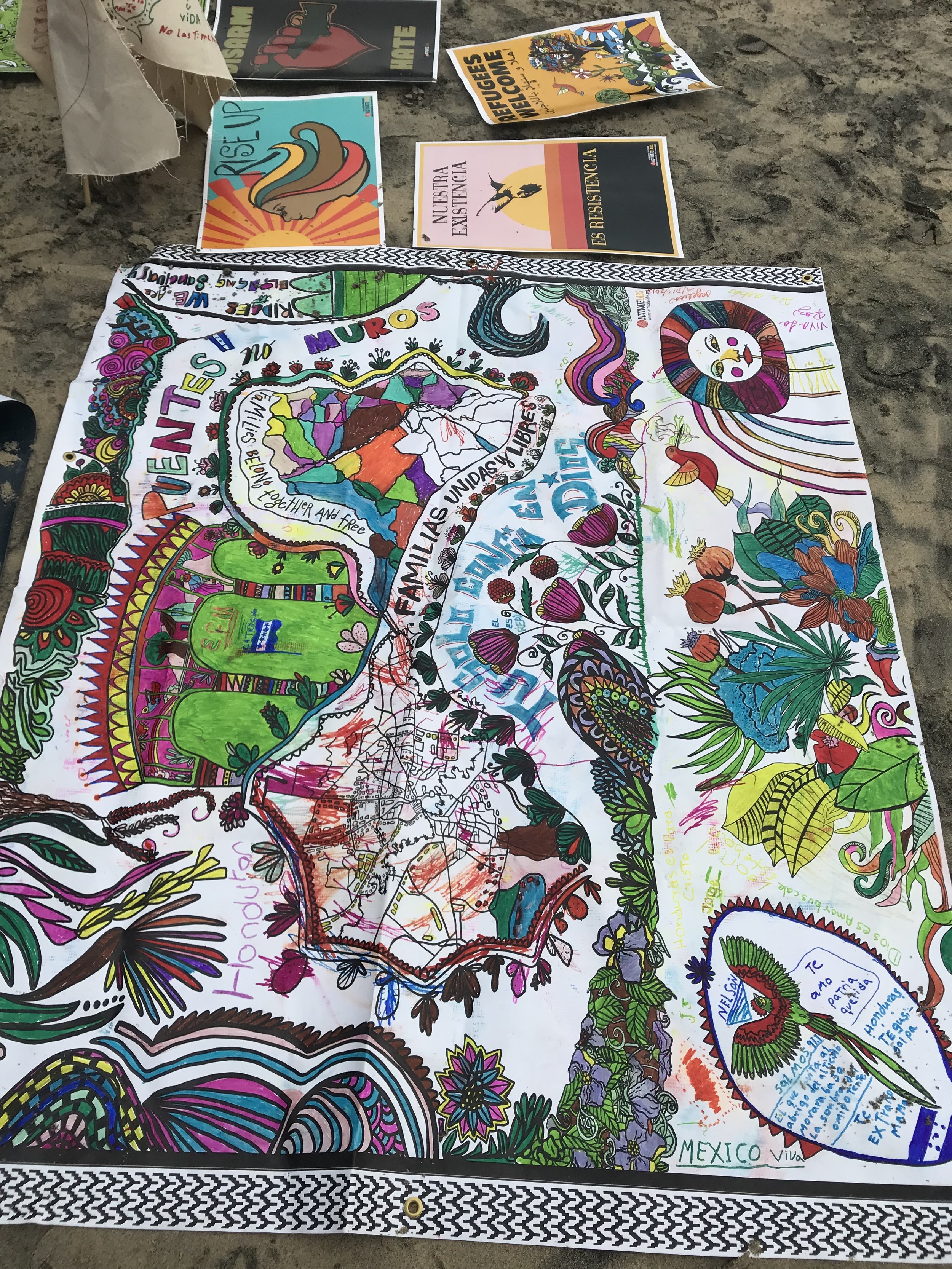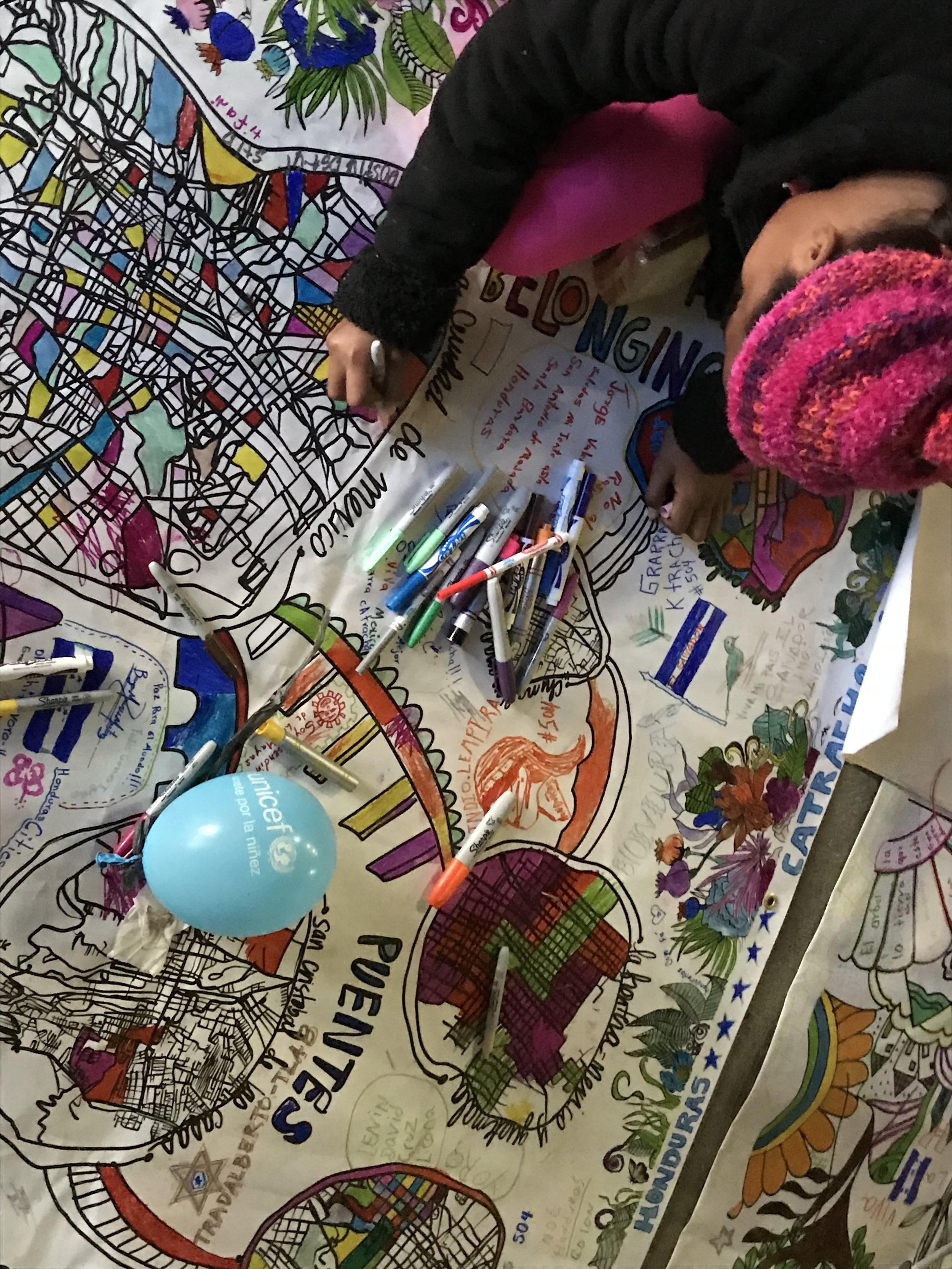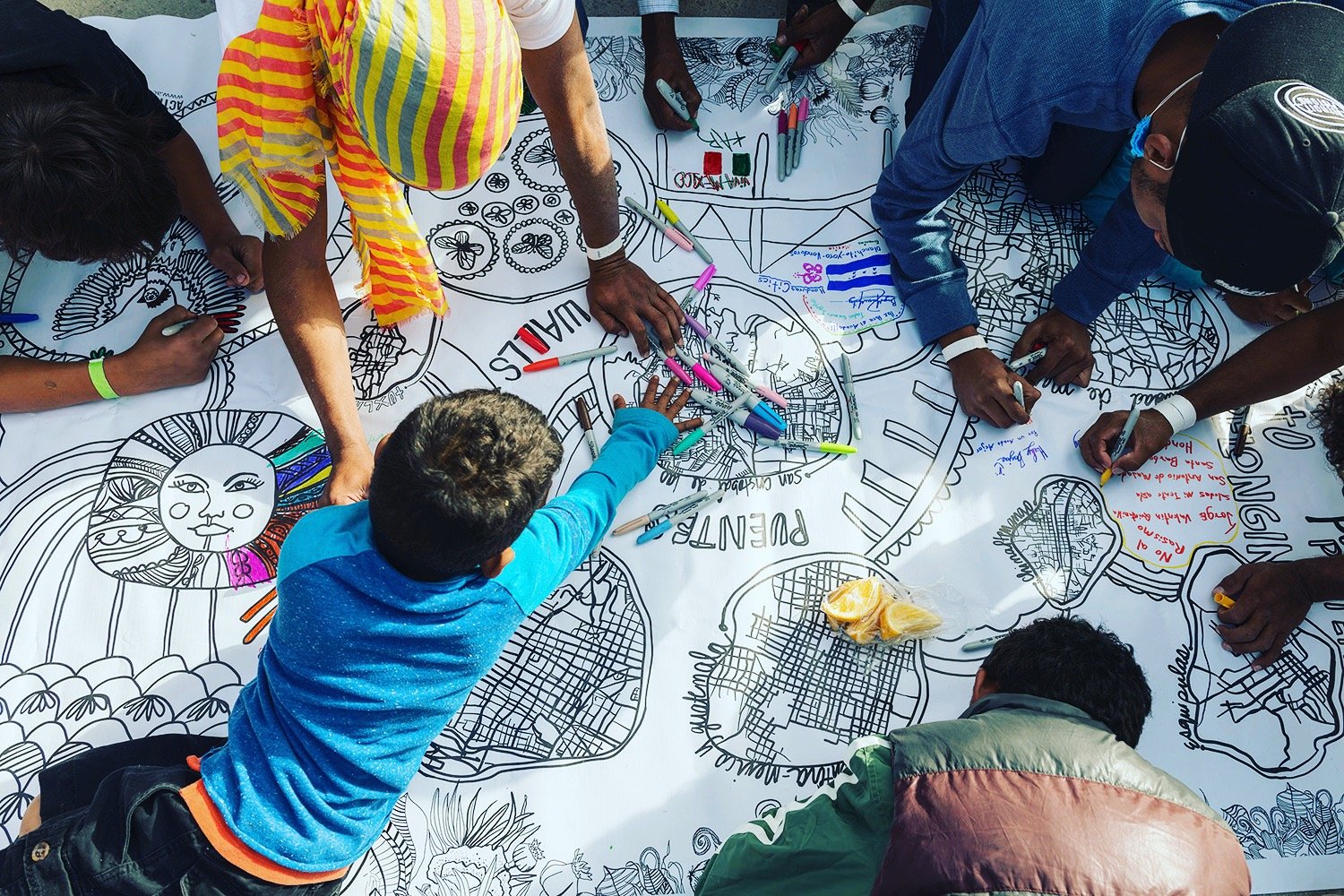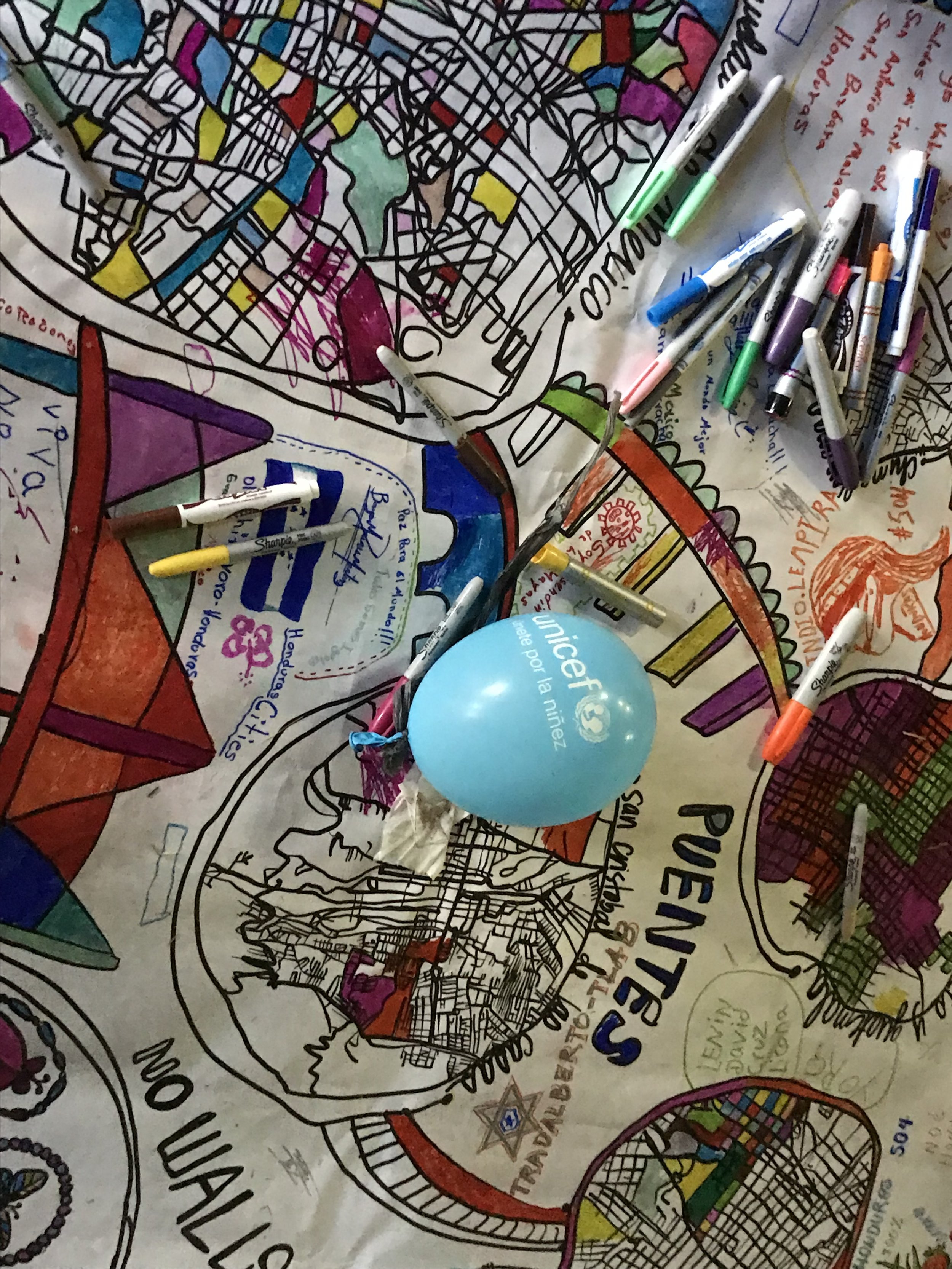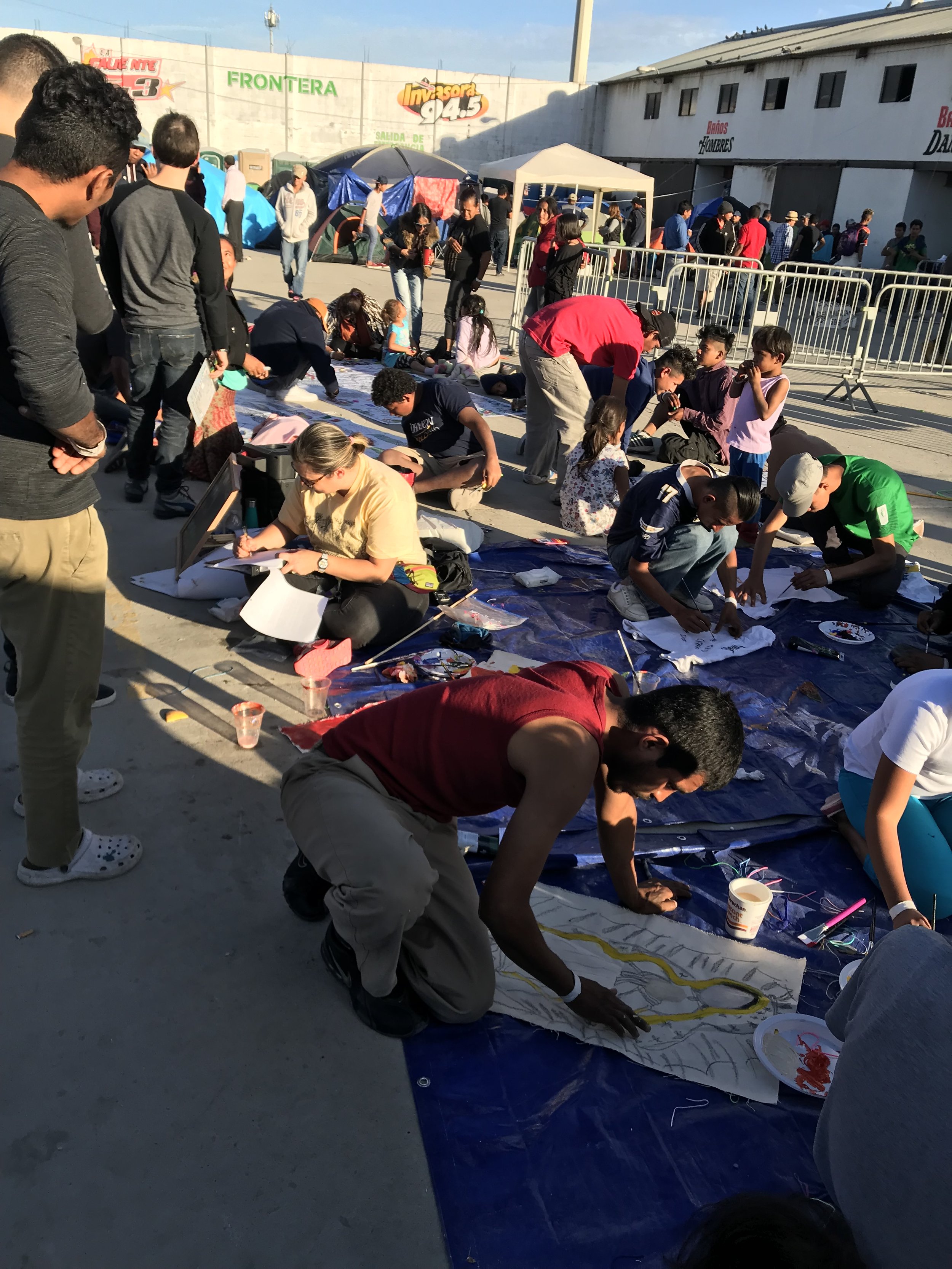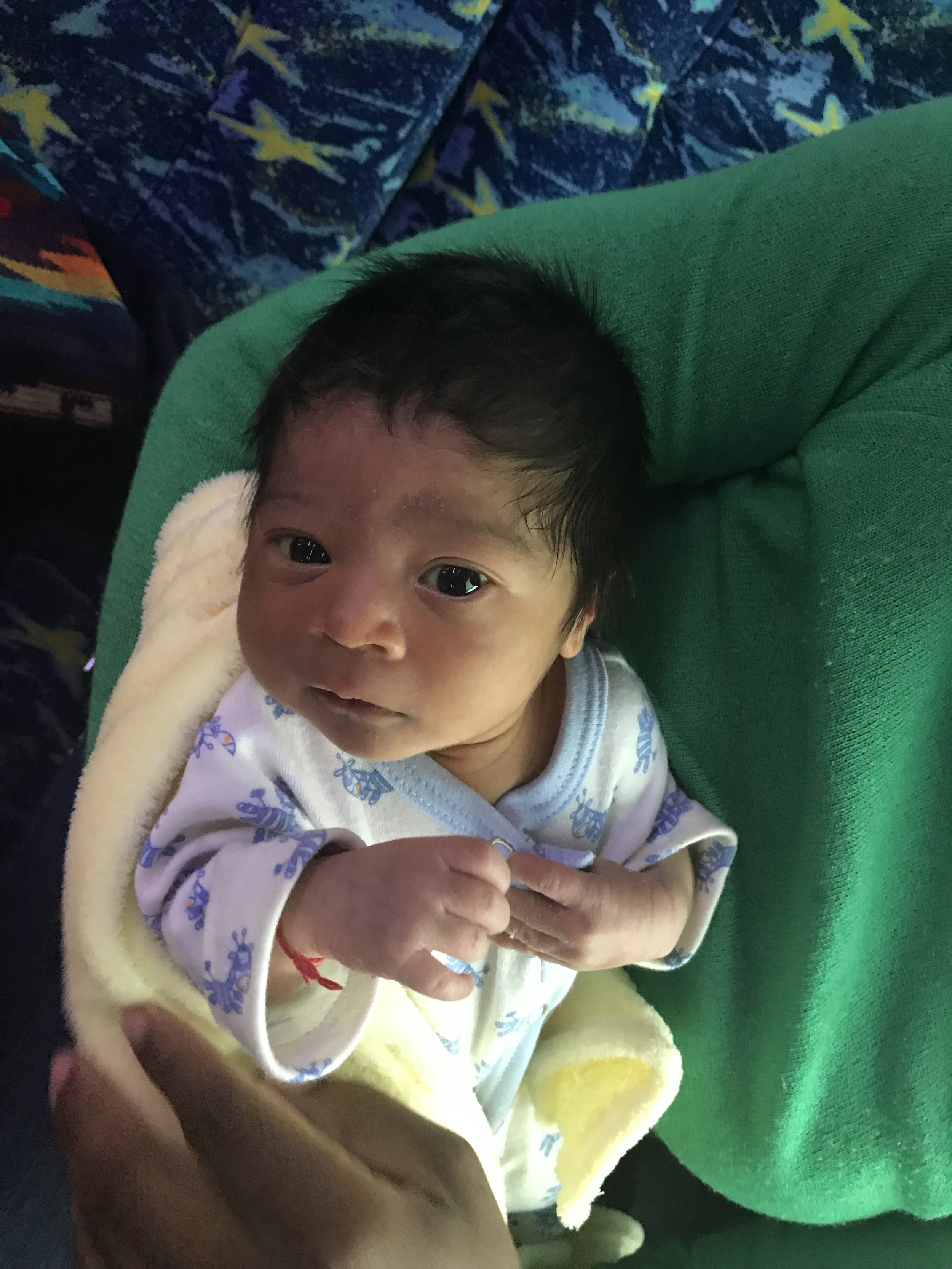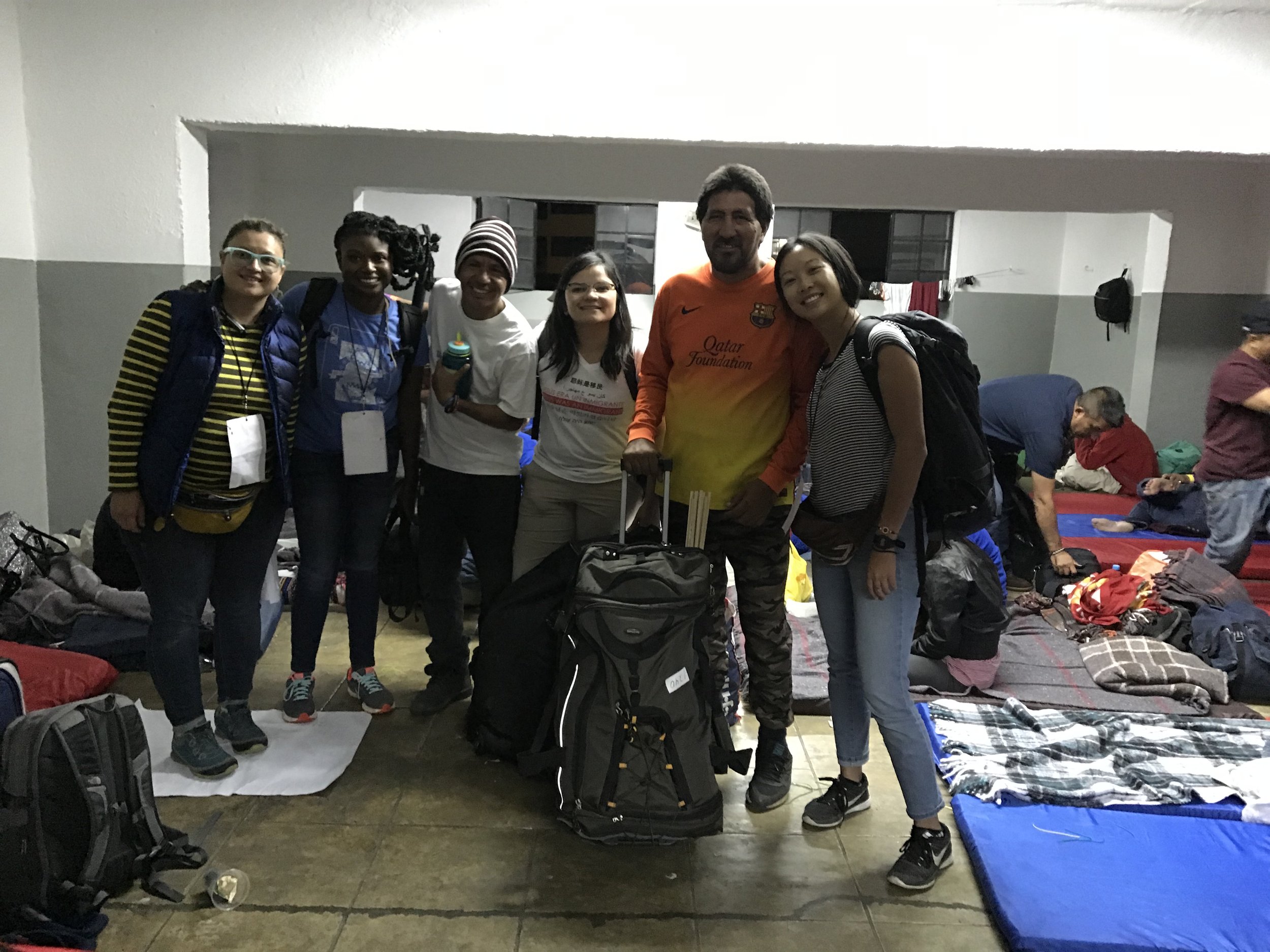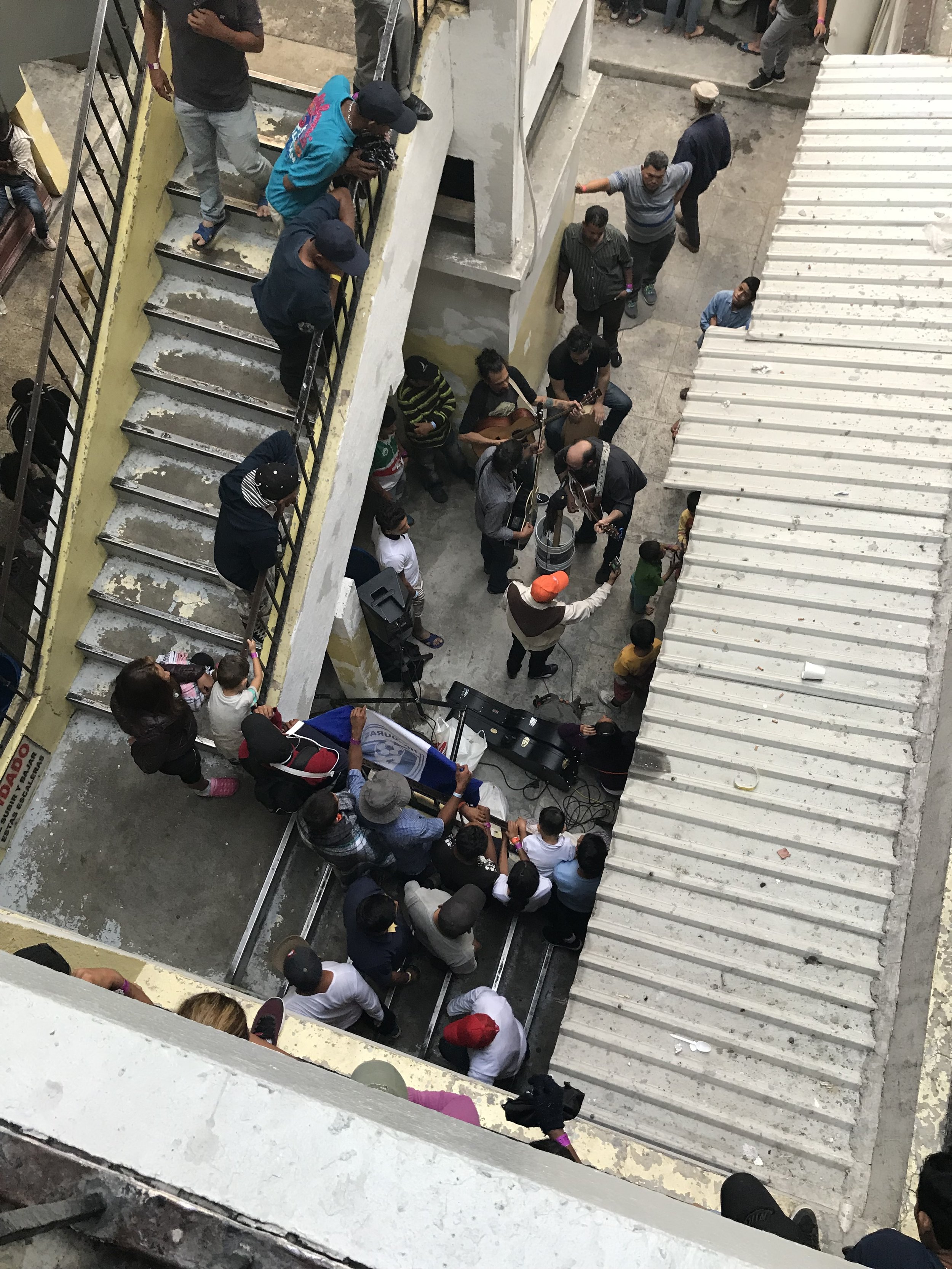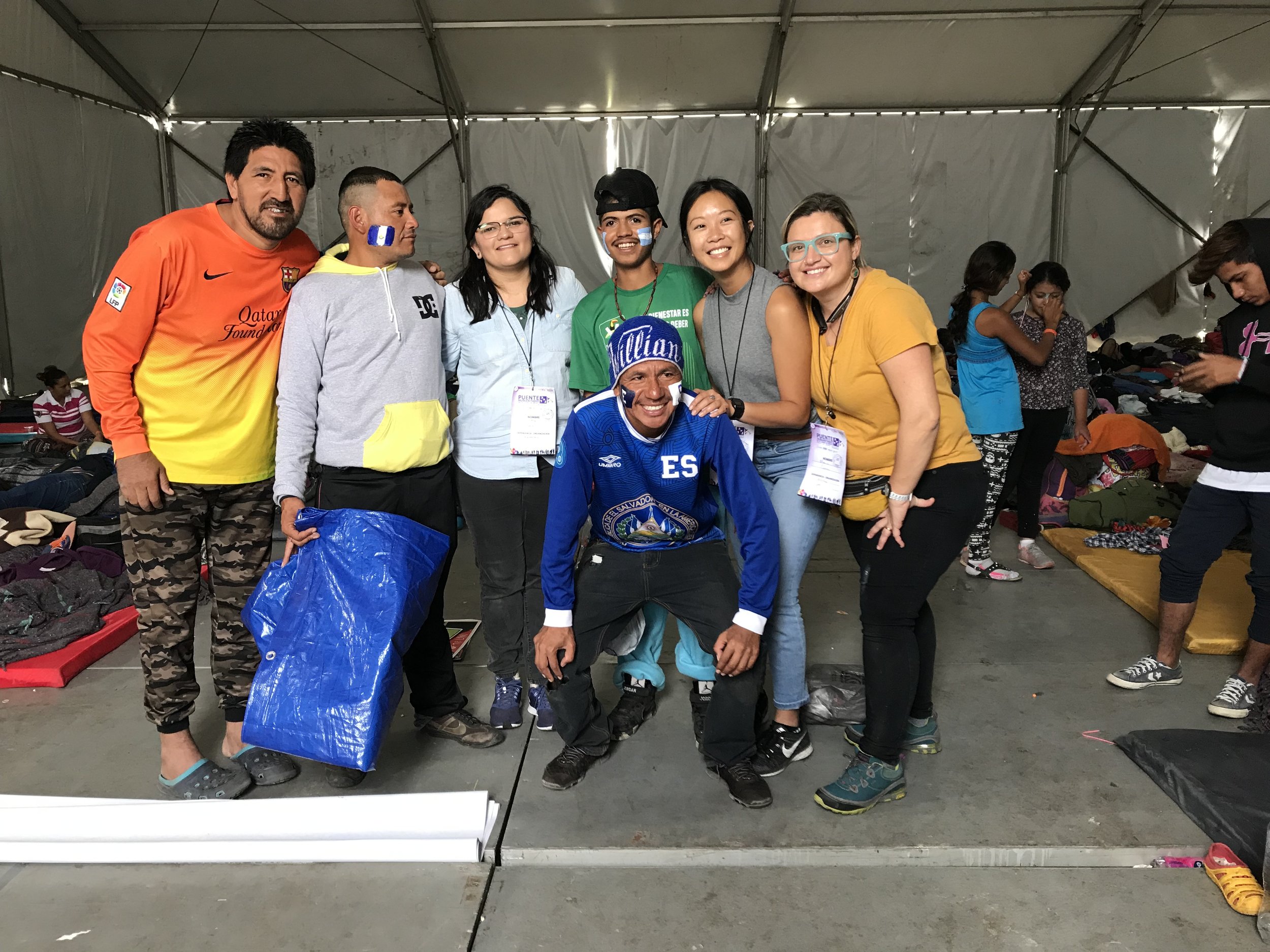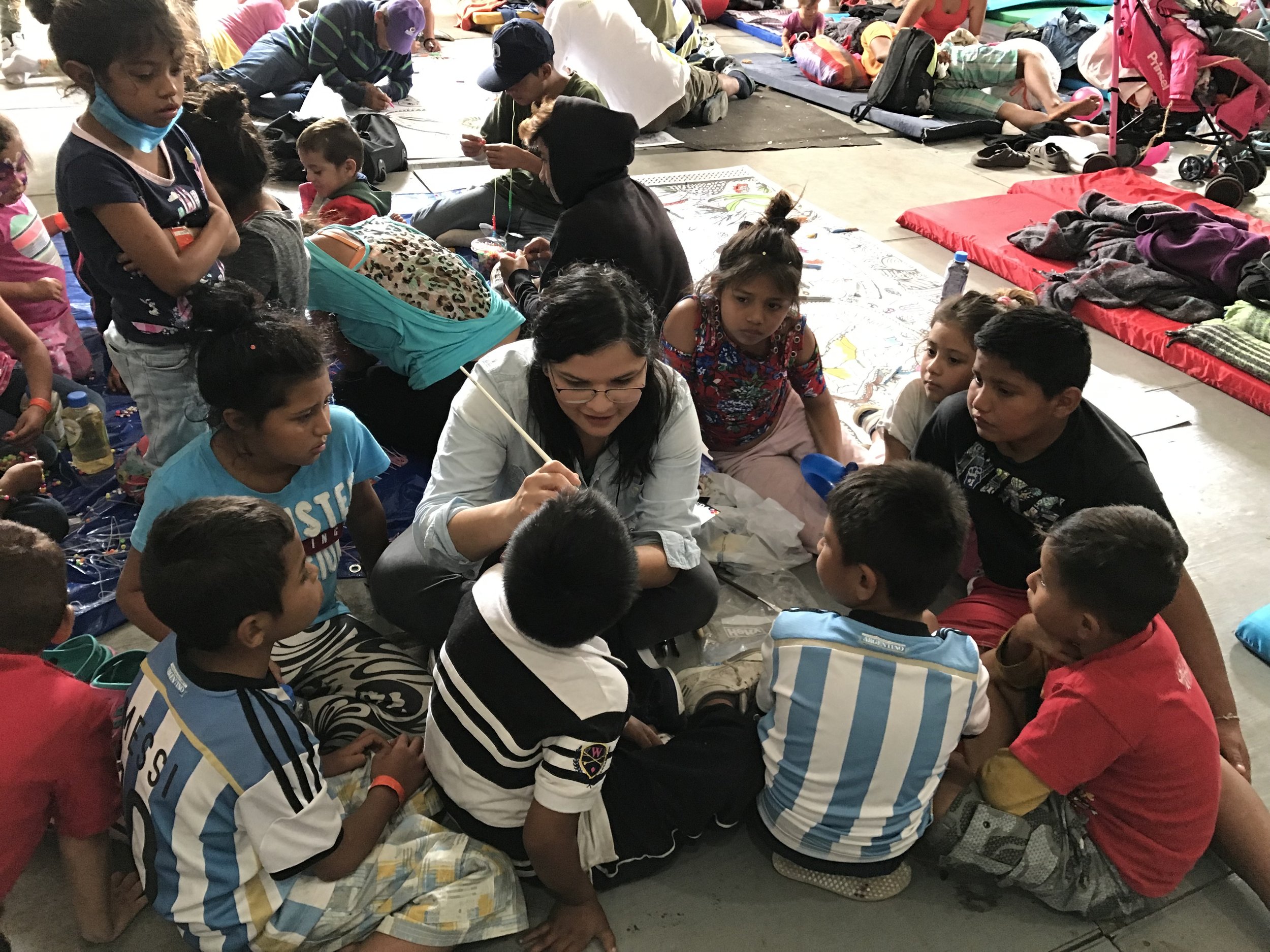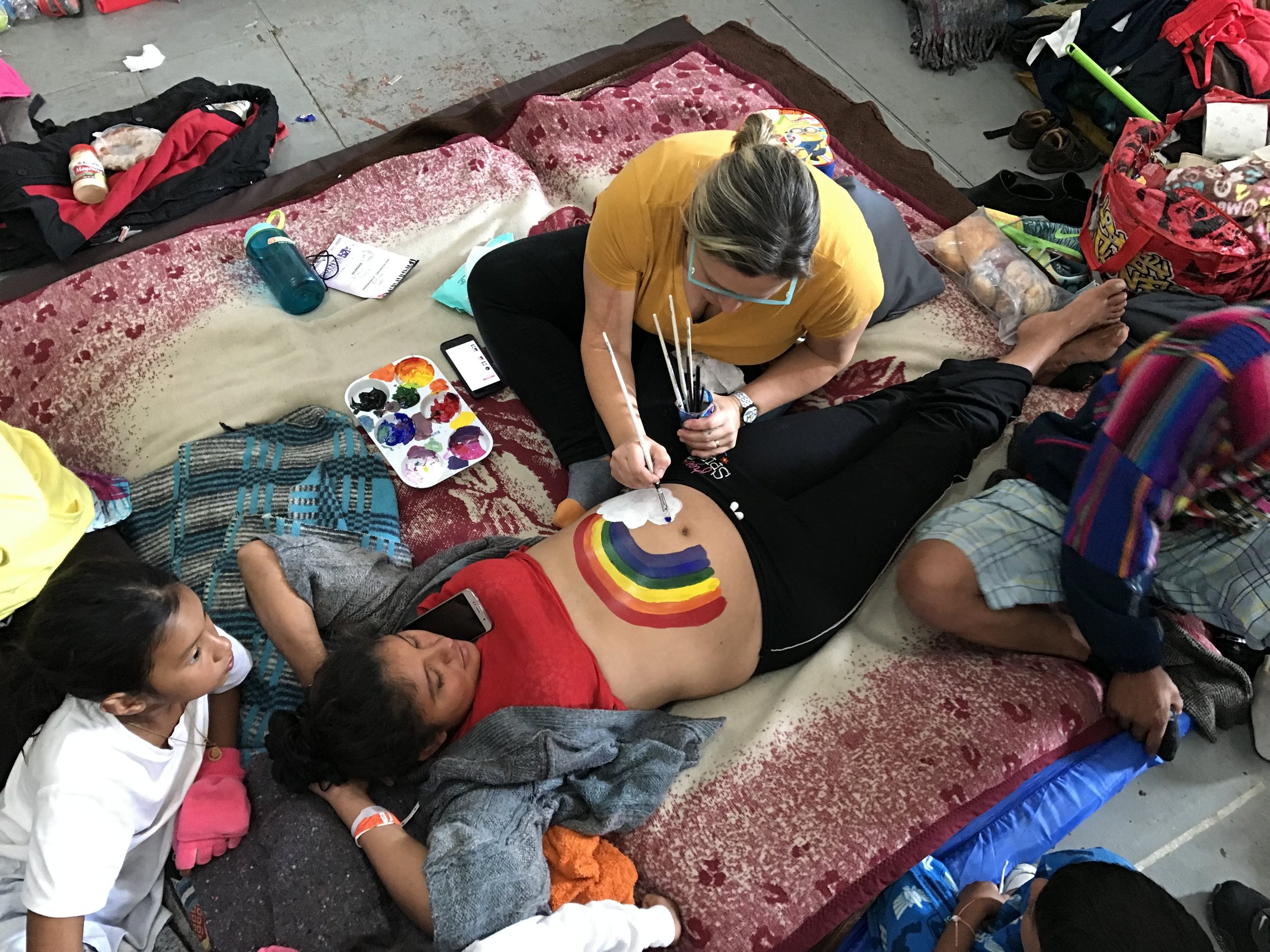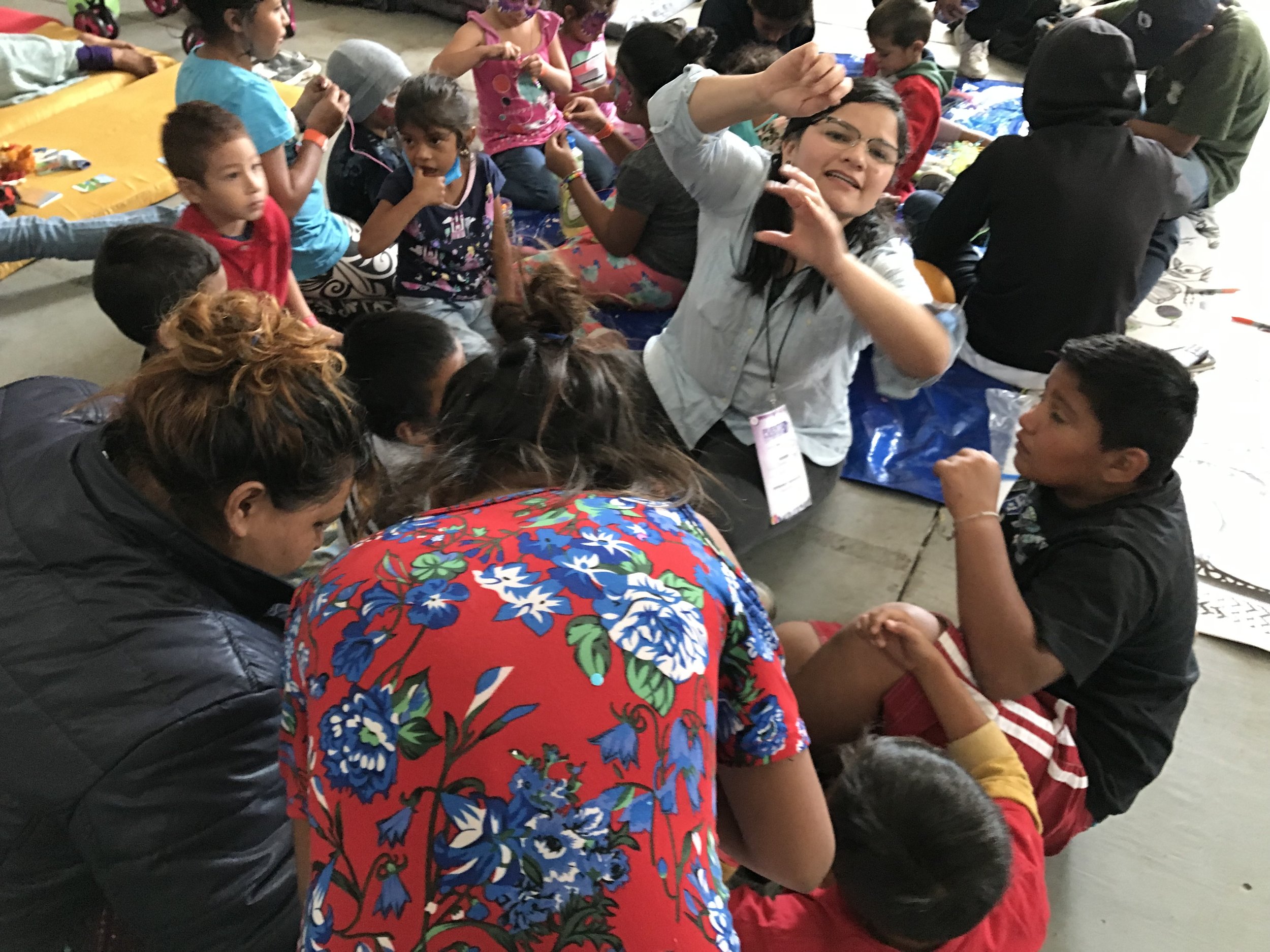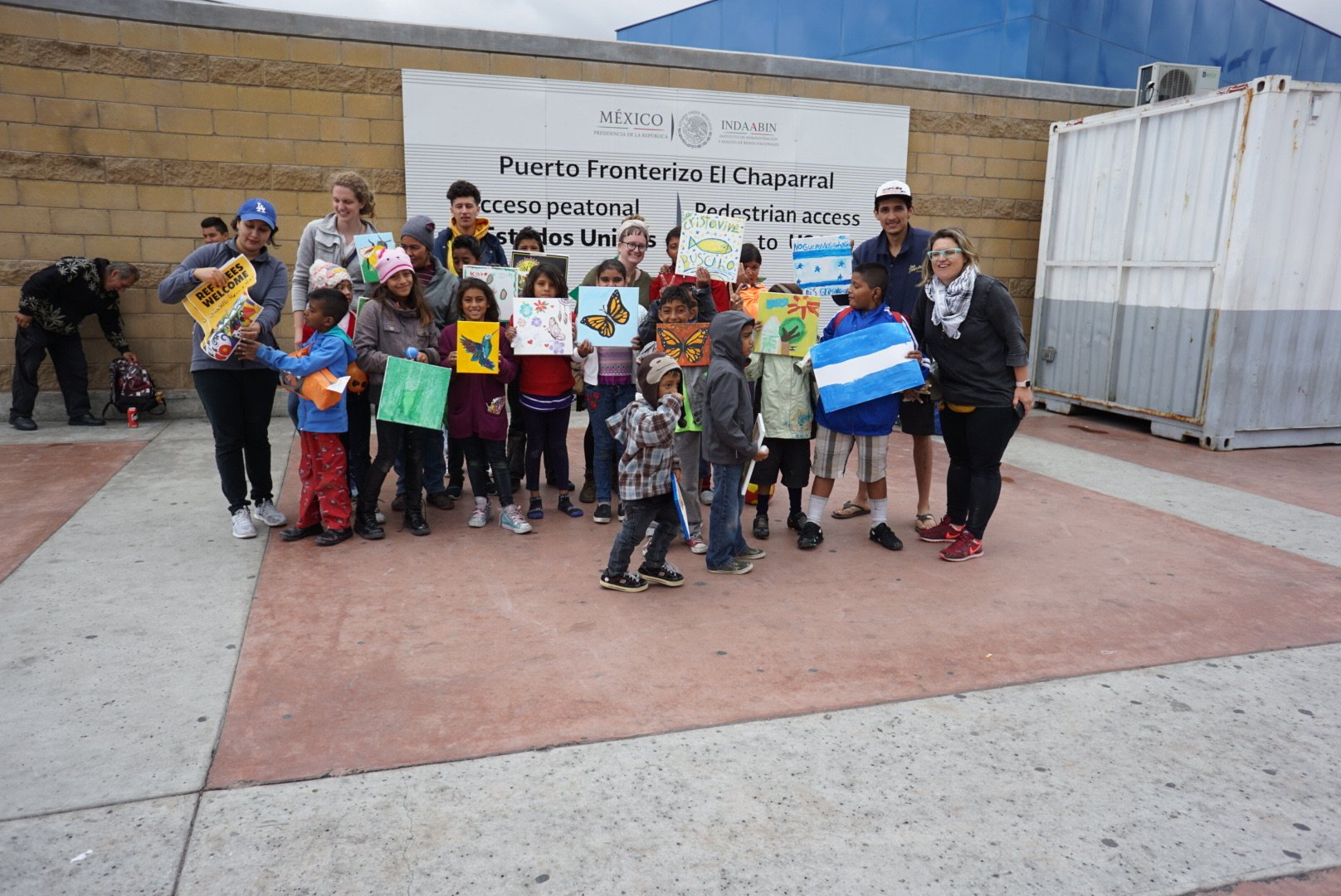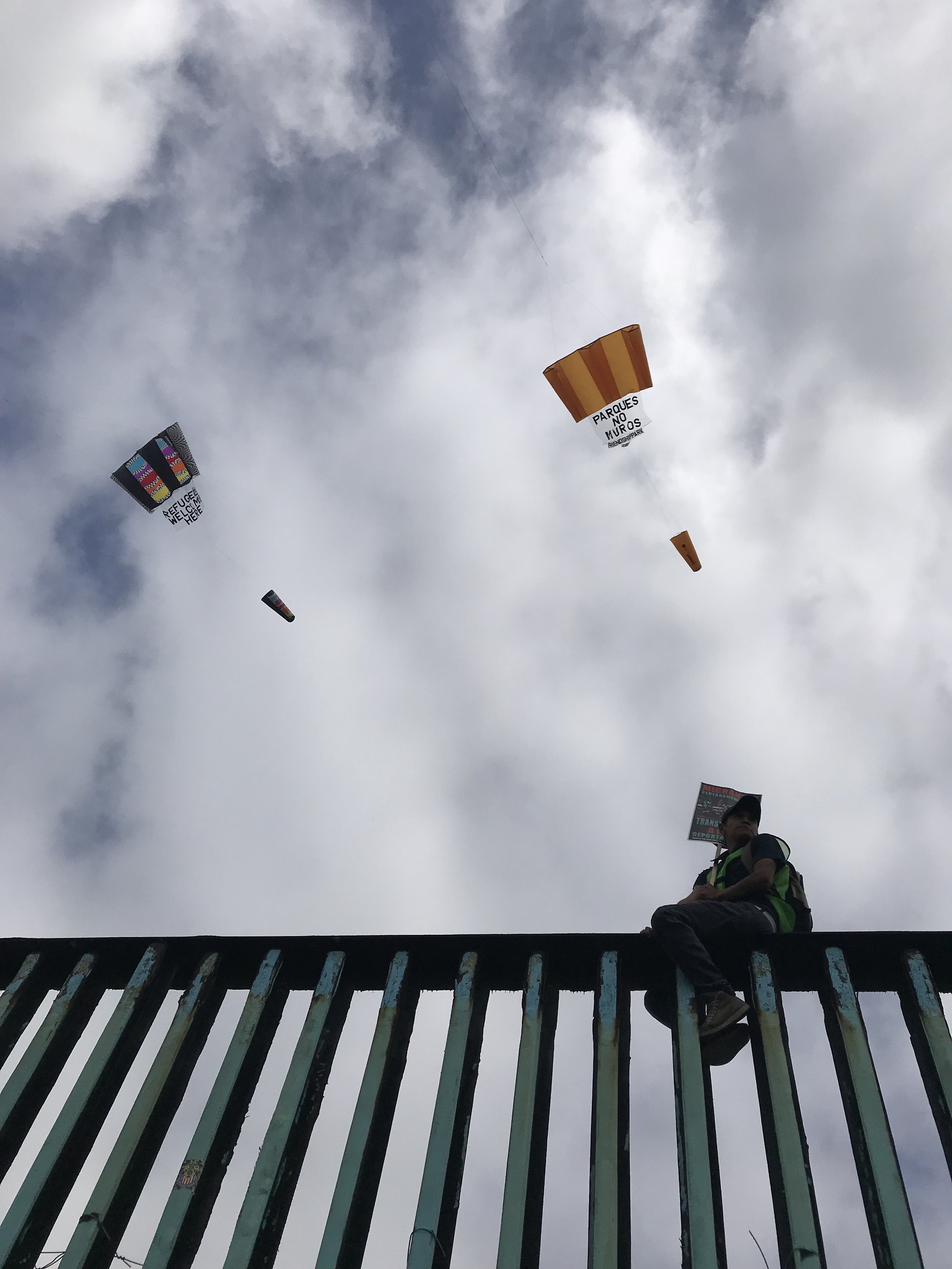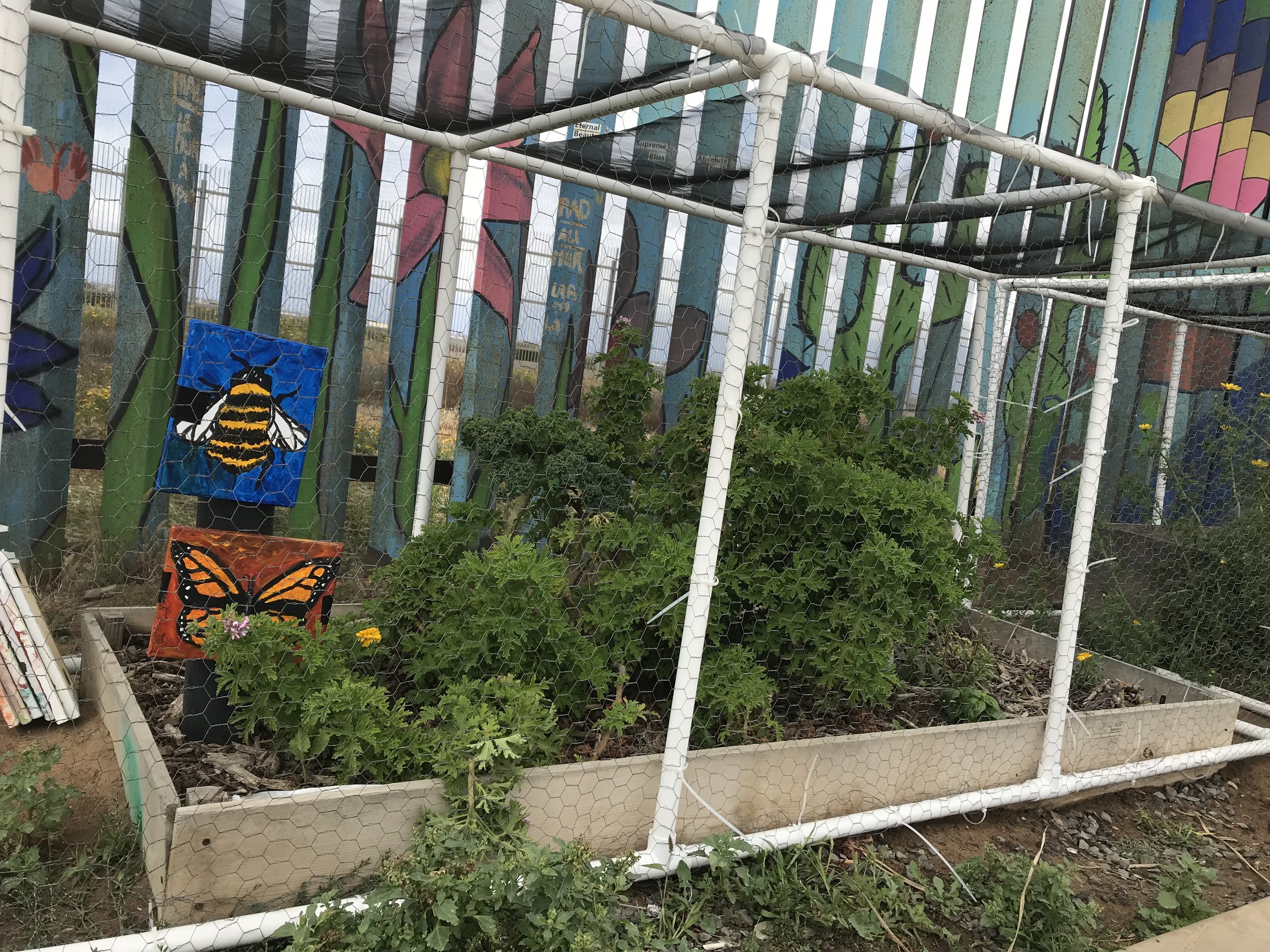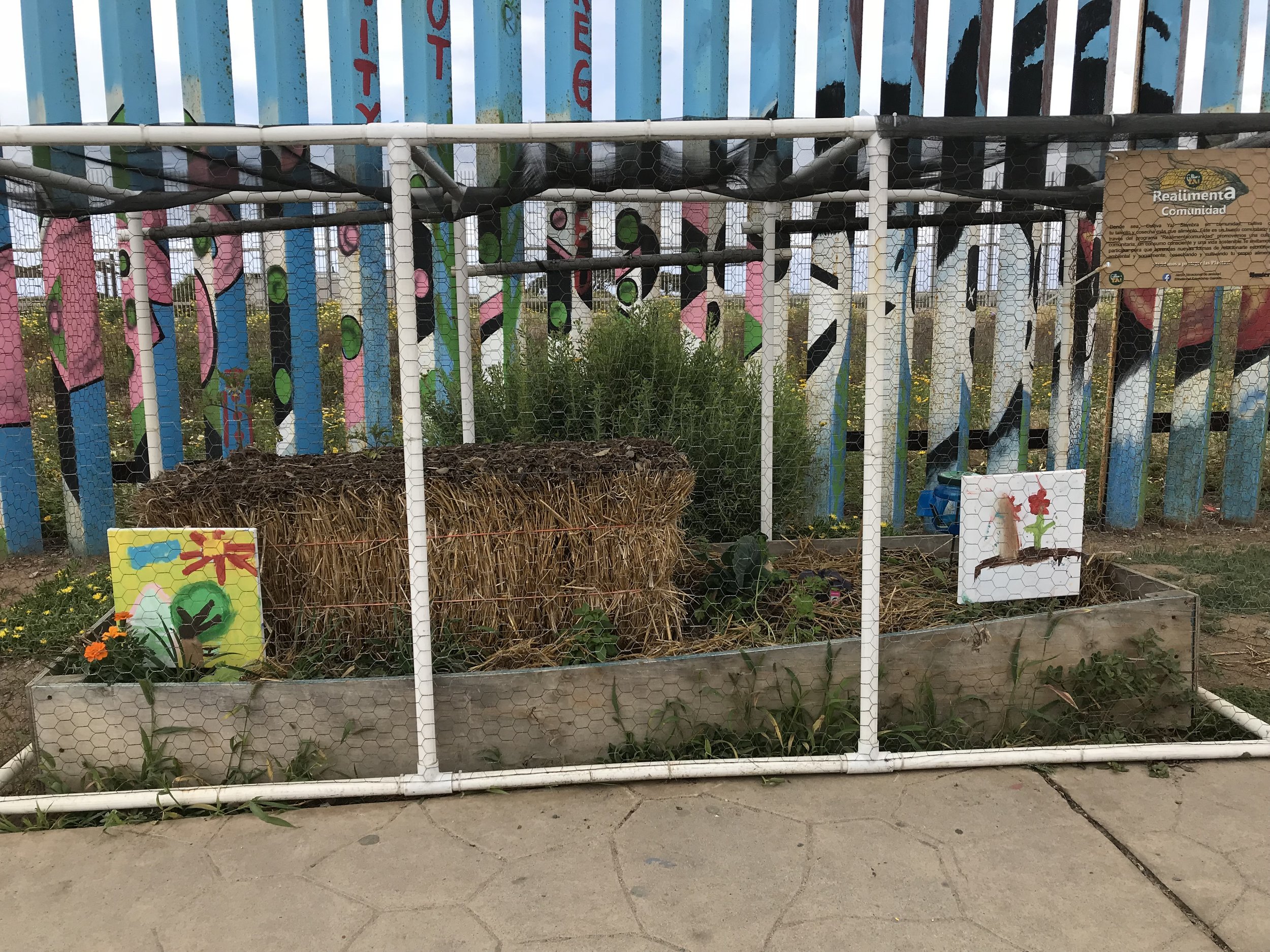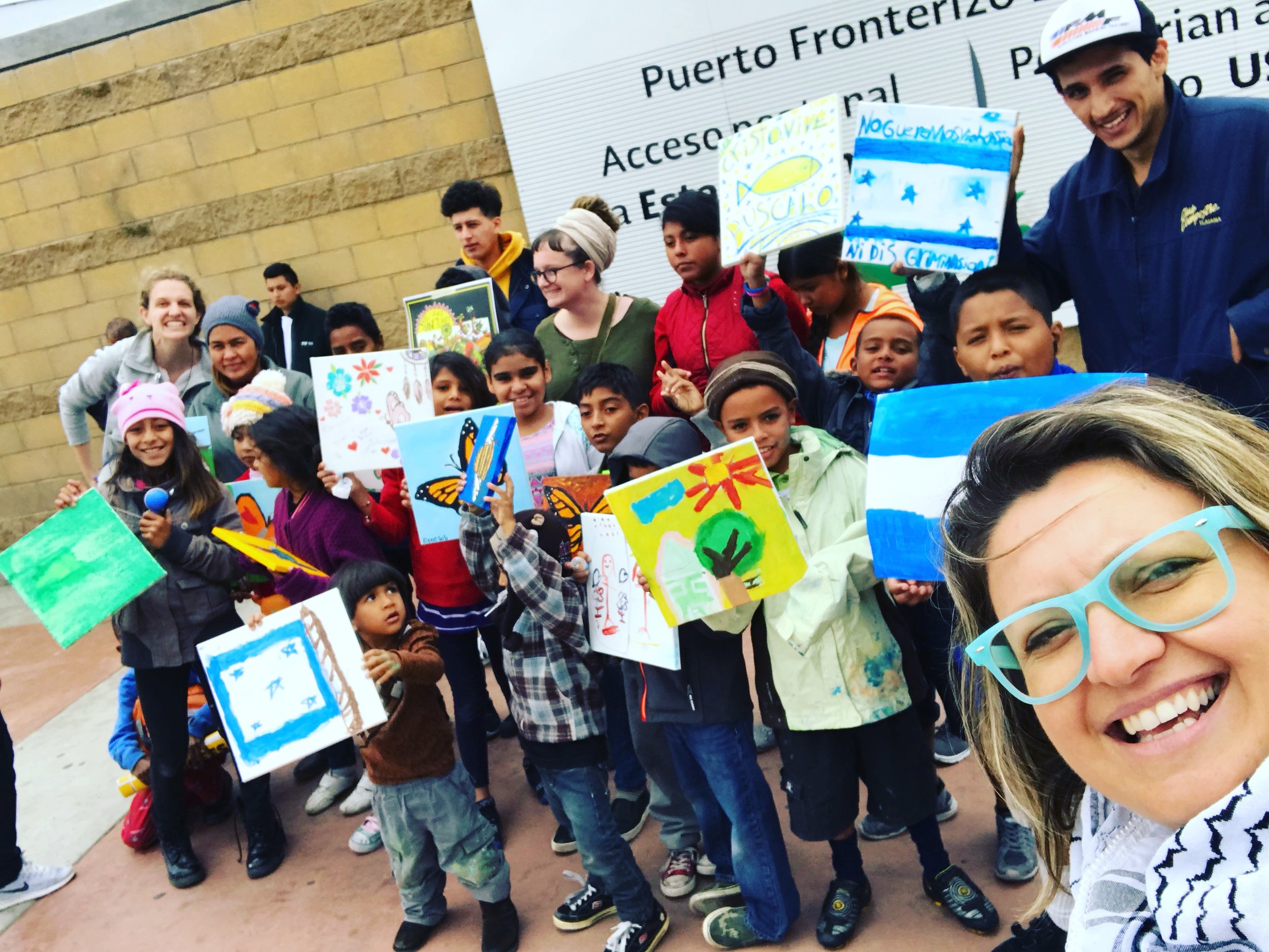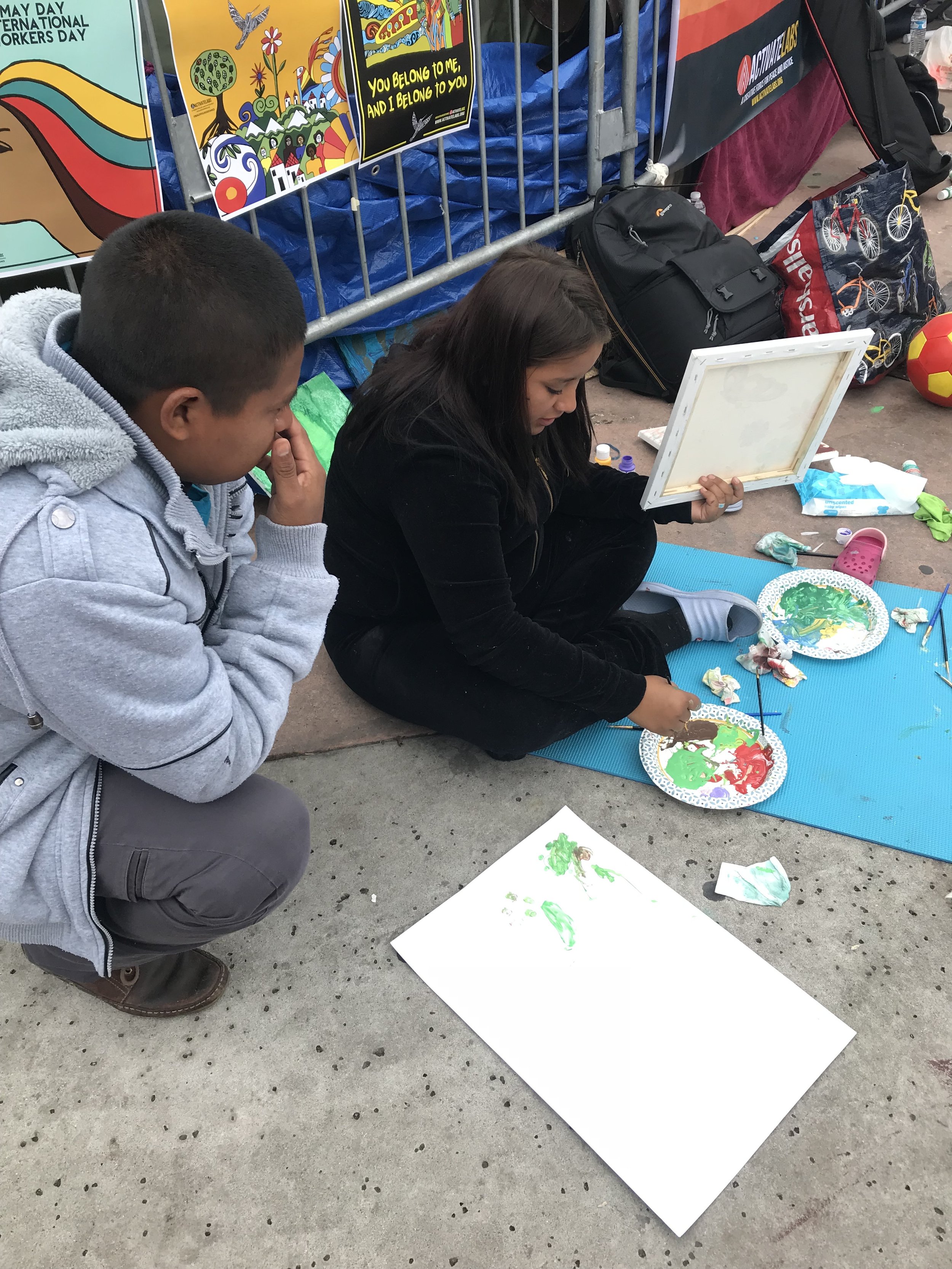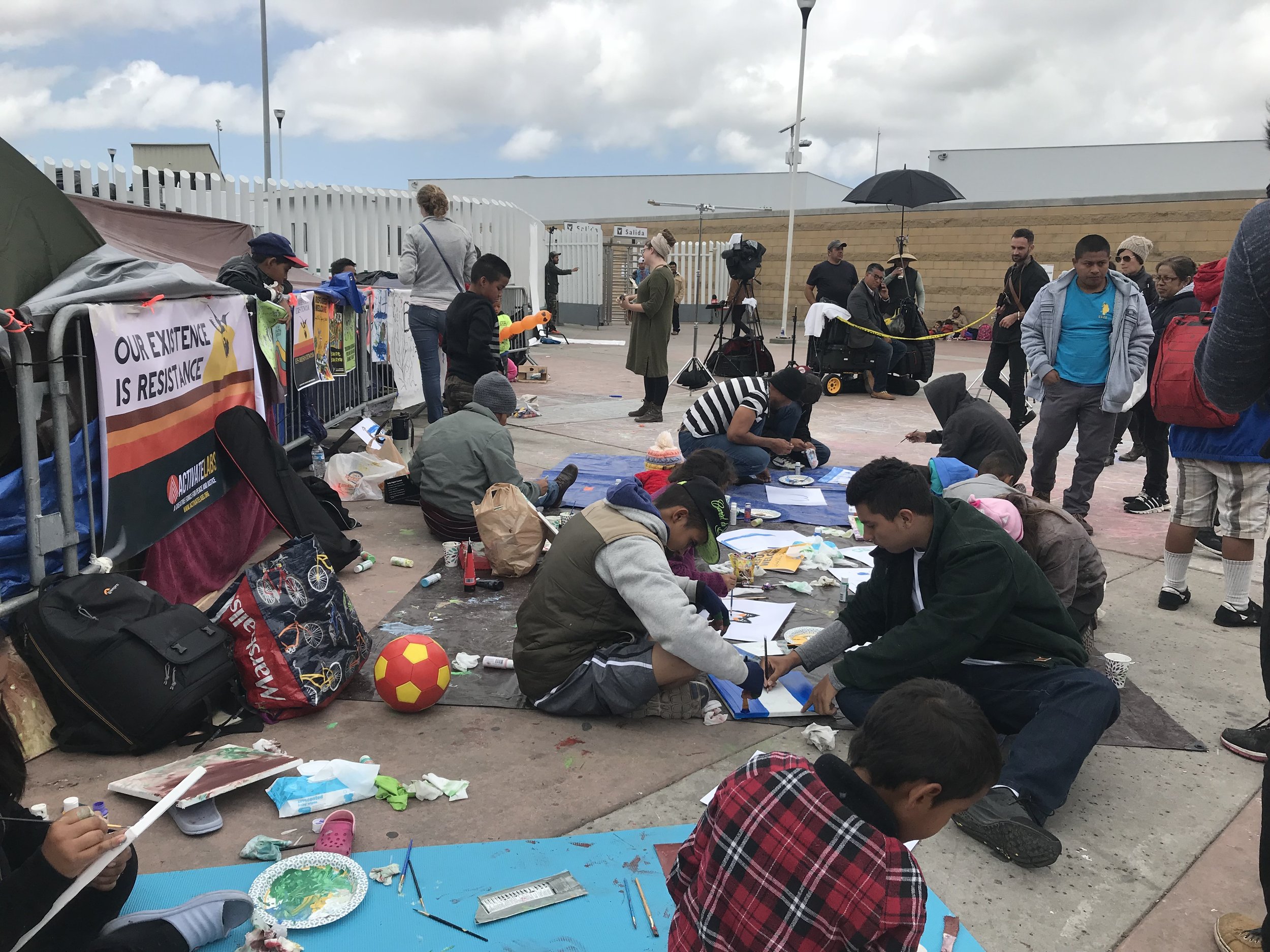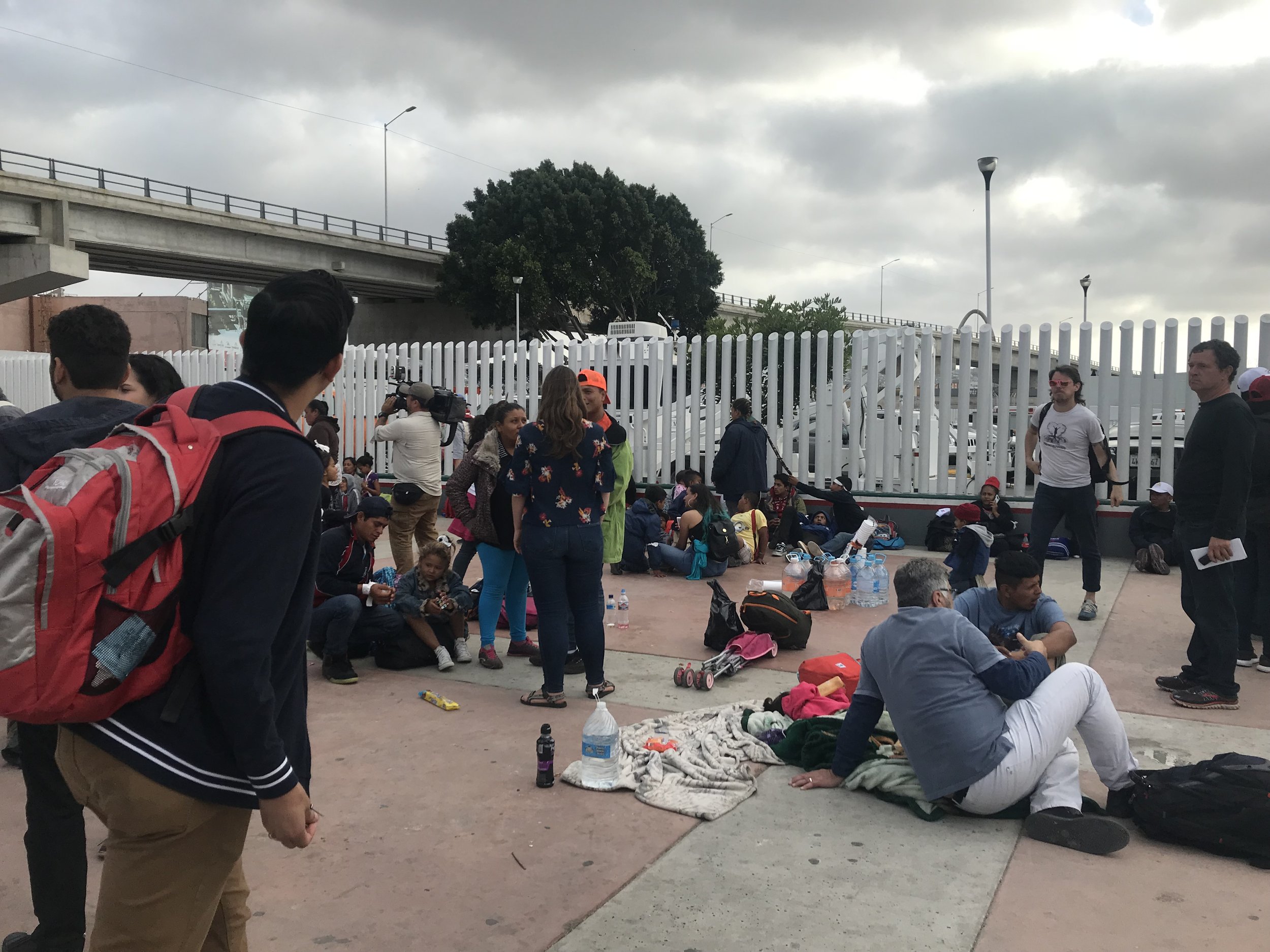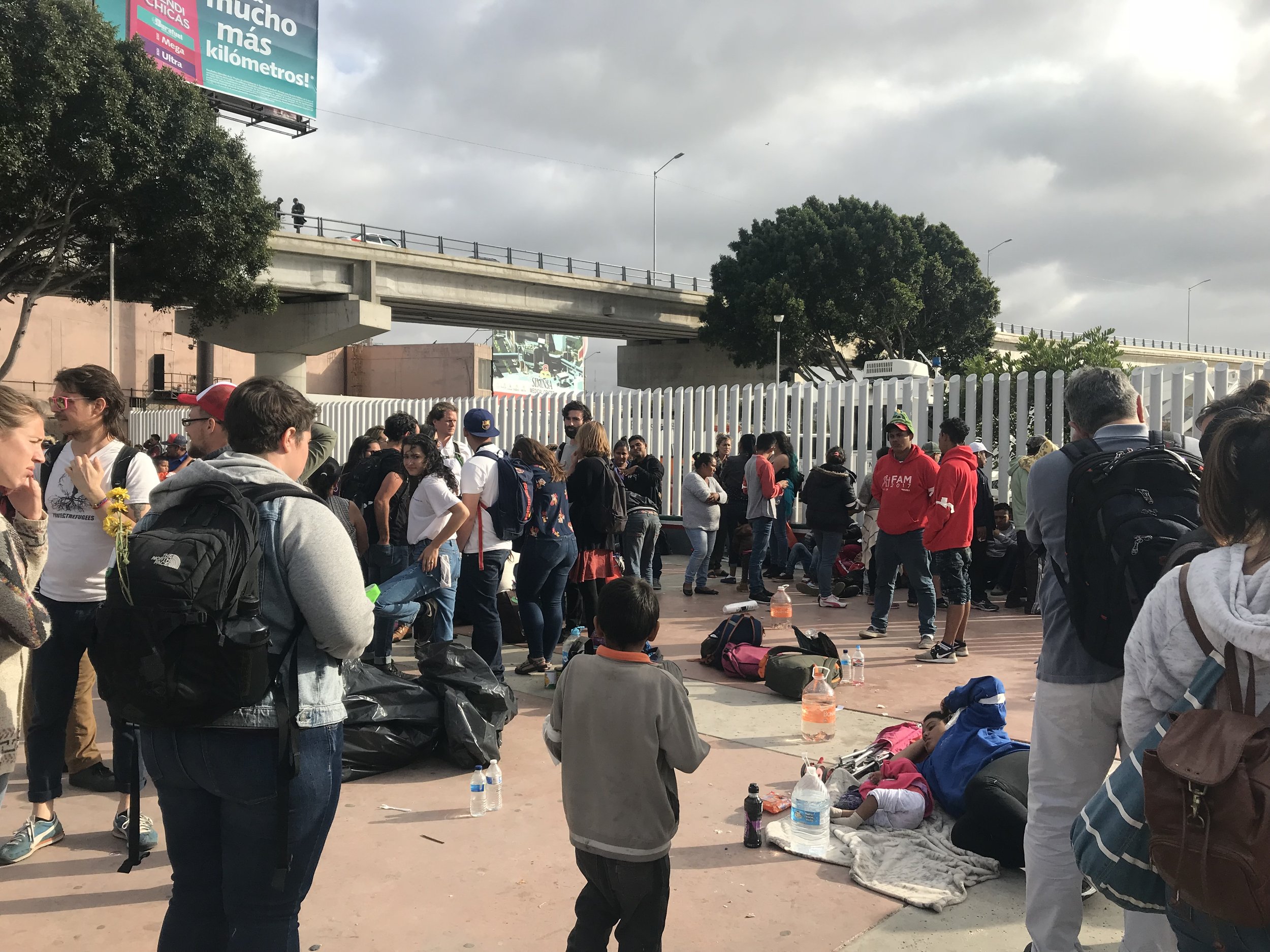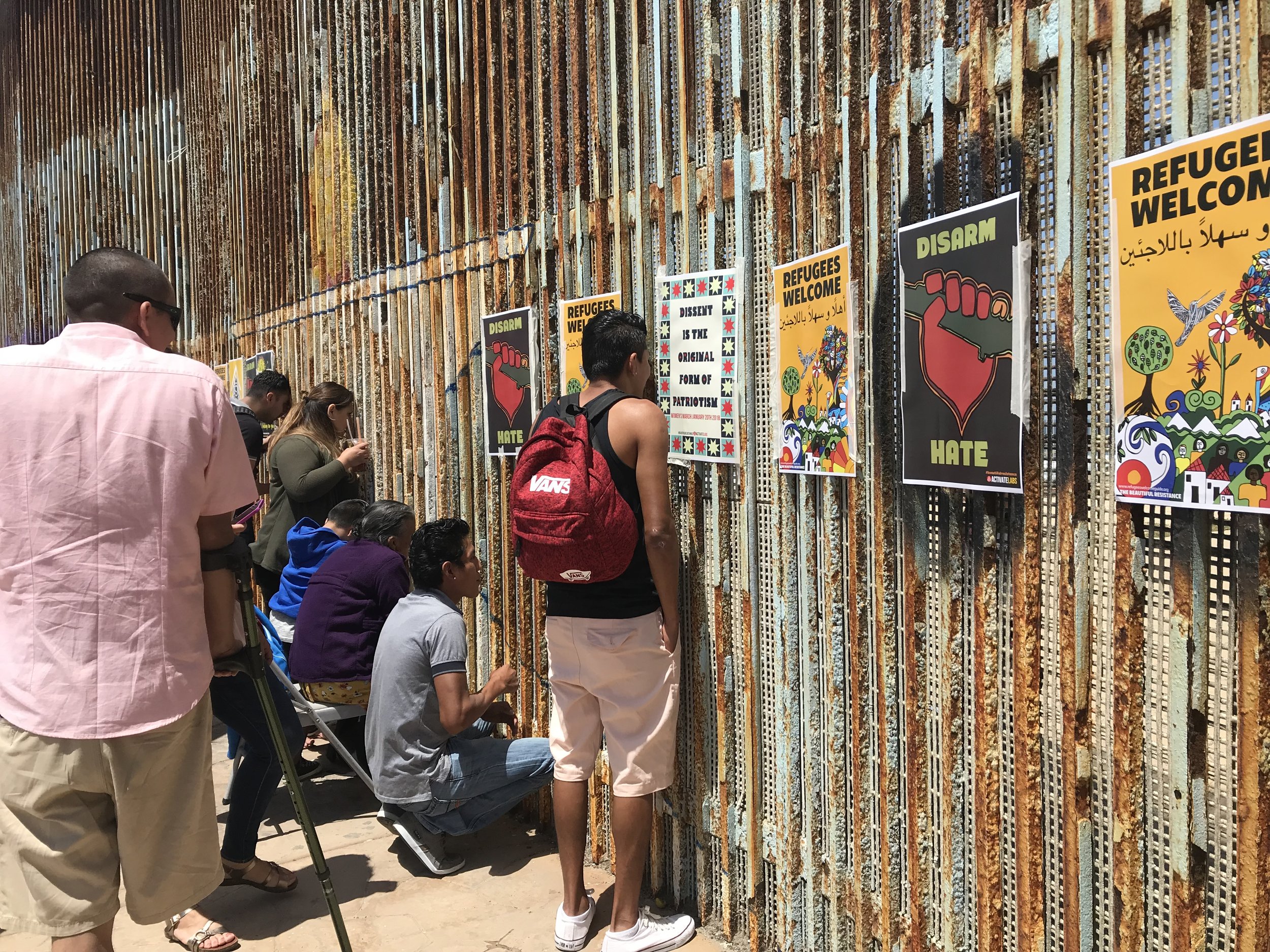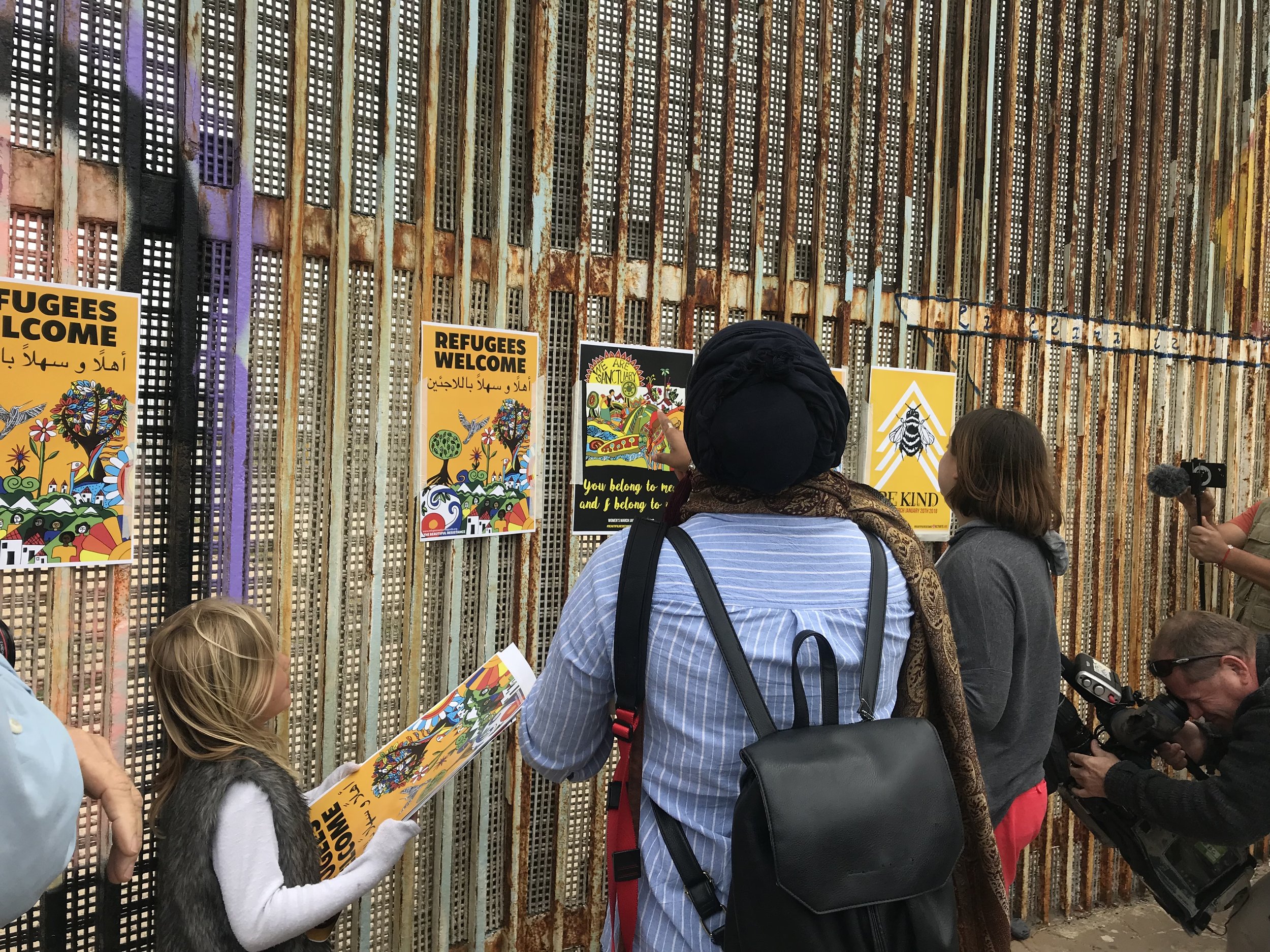Peace Activations
The Peace Tank
Case Study: The Peace Tank — Art as Resistance, Movement as Vision
In a bold and visionary collaboration, Activate Labs—alongside movement partners like Día de Los Muertos DC and +Peace—designed and built the Peace Tank, a 20-foot by 14-foot rolling art installation that has become an iconic symbol in Washington D.C.'s protest landscape. Built as a direct call to defund the Pentagon and reimagine our priorities beyond war and militarization, the Peace Tank has become both a mobile platform and a movement artifact—rallying people around justice, peace, and collective liberation.
The Peace Tank emerged in response to decades of inflated military budgets, ongoing global conflicts, and the normalization of war as a political tool. With the U.S. military-industrial complex spending over $800 billion annually, activists and artists from across sectors came together to challenge the cost of war—not just in money, but in lives, communities, and human dignity. The tank was intentionally subverted: instead of steel and camouflage, it was covered in vivid, oversized paper flowers, hand-painted banners, and peace slogans—transforming a machine of war into a vehicle of imagination and resistance.
Built from reclaimed materials and powered by a team of artists, engineers, and organizers, the Peace Tank took to the streets during some of the most critical social movements of recent years. It rolled through actions calling for Palestinian liberation, climate justice, immigrant rights, an end to genocide in Ethiopia, the defense of Colombian activists, and national mobilizations to divest from war and reinvest in communities. It became a recurring presence at marches, rallies, and public art installations across Washington D.C.—a bold, joyful refusal of militarism.
The Peace Tank has also been featured in major news outlets and social media, drawing public attention not only to the causes it represents, but also to the power of art to disrupt and reframe dominant narratives. For many, it offered a glimpse of what it might look and feel like to live in a world without war—a future where tools of destruction are reimagined as platforms for collective dreaming and organizing.
Importantly, the Peace Tank was never meant to be a one-time installation. It was designed to belong to the people, maintained by local volunteers and movement leaders who continue to mobilize it across D.C. streets. Whether it's stationed outside the Capitol during a budget hearing, anchoring a climate justice rally, or carrying youth speakers during an immigrant rights march, the Peace Tank serves as a literal and metaphorical stage for the peace movement.
This case study demonstrates the potential of creative organizing at scale—how bold visual storytelling, community-led design, and symbolic infrastructure can create a movement artifact that galvanizes action, unites issues, and offers a vision of what peace can look like. As long as there is war, the Peace Tank will roll. And as long as there are people committed to justice, it will carry their voices.
Black Lives Matter: Rapid Response Creative trauma healing spaces on the streets
Case Study: Peace at the Plaza — Activating Creative Resistance in the Heart of Uprising
In the summer of 2020, amidst the global reckoning sparked by the murder of George Floyd, Activate Labs joined with coalition partners to transform Black Lives Matter Plaza in Washington D.C. into a sanctuary for peace, healing, and collective resistance. From June through the fall of that year, while the streets surged with grief, outrage, and calls for justice, Activate Labs helped lead a powerful series of Peace Activations—intentionally carving out space in the center of civil unrest to ground people in creativity, connection, and joy.
We called this effort Taking Space for Peace—a declaration that peace is not passive. It is active, defiant, and alive, especially in moments of crisis. With art supplies, music, and radical imagination, we built an open-air peace hub where thousands of people gathered to create, reflect, and build community. We hosted drum circles, art builds, mask-making stations, live music, and collaborative installations like the Truth Wire—a storytelling wall where people shared personal reflections, demands, and affirmations.
One of our most powerful contributions was a series of massive banners featuring bold outlines of messages like “Defend Black Life” and “Build Peace,” which were collaboratively colored by community members on-site. These banners were later installed on the Wall of Resistance, turning collective grief into a visible expression of hope and commitment. We also distributed hundreds of our Beautiful Resistance posters, which were hung throughout the plaza and taken home by activists and families alike.
The Peace Activations at Black Lives Matter Plaza served multiple roles: they were a space for respite, a platform for expression, and a visual declaration that peacebuilders stand on the frontlines of anti-racist struggle. Our presence affirmed that peace is not the absence of conflict, but the presence of justice—and that building peace is a courageous, ongoing act, even (and especially) when it's hardest.
This case study highlights how Activate Labs uses cultural organizing and participatory art to meet moments of uprising with grounded, accessible, and powerful interventions. In the face of violence and militarized policing, we created a space where liberation could be felt, imagined, and practiced. Peace isn’t only a goal—it’s a method, a stance, and a way of life. And in the heart of Washington D.C., we lived that truth together.
Bridges to Belonging: Creative trauma healing spaces on the borderlands
From Spring 2017 through Summer 2019, Activate Labs led a bold and imaginative campaign of creative resistance and collective care across the U.S.-Mexico borderlands called Bridges to Belonging: We Are Sanctuary. This initiative responded to the growing crisis of displacement and dehumanization of Central American migrants with a holistic and humanizing approach—offering not only accompaniment and advocacy, but also healing-centered, art-based interventions grounded in dignity, creativity, and solidarity.
Activate Labs mobilized dozens of artists, organizers, and volunteers to respond rapidly to the humanitarian and spiritual needs of asylum-seekers fleeing violence, poverty, and political instability in Honduras, Guatemala, and El Salvador. These caravans—refugee journeys of collective migration—emerged in the wake of protracted imperialism and deepening climate and economic crises in the Central American Northern Triangle. In the face of U.S. policies of militarized borders, child separation, and mass detention, Activate Labs took action to meet migrants not only with food and legal support, but also with joy, art, and healing.
Over the span of two years, the Bridges to Belonging initiative reached multiple points across the border and along the migrant journey. In McAllen, Texas, Activate Labs deployed a team of seven volunteers to support families newly released from ICE detention under the Trump administration’s “Zero-Tolerance” policy. In partnership with Matthew 25:35, we served over 1,000 hot meals over seven nights and hosted art and music workshops for children. Through painting, dance, karaoke, and storytelling, we helped create spaces of expression and healing for families still reeling from separation and detention.
We expanded this work through additional activations in Reynosa, Mazatlán, and Mexico City, accompanying the refugee caravan and bearing witness through participatory photography, video, and advocacy. We brought materials, music, and murals into shelters and camps, offering children and families the “ingredients of joy” as they faced grueling uncertainty. Through interactive art-making—such as silk-screening, banner painting, peace flag design, and mask-making—we helped migrant families tell their stories, express resistance, and reclaim visibility.
These creative trauma healing spaces were not only acts of care—they were strategic interventions that transformed liminal, often violent border zones into sanctuaries for peacebuilding and solidarity. We called these installations Rapid Response: Creative Trauma Healing Spaces—a methodology Activate Labs pioneered to integrate public art, participatory theatre, and storytelling into humanitarian and justice-centered responses. These spaces were deployed at detention centers, bus stations, shelters, and encampments, shifting the narrative from victimhood to agency and amplifying refugee voices far beyond mainstream media.
At the heart of Bridges to Belonging was a third channel of response to the refugee crisis. While many efforts focused on legal aid and humanitarian relief, we recognized the absence of trauma healing and cultural engagement for migrants. Our approach addressed the whole person—offering pathways to be seen, known, and heard. We collaborated with key partners including Sojourners, Pueblos Sin Fronteras, Matthew 25, and the Unitarian Universalist Service Committee to carry out year-round actions.
In Los Angeles, Orange County, Washington D.C., Memphis, and Texas, we organized solidarity actions that merged artistic protest with public education and policy advocacy. We produced large-scale signs, murals, and 3D interactive installations that transformed marches and vigils into participatory experiences. We led art builds for thousands, raised silk-screened banners, and mobilized public creativity against deportations and detention centers. In Washington D.C., we brought migrant stories and artwork into congressional briefings and faith-based convenings, ensuring that dignity and storytelling were part of the political conversation.
One major output of the project was a series of six short participatory videos, produced in partnership with migrant youth and families. These 2–3 minute videos were co-designed and filmed by participants, sharing personal accounts of their journeys, struggles, and dreams. We also collected over 100 peace flags, designed and carried by migrants to the border, along with 100 painted mini canvases by children, each representing a voice in the larger tapestry of migration. These works were later presented to decision-makers in D.C. alongside advocacy partners.
The Bridges to Belonging project centered its efforts on three main objectives:
Narrative Change: Shifting the narrative around migrants by uplifting their lived experiences through participatory video, photography, and public campaigns. By reframing stories from a lens of agency and resistance, we challenged dehumanizing media portrayals and built empathy among broader audiences.
Trauma Healing: Creating safe and expressive spaces for psychosocial support through creative practices like theater, games, drawing, music, and storytelling. These activities helped migrants process trauma, reclaim their voices, and find moments of joy amidst uncertainty.
Protection, Accompaniment, and Advocacy: Providing real-time response to urgent needs—whether legal accompaniment, direct support, or physical presence in moments of protest, hunger strike, or crisis. We stood alongside detained migrants, supported youth organizing hunger strikes, and joined calls for justice at the border.
The timeline of our work reflects the depth of commitment:
April 2018: Resistance gardening and creative healing at El Chaparral, Tijuana.
July 2018: Border work in Texas Valley and Reynosa—art, video, storytelling, and advocacy.
November 2018: Caravan accompaniment, peace flags, and participatory media across Mexico.
December 2018: Multiple border visits to deliver trauma healing and collect stories.
December 17, 2018: Art and storytelling delegation to Washington D.C.
January–June 2019: Continued work with migrants in detention in California, Georgia, Tennessee, Mississippi, Massachusettes, and Texas.
This initiative was powered by community, creativity, and love. We believe that resistance can be joyful, that healing is political, and that migrants deserve not only safety—but belonging. Through Bridges to Belonging, we brought visibility to those made invisible, and together, we built sanctuaries of hope in the spaces that needed them most.
Palestine to the Pipeline Solidarity Campaign at standing rock
Activate Labs partnered with the Arab American Civic Council and the Palestinian Youth Movement to build a bridge between the Palestinian struggle for liberation and the Indigenous resistance at Standing Rock. Through the Palestine to the Pipeline initiative, we spent four days on-site bringing the spirit of the Beautiful Resistance to life—connecting two communities fighting against settler colonialism, land theft, and cultural erasure.
As part of this cultural and political exchange, we carried suitcases filled with Palestinian kufiyas—symbols of resistance and identity—to gift to Indigenous elders and water protectors. These sacred offerings were a gesture of solidarity, honoring the shared histories of resilience and the continued fight for sovereignty and self-determination. By linking these narratives, the initiative illuminated the recurring patterns of oppression faced by colonized peoples—and, more importantly, the powerful possibility of collective strength and unity across struggles. Together, we affirmed that liberation is interconnected, and that healing and resistance grow stronger when movements stand side by side.
Leading the Artist Street Team for the 2018 women’s March
Activate Labs was a core member of the Orange County Women’s March planning committee in both 2017 and 2018, contributing creative strategy, visual storytelling, and digital communications to help shape one of the region’s largest mobilizations for justice. As part of our commitment to intersectional movement-building, we led the development and management of the March’s social media platforms, helping amplify diverse voices, build momentum, and mobilize thousands of participants across Orange County and beyond.
In addition to digital engagement, Activate Labs played a key role in transforming the physical space of the march into a powerful visual experience. We designed and produced a striking series of 16 original posters that uplifted the intersectional values at the heart of the Women’s March—centering on gender justice, racial equity, immigrant rights, disability justice, LGBTQ+ liberation, and more. These posters, which have since become iconic symbols of local activism, remain available for purchase in Southern California and can be shipped by special request.
Beyond print media, our team contributed large-scale visual installations that brought the spirit of resistance to life in the streets. This included bold banners, hand-painted signs, and interactive 3D art pieces designed for public engagement and photo documentation. We worked with local artists and volunteers to create murals and message walls where participants could share their stories, dreams, and demands. For us, art is not an accessory to protest—it is an integral part of building a shared narrative, inviting participation, and shifting culture. Through the Women’s March, we brought our Peace Design™ approach into public space—fusing creativity, organizing, and collective visioning into a truly Beautiful Resistance.




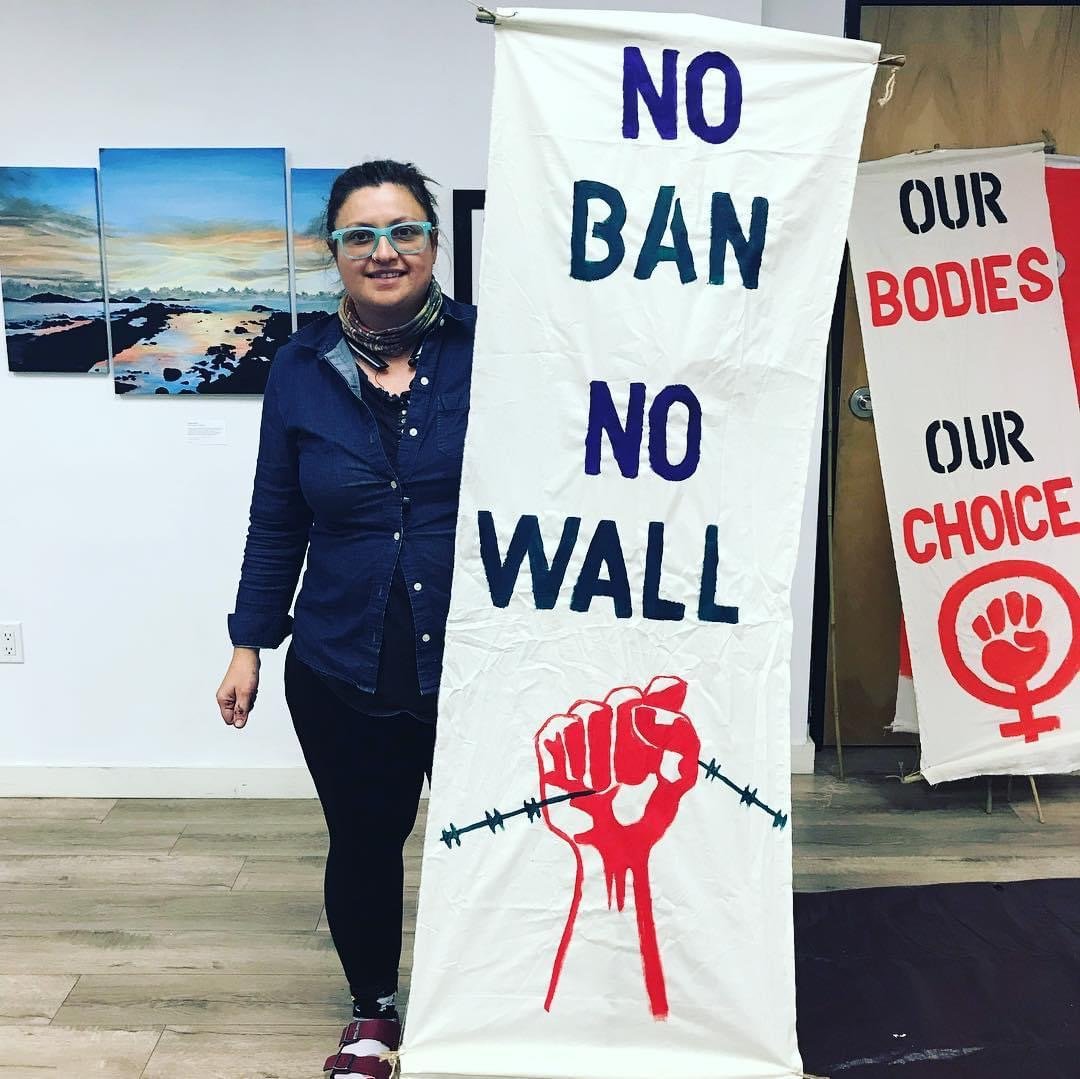


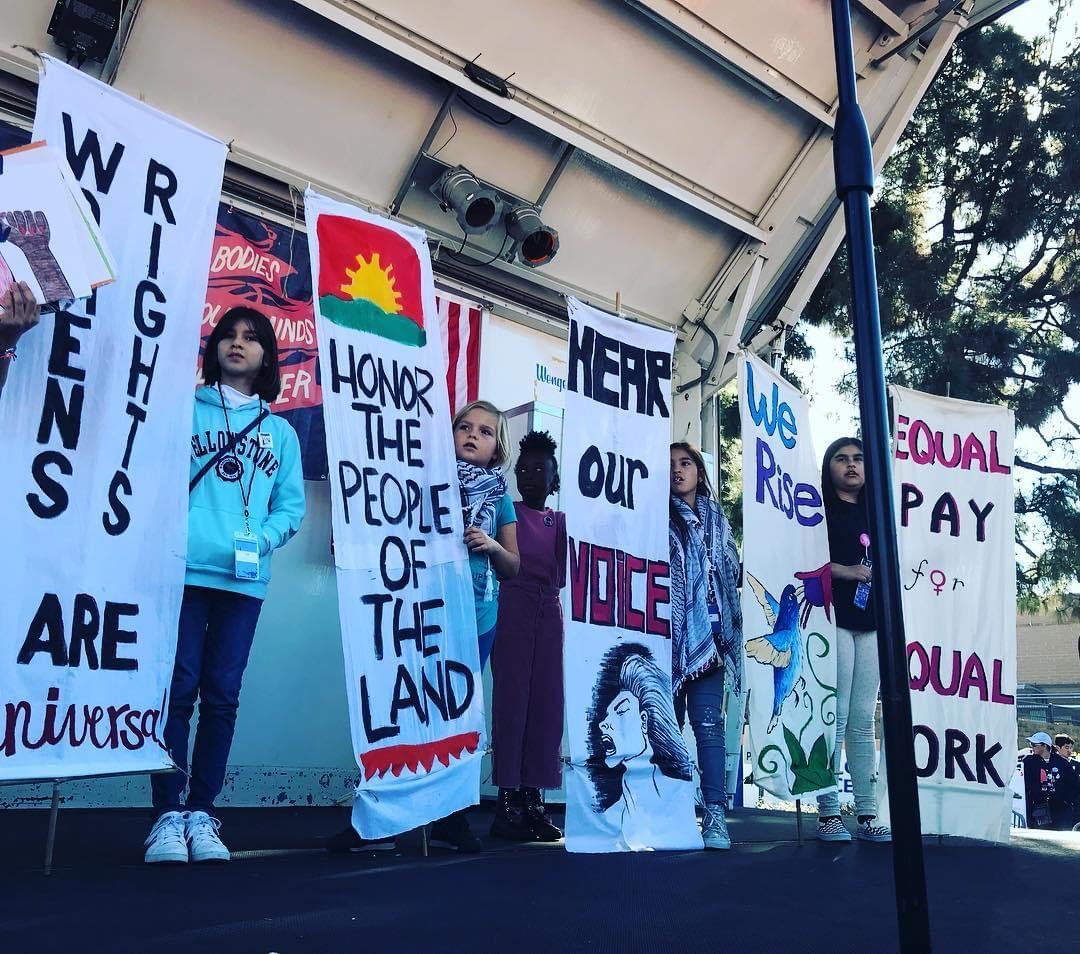

Refugees Welcome - Peace Activations against the Travel Ban and Accompanying refugees




In January 2017, Activate Labs partnered with a coalition of advocacy and immigrants’ rights groups to respond to the Trump administration's travel ban against immigrants and refugees arriving from Iraq, Iran, Sudan, Somalia, Libya, Yemen, and Syria. Activate Labs created poster art and distributed more than 200 posters at two rallys. These rallies worked to reunite an Iraqi refugee with cancer to her family in Orange County and released a family of 6 from Afghanistan. Activate Labs led a rapid response action for more than 10 hours at the request of partners and refugee resettlement agency World Relief,, in addition to working on rallying for the multiple iterations of the Muslim Ban released after January. The art produced in this context is still being distributed and reused throughout rallies and campaigns within the refugee and immigrants rights movement.

